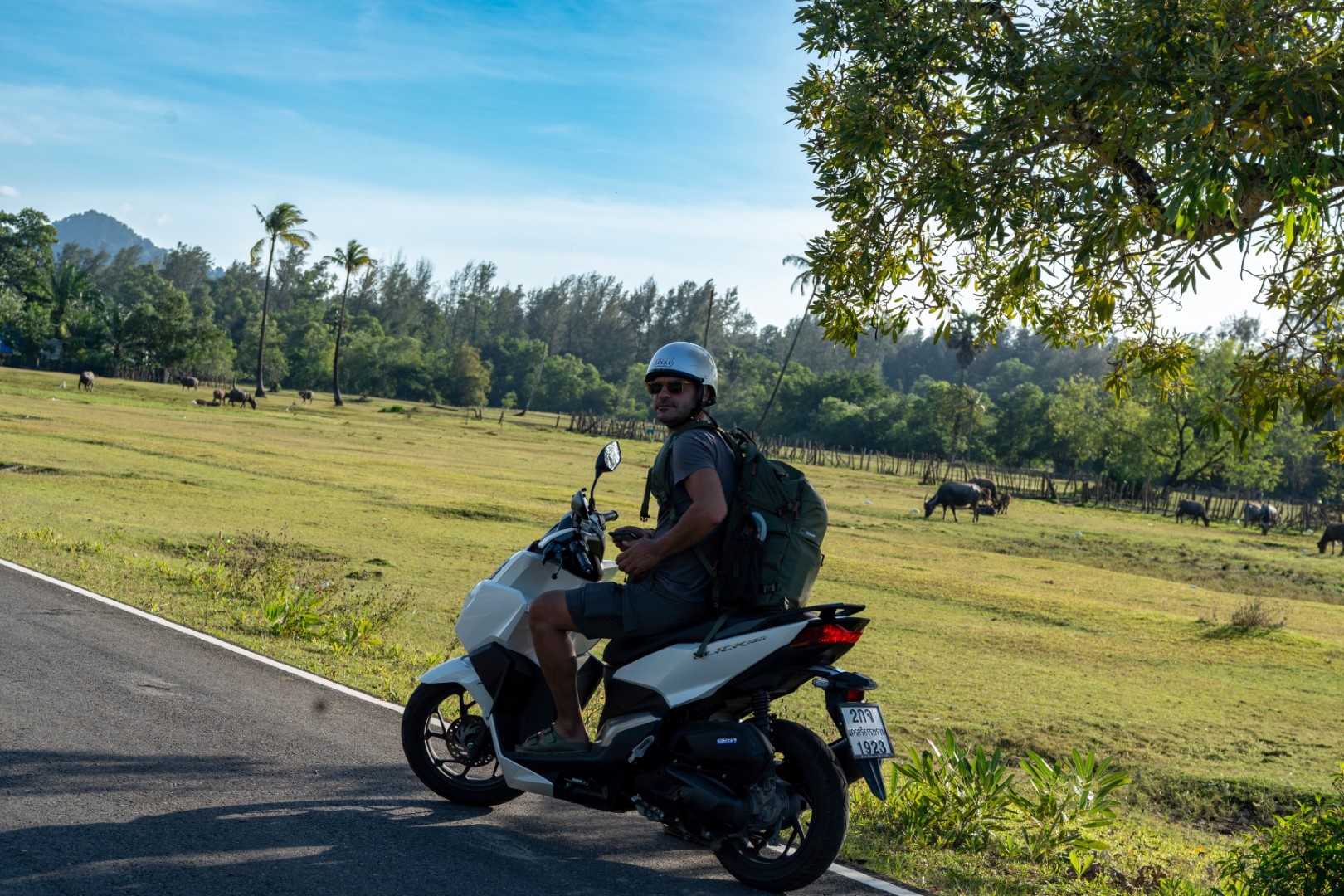
Necessary
and sufficient things to pack in your knapsack for a summer motorbike
tour in unknown environments and unplanned destinations
Anything else will most likely create unnecessary distractions and will make finding the essential things more difficult.
Like life in general.
Dimitris Papadias
Professor of Computer Science
25+ years of touring experience in 5 continents
BIKE TOURS
2023 December – 2024 January
South and North Thailand: With Andreas and 4 Honda Click 160.
Compared to last year's trip to Vietnam and Cambodia this was easy. Easy to rent motorbikes, easy traffic conditions, easy to find and order excellent food everywhere, easy to communicate since most Thai people speak English etc. The trip had two parts. We took a flight to Phuket island and from there we explored south Thailand. When we got bored, we took another flight from Phuket to Chiang Mai, and rode around the mountains of north Thailand. The first part is shown in the map below. In reality, we rode many more than the kilometers indicated in the maps because we did several detours and visited additional places, including the islands Koh Samui and Ko Pha Ngan.
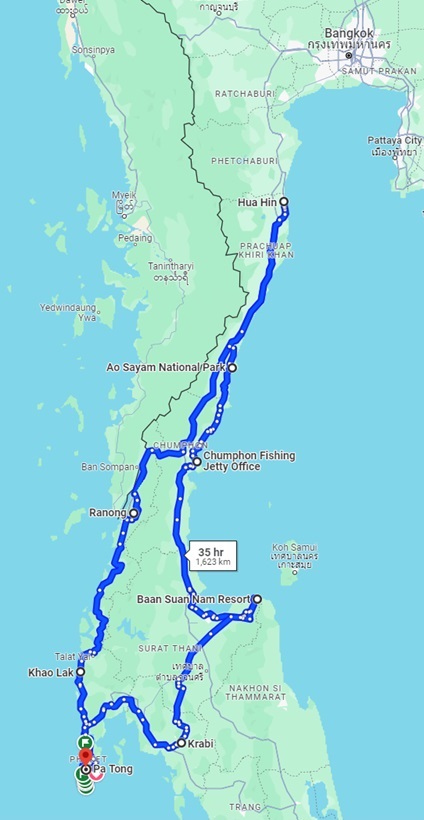
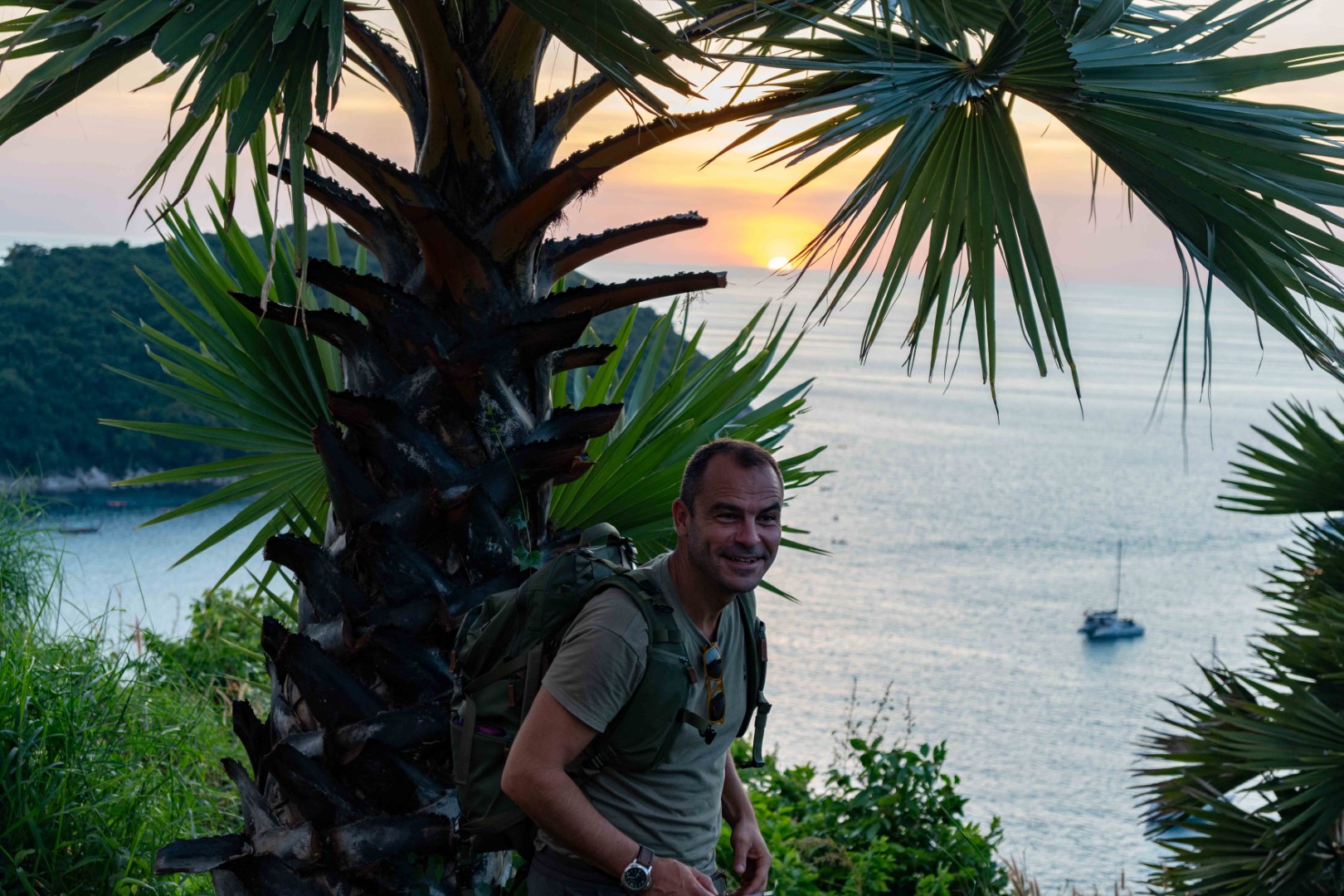
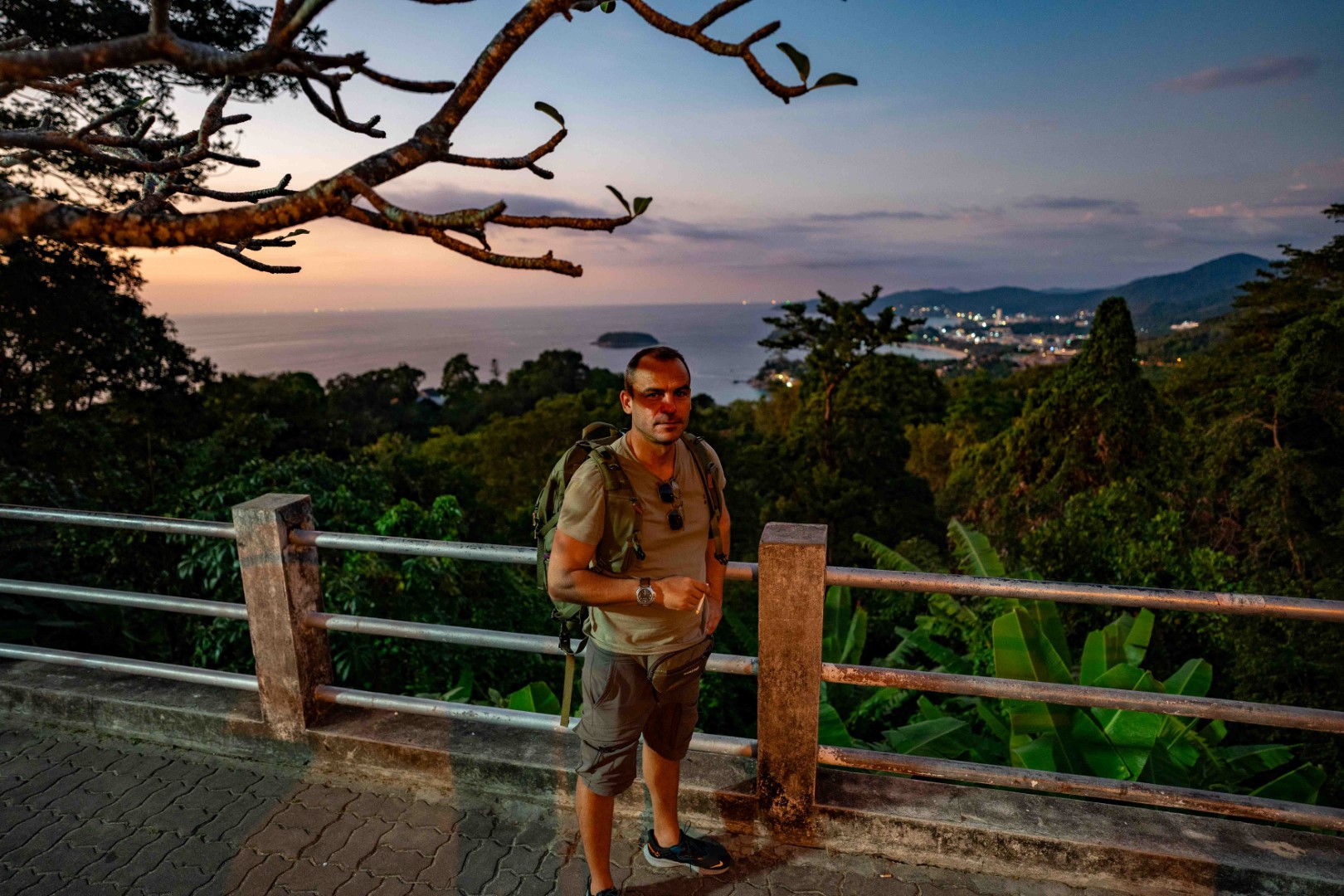
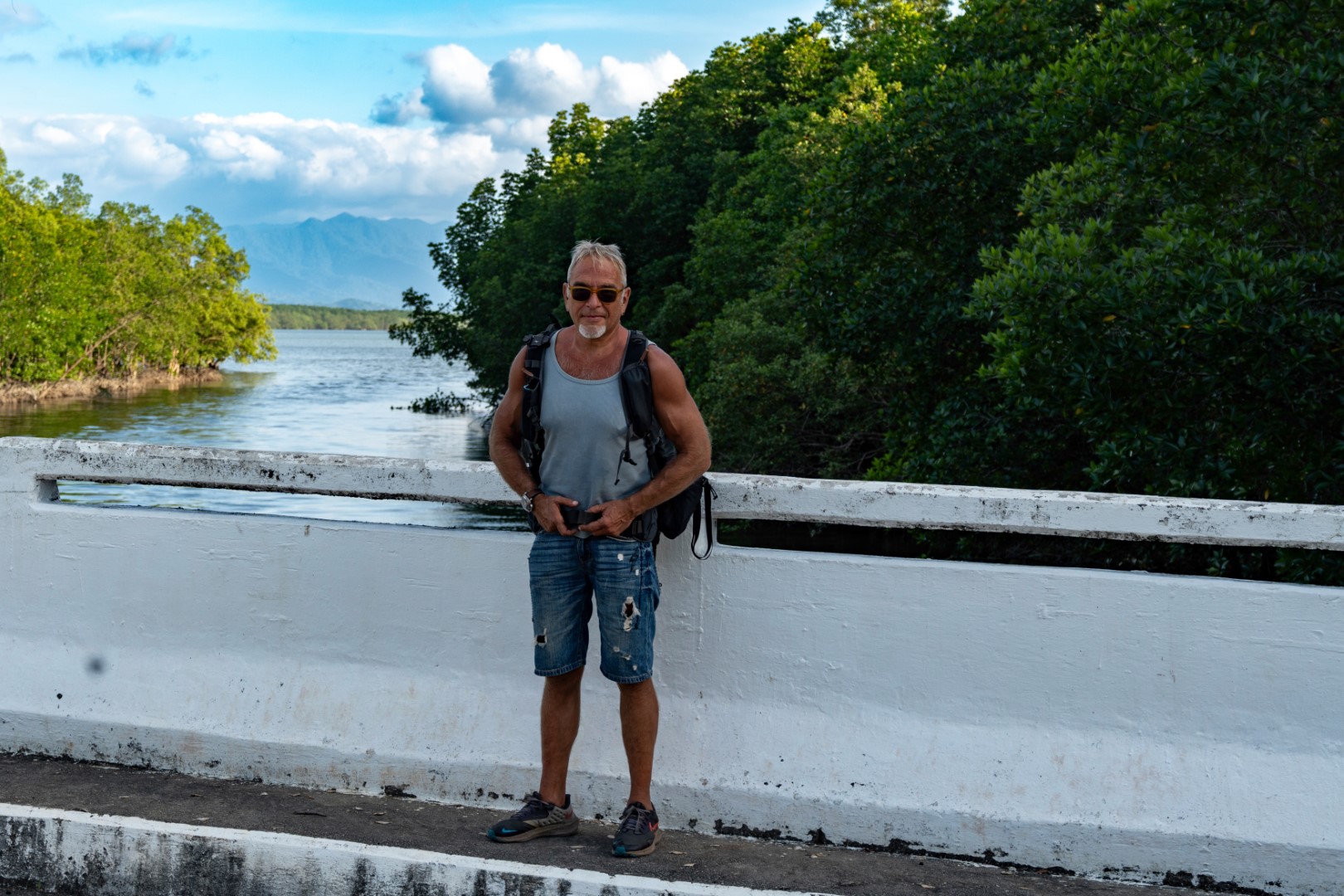

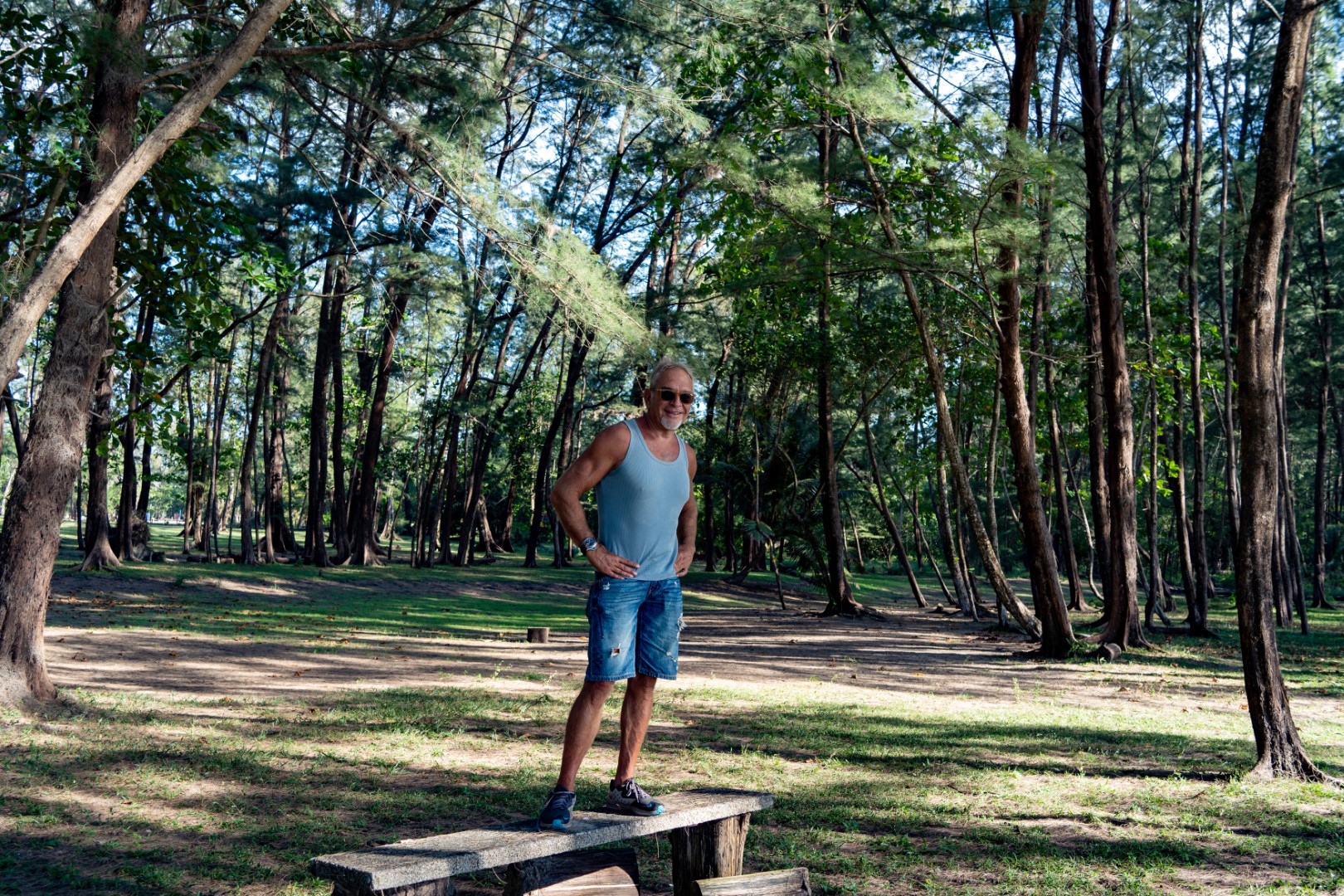
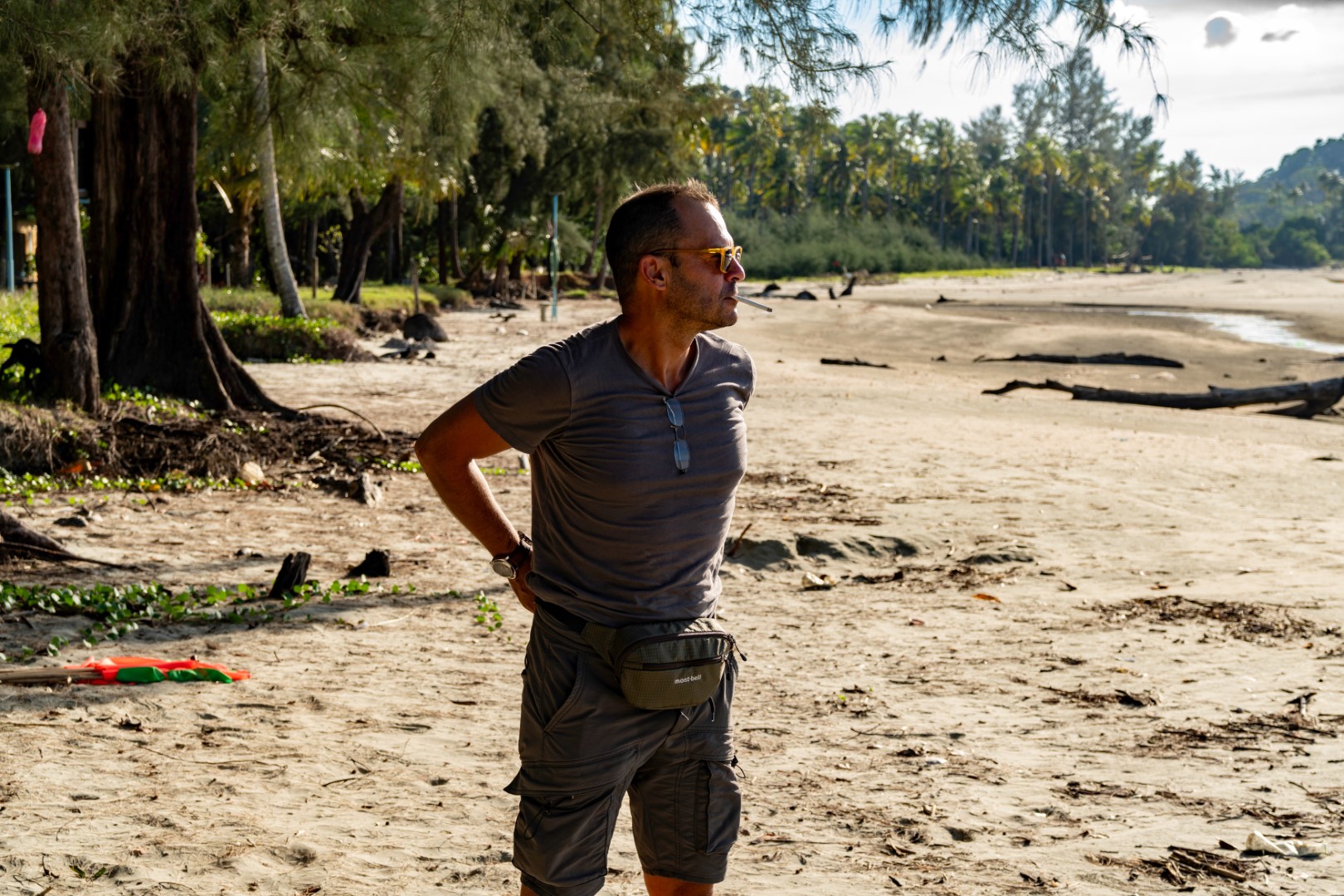
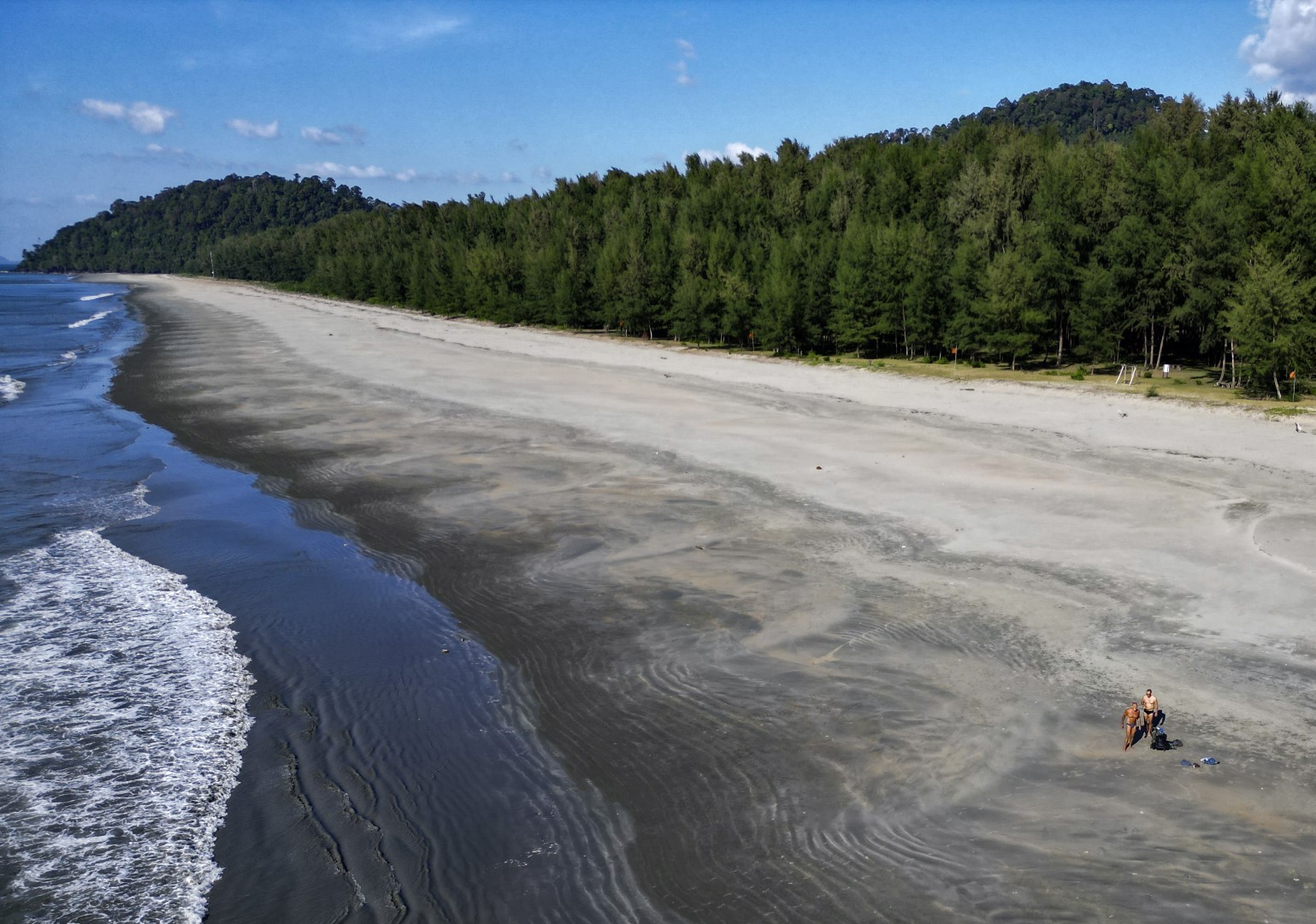
Our first overnight stop was Khao Lak, about an hour drive north
of Phuket. Khao
Lak was among the worst hit areas by the tsunami of 2004, and you can
still see several reminders, including a tsunami
museum. In my opinion it is one of the most underrated places in
Thailand with several of the advantages of Phuket (landscape, beaches,
facilities, easy accessibility), without the heavy traffic and
overcrowding. There
is even some decent nightlife. The photos below are from Pakarang Cape and Coconut Beach.
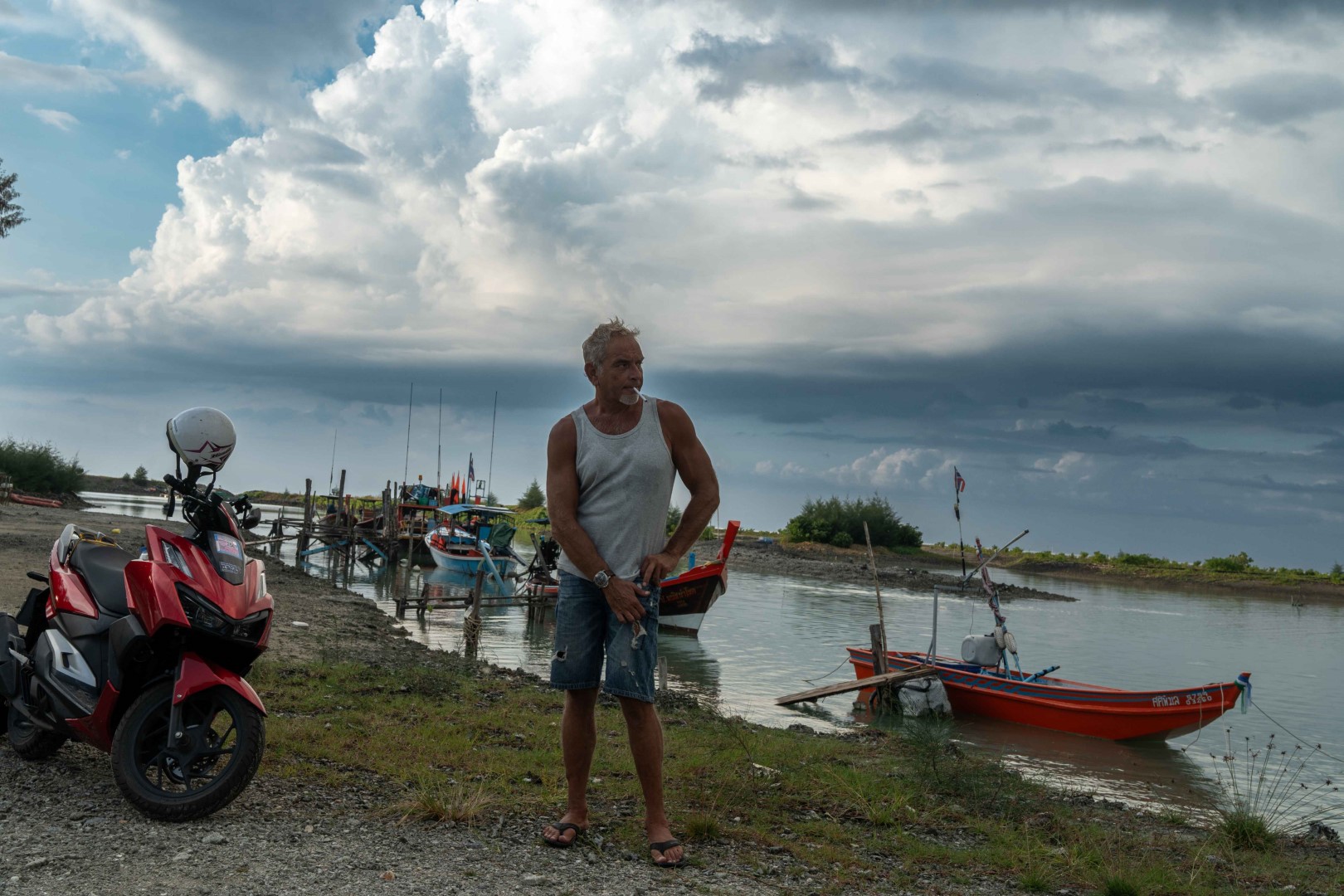
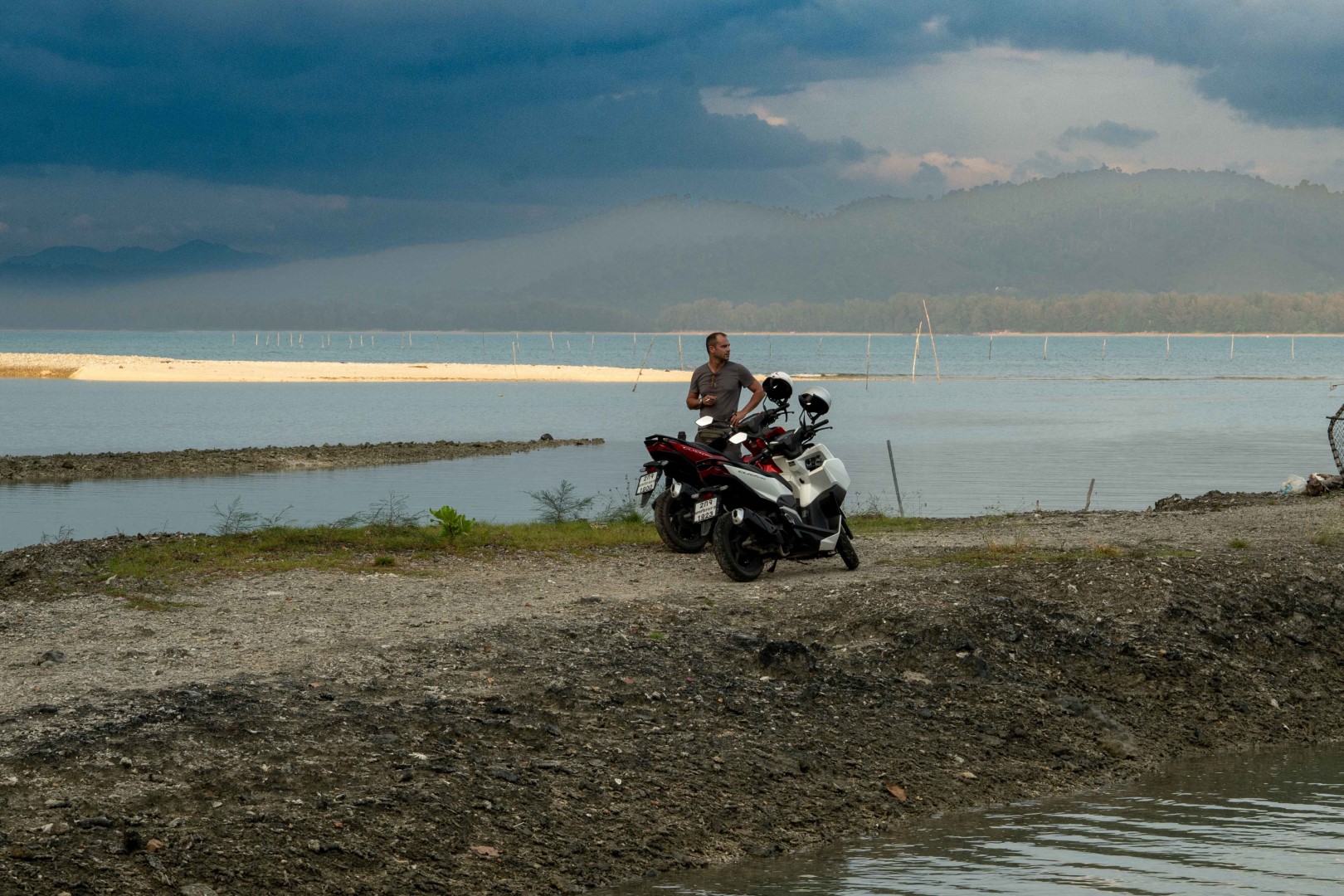
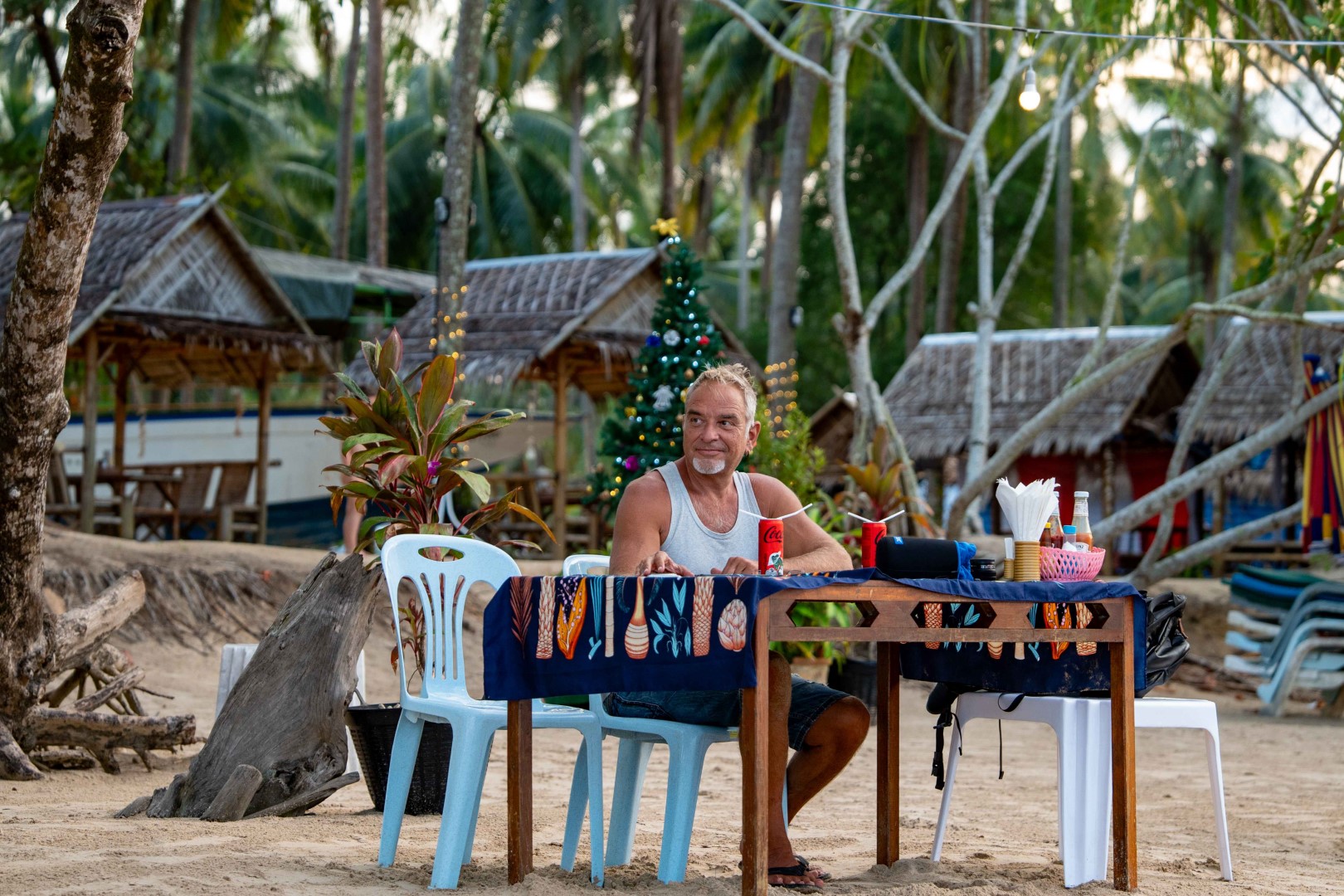
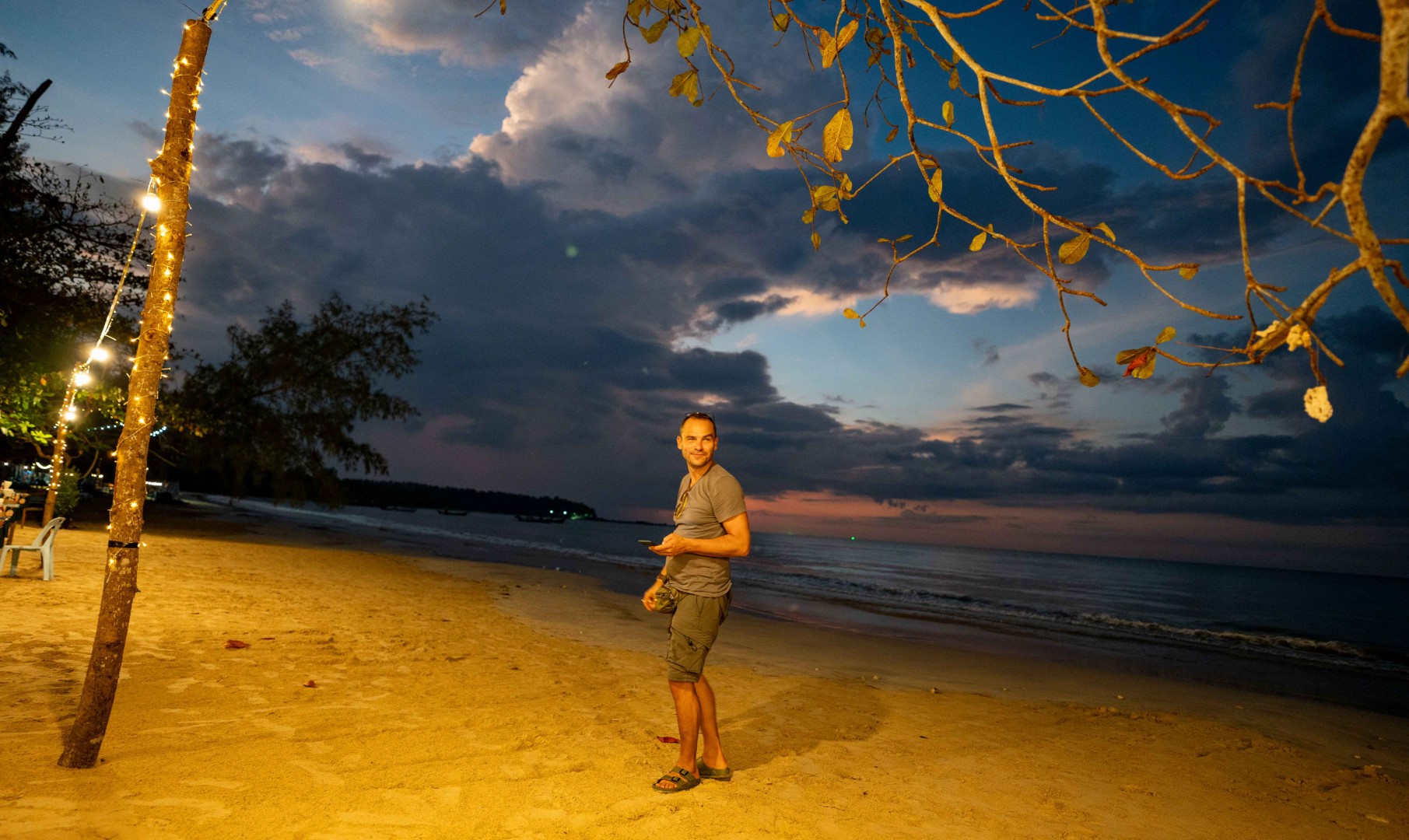
Ranong, about 220 km north of Khao Lak, is a provincial town without much to do, except maybe of visa-free trips to neighboring towns or islands in Myanmar. We did not take this option because of the civil war there. Instead, after spending a night in Ranong we continued north towards central Thailand and Hua Hin, 200 km south of Bangkok. This was a long trip (380 km) for scooters and it became more difficult because both of us had high fever since we caught flu or something similar. We stayed a couple of days in Hua Hin, but unfortunately it was cloudy and rainy. The first photo below is from the trip, where the road comes closest to Myanmar (on the other side of the river). The second picture is from the beach of Hua Hin.
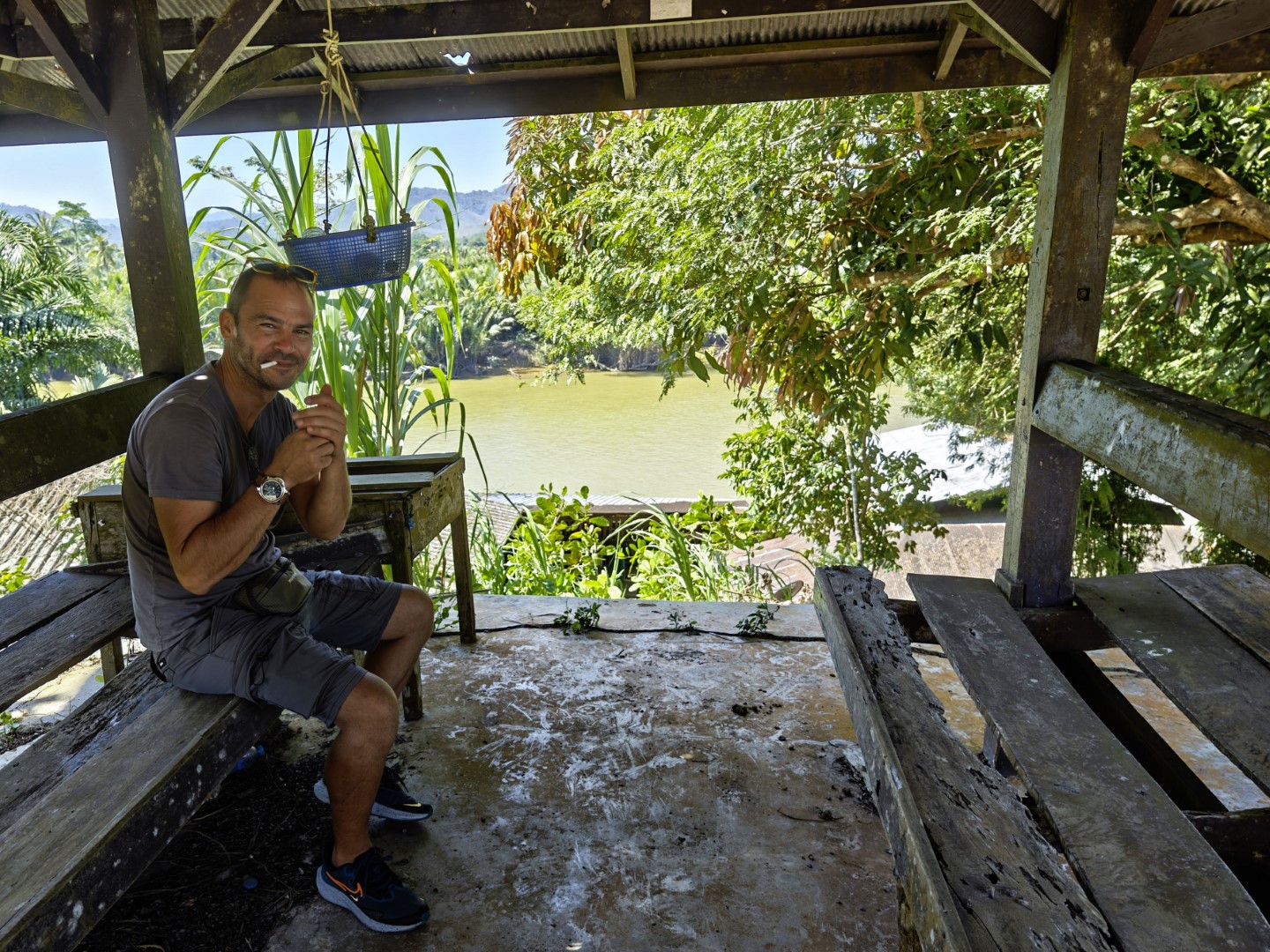
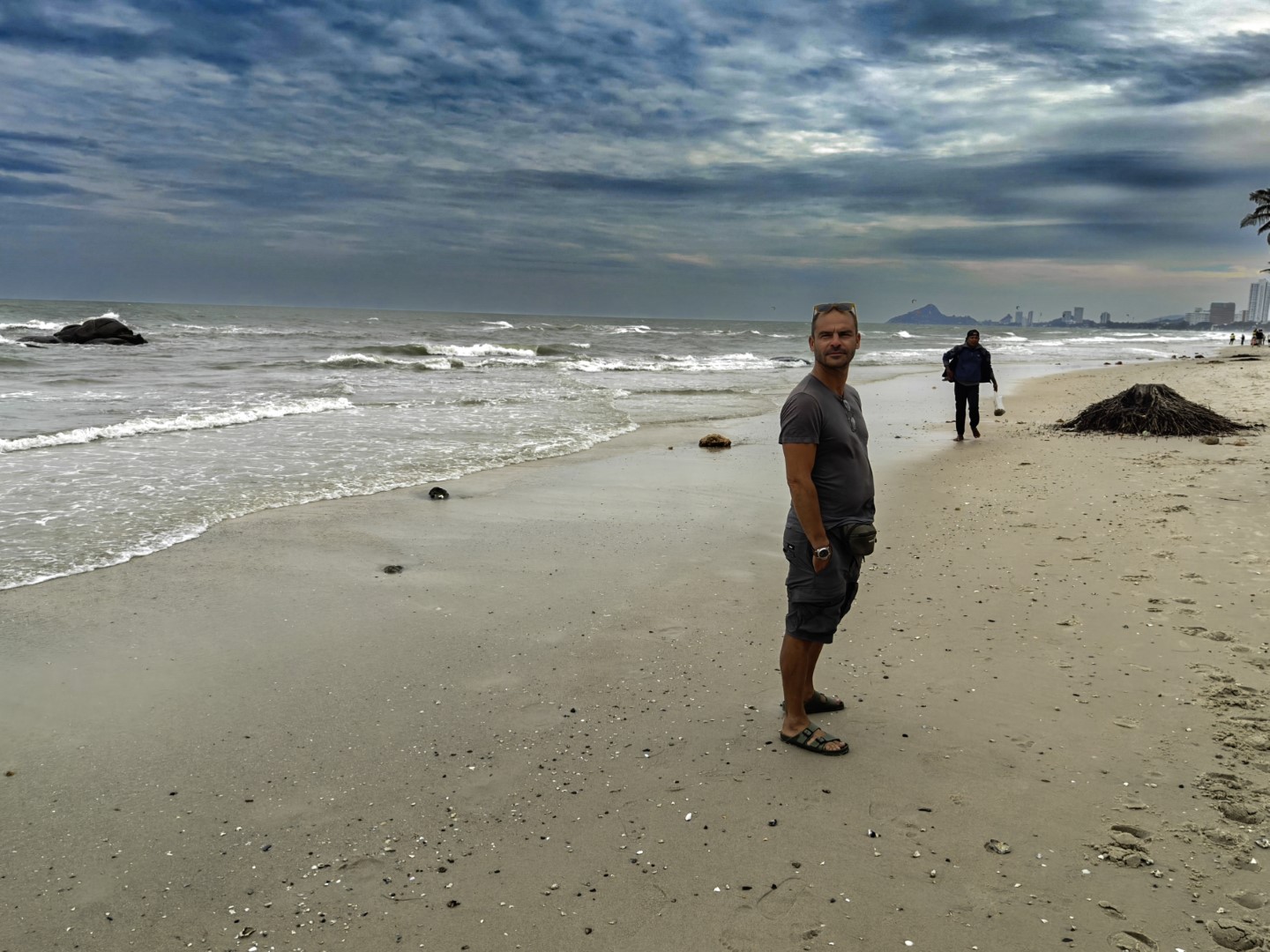
After
Hua Hin, we returned south towards Chumphon. In order to see different
places, we took small coastal roads, instead of the main highway
connecting Bangkok to south Thailand (i.e., the road that we used from
Chumphon to Hua Hin). Indeed as shown in the pictures below, the
landscape was worth it. The overnight at Chumphon, on the other hand,
not so much (the third photo is at a river restaurant in Chumphon).
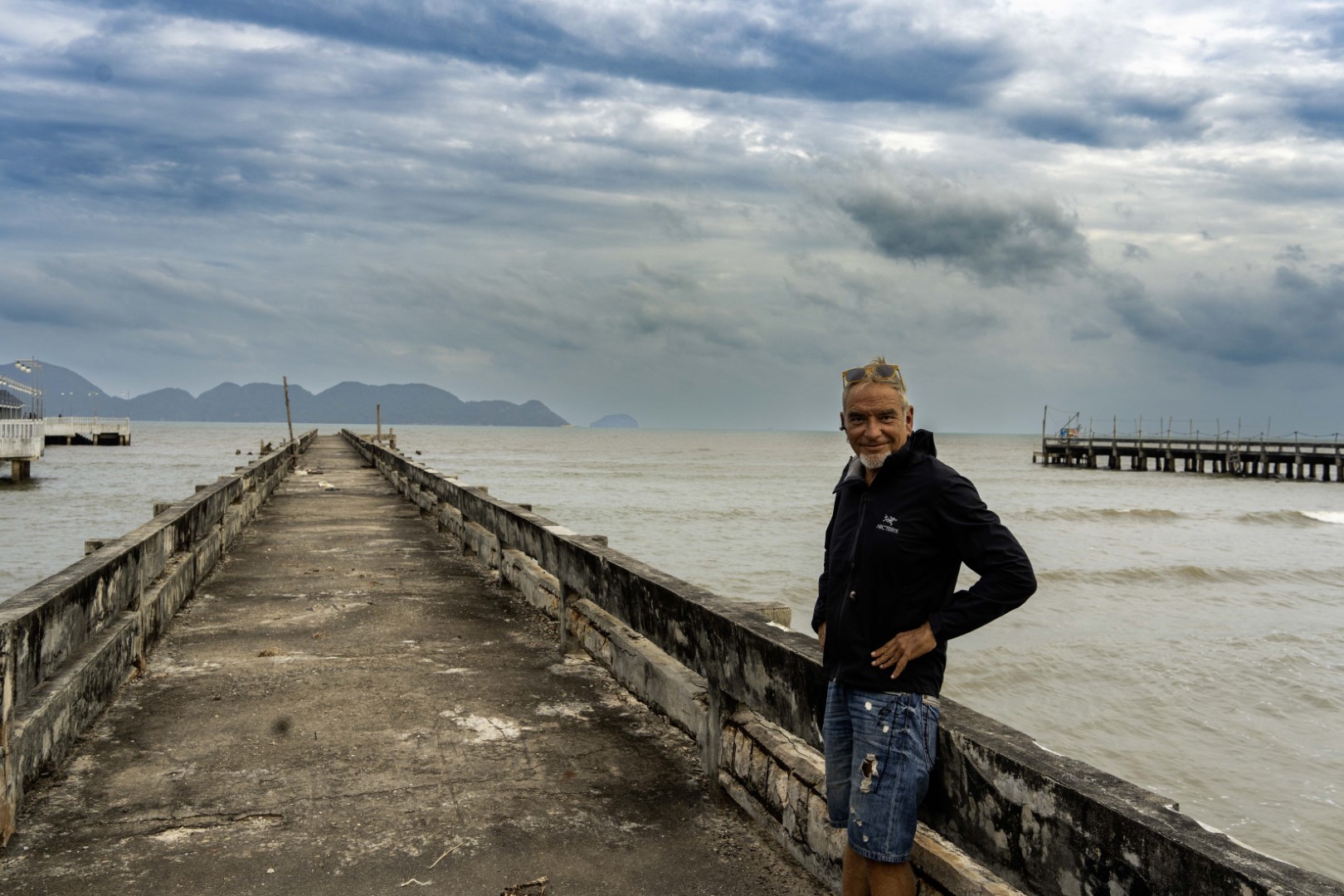
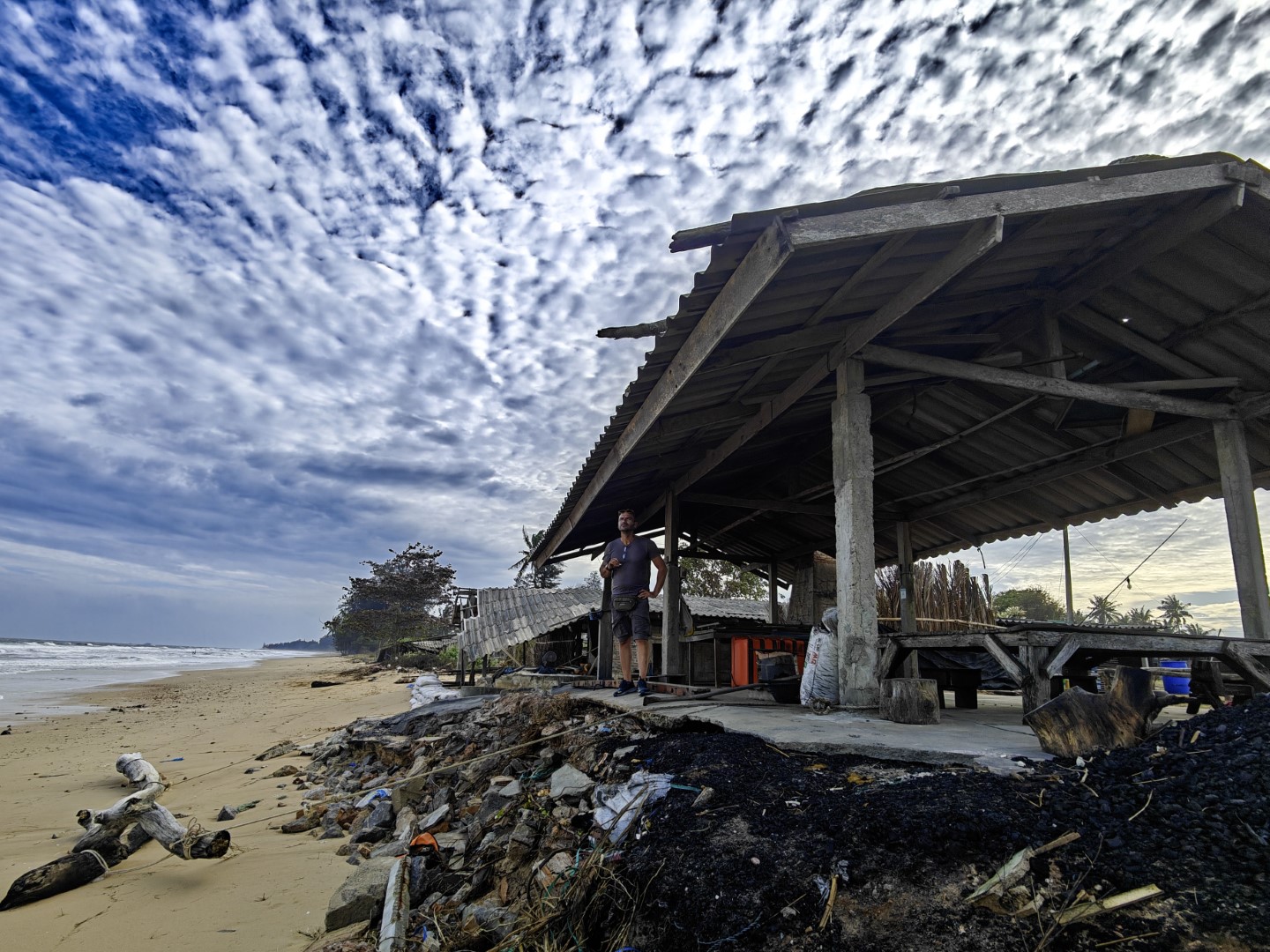
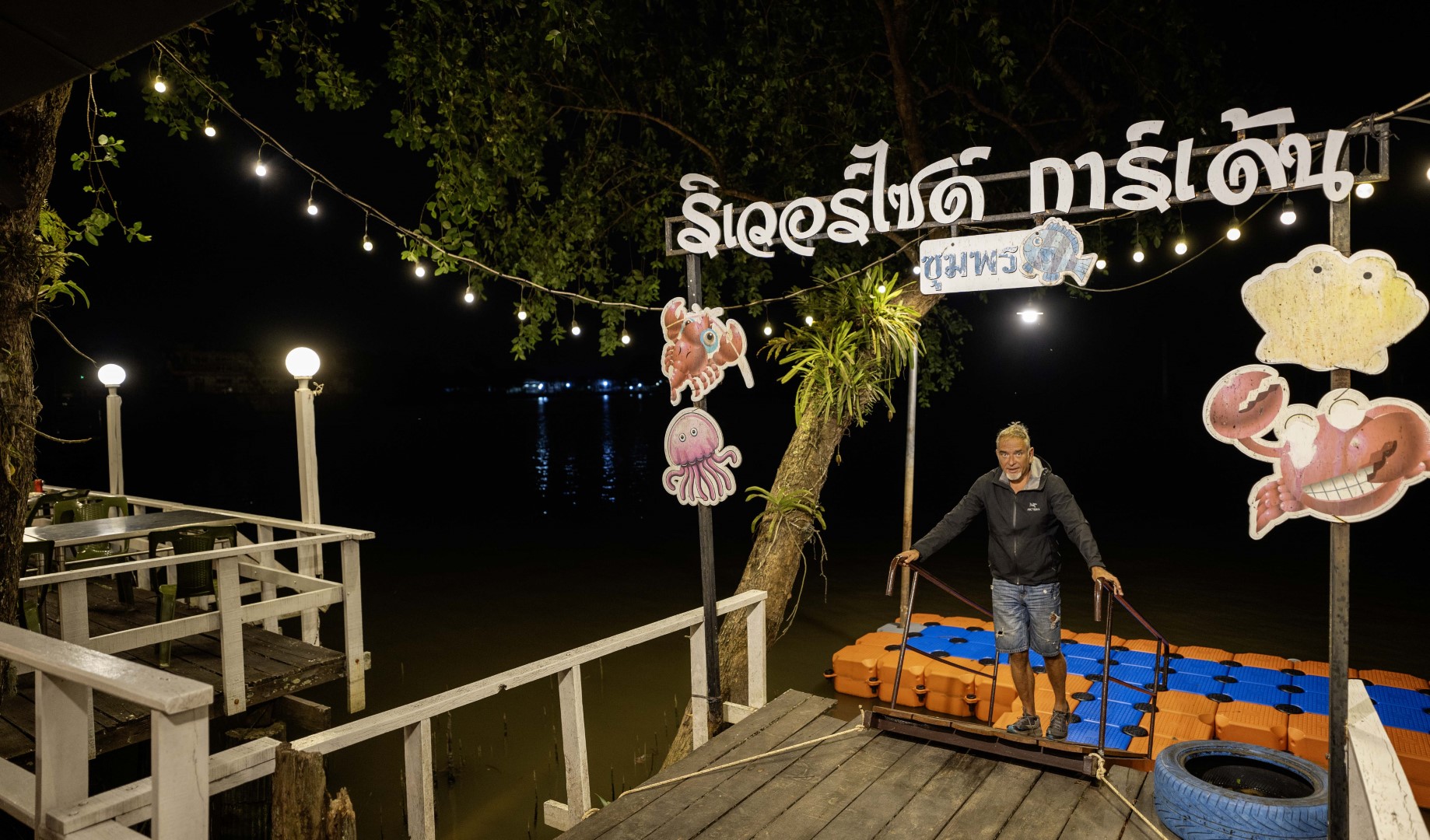
We continued south to Surat Thani and the port for ferries to Koh
Samui. There are frequent ferries and we found one departing
immediately. Koh Samui was too busy for our taste and the next day we
took another boat (I would not call it a ferry) to Ko Pha
Ngan (a couple of hours north of Koh Samui). As you can see in the first picture, the boat was full of people
because there was a full moon party at Ko Pha Ngan (second photo). We
liked the relaxed atmosphere of Ko Pha Ngan and stayed a few days
at a small hotel by the beach (third picture and video at the end).
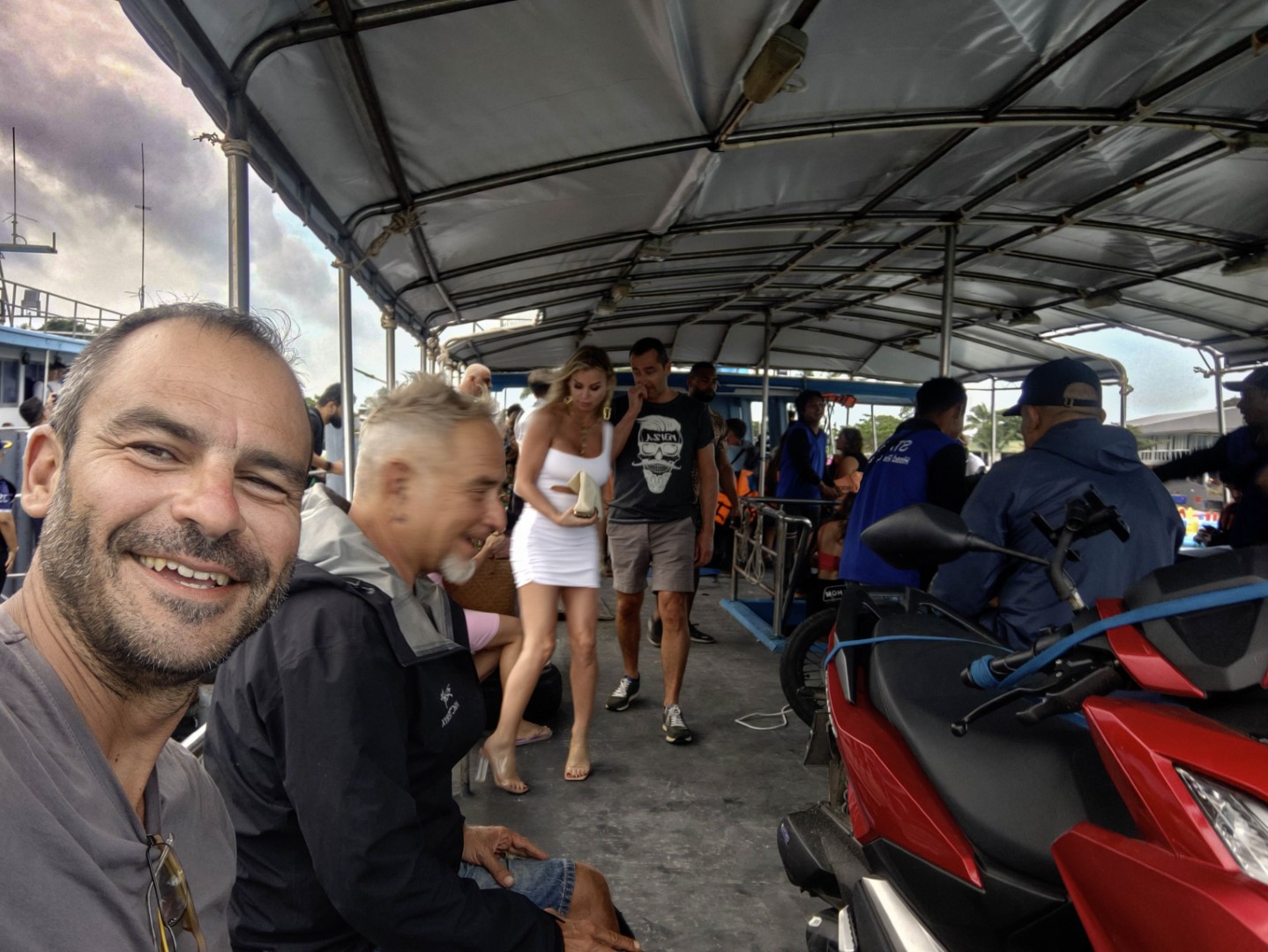
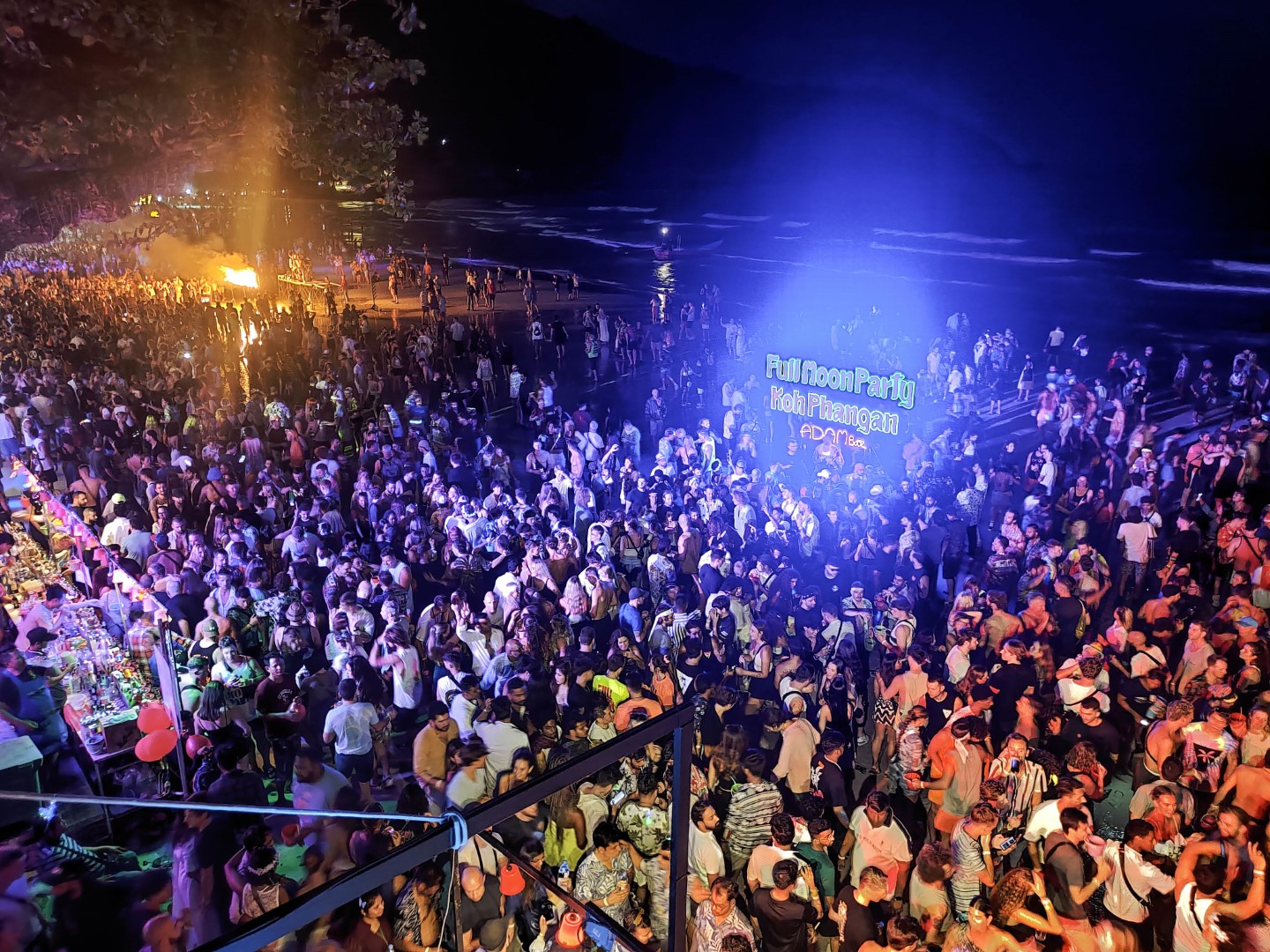
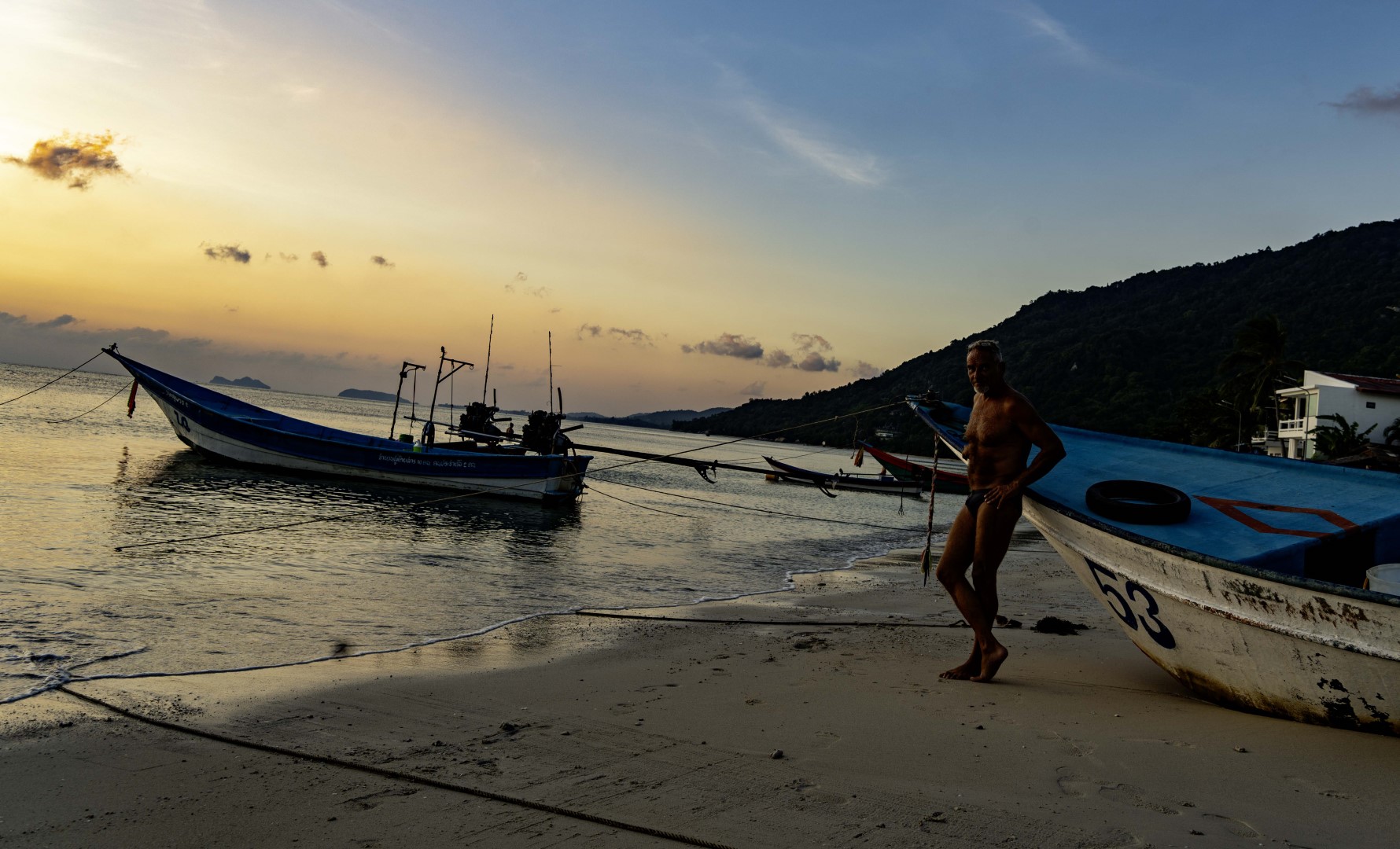
We
then took the ferry from Ko Pha Ngan back to Surat Thani and went further
south to Krabi. Although Krabi is beautiful (picture below) and has
many places to visit nearby, including Phi Phi and other islands,
we were getting tired of the crowds in south Thailand - moreover I had
visited Krabi recently. So we decided for a change of scenery (from
beaches to mountains), rode back to Phuket, returned the scooters and
boarded a flight to Chiang Mai, the Thai capital of the north.
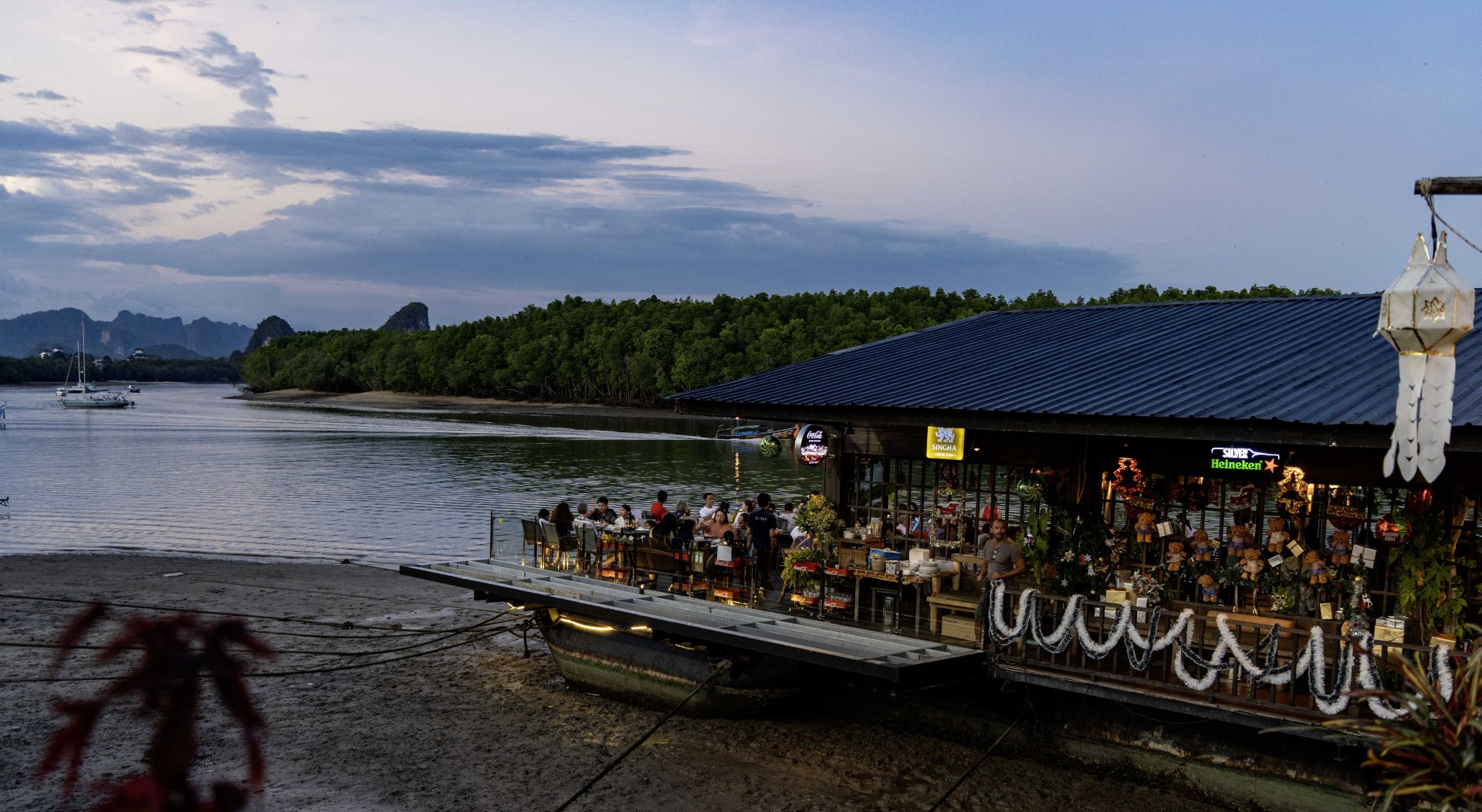
Using Chiang Mai as our base, we did four mountain tours each ranging between 1-3 days. Since we were happy with the Honda Clicks, we rented again the same. The weather conditions were excellent, with pleasant temperatures and sunny days.
Our first tour is the iconic Mae Hong Son loop to the west of Chiang
Mai. As shown in the map below it is at least 500kms and it takes at least
three days, but it may become much longer depending on your exploration
mood. We started with direction northwest. The first picture below is
from a waterfall (in north Thailand there is always some waterfall near
you, when you are on the road). The second one is at the entrance of
Pai, the village where we had our first stay. Pai is rather touristic,
with visitors enjoying the relaxed way of life, various outdoor
activities and marijuana (legal in Thailand). The second day
we traveled from Pai to Mae Hong Son, the capital of the province with
the same name.We did several detours to visit mountain peaks and traditional villages (third picture below).
Such detours are usually short (up to 10-15km) and worth it. Mae Hong
Son is a sleepy town. However, we were lucky to find a street food
market when we arrived and enjoyed our dinner by the lake (fourth
picture).The last day involved more mountains, including Doi Inthanon
with the highest peak (2,565 meters) in Thailand. The last two pictures
below are near that peak - the road goes all the way to the top, but
bring a jacket.
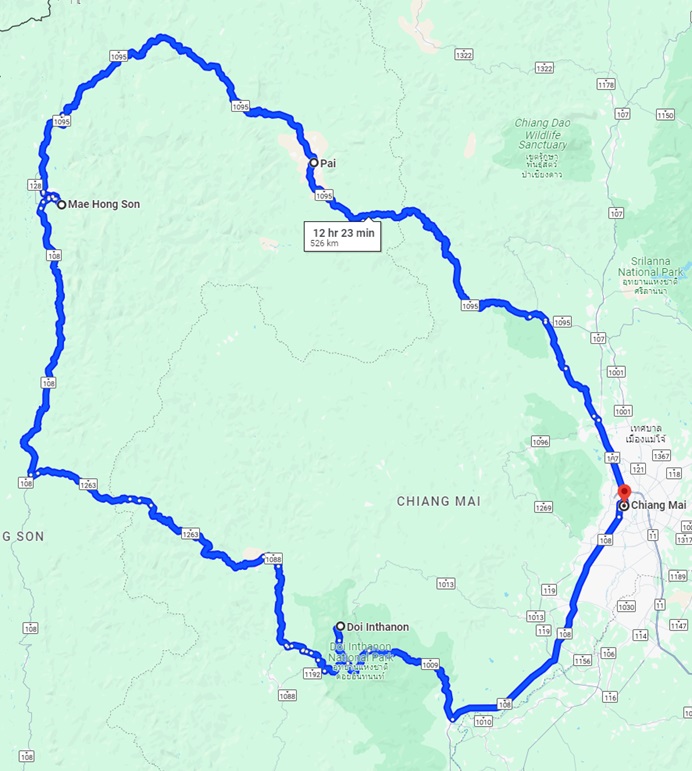
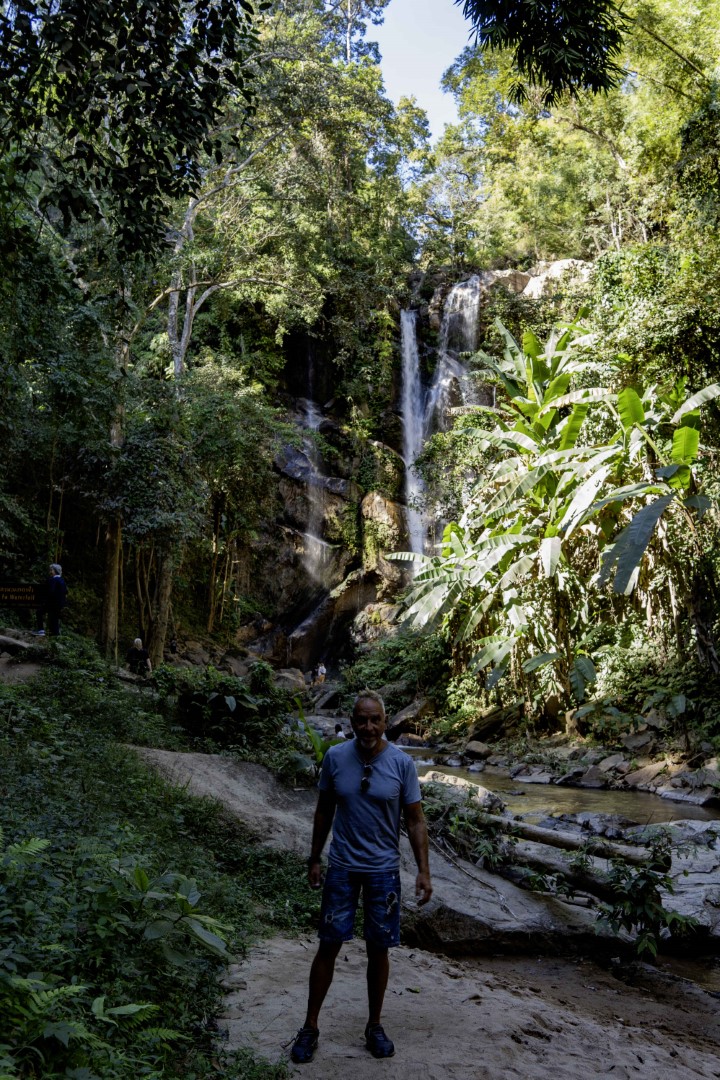
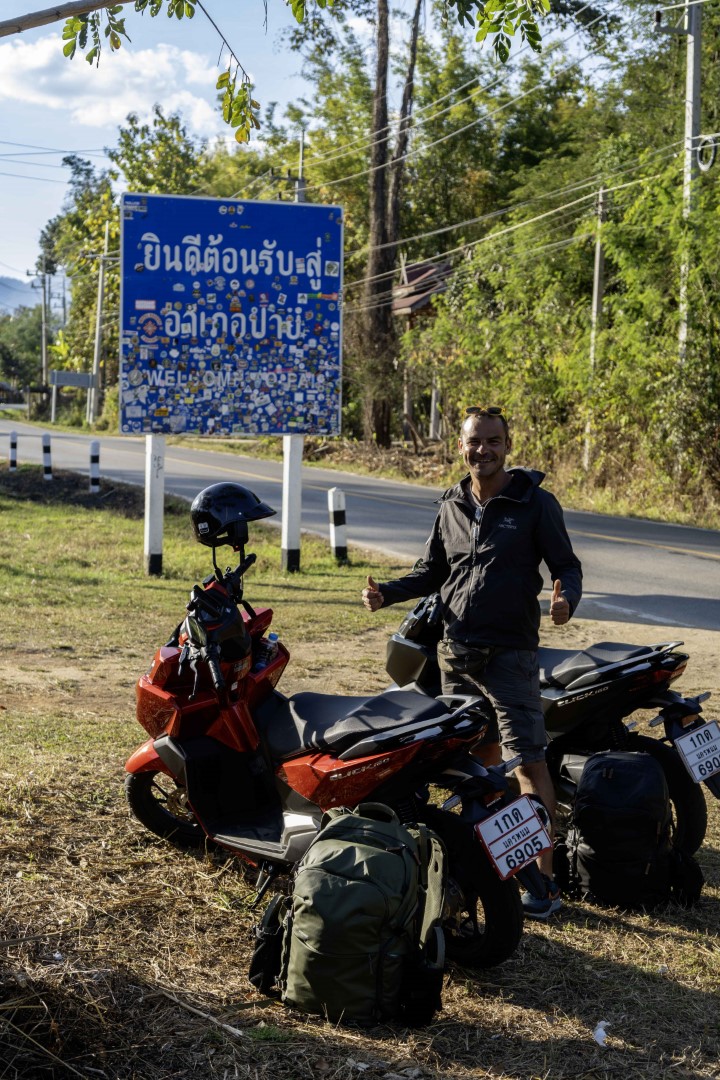
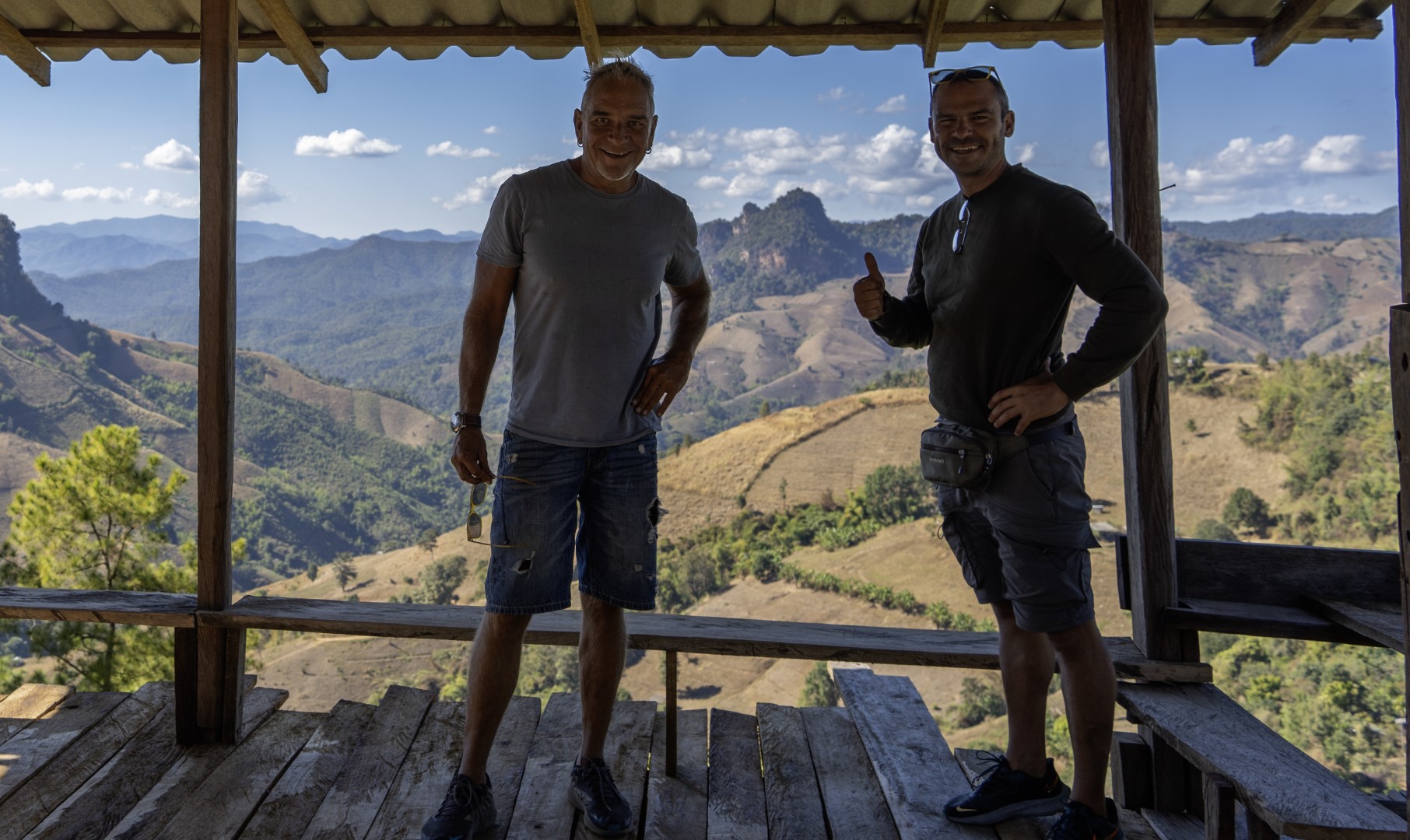
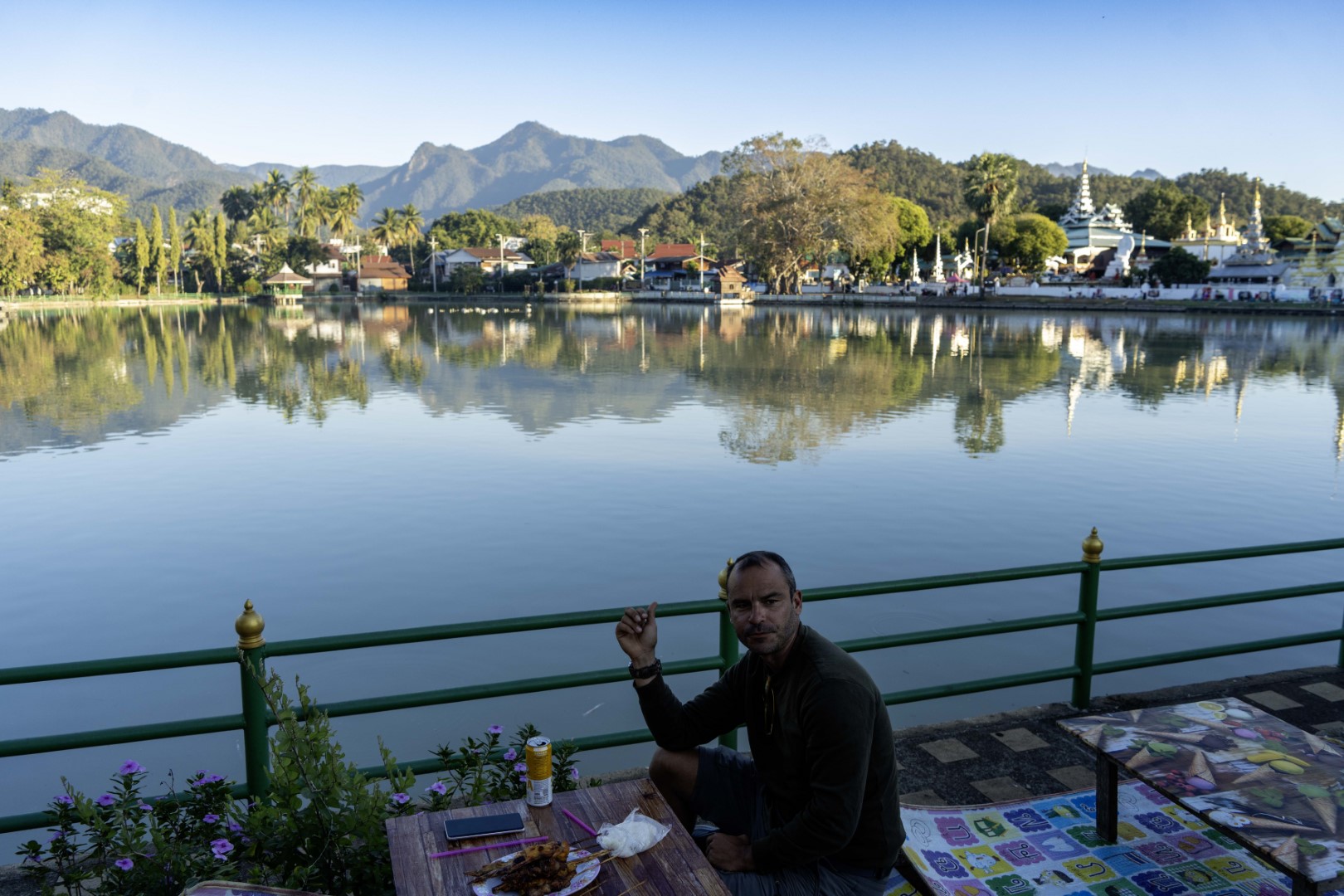
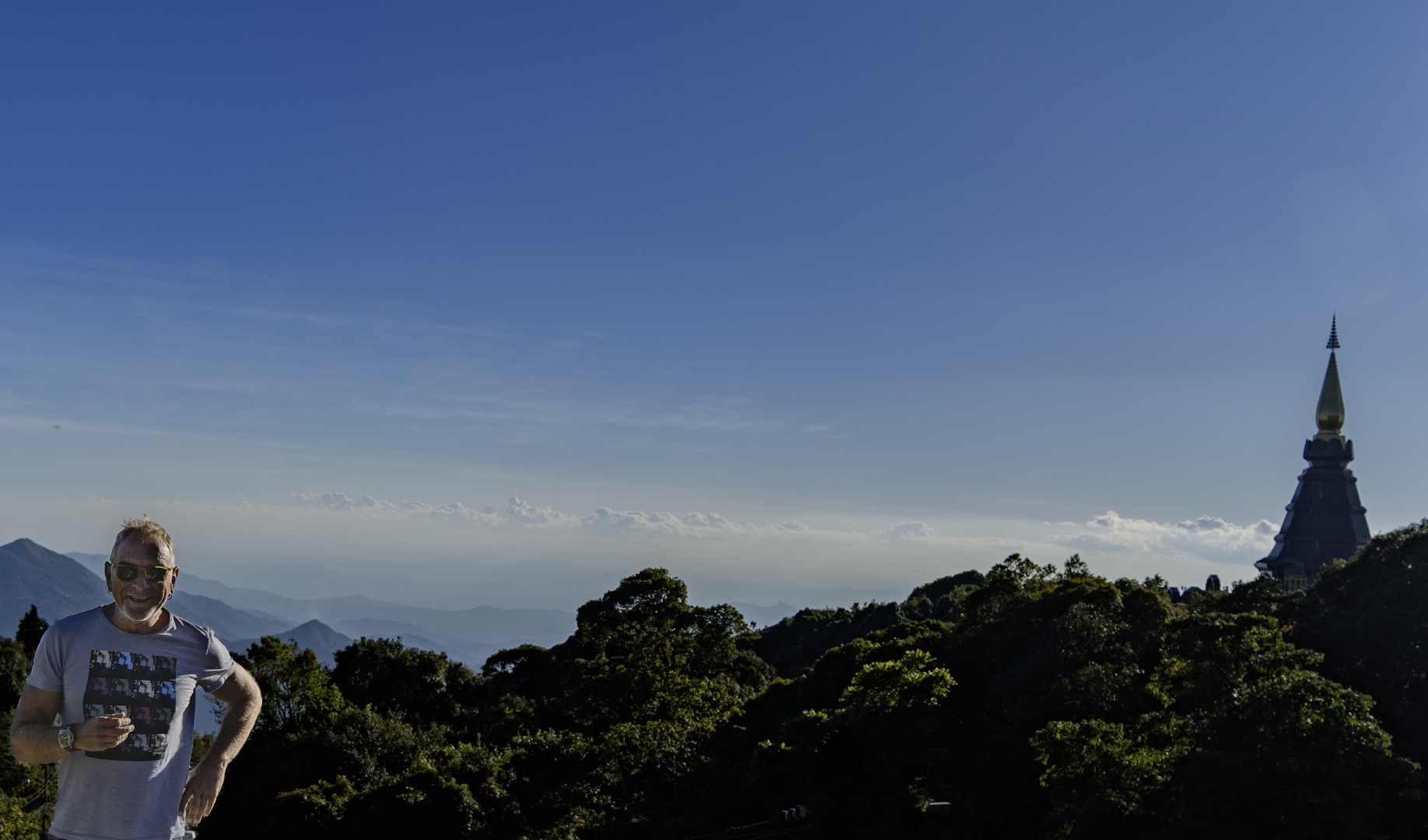
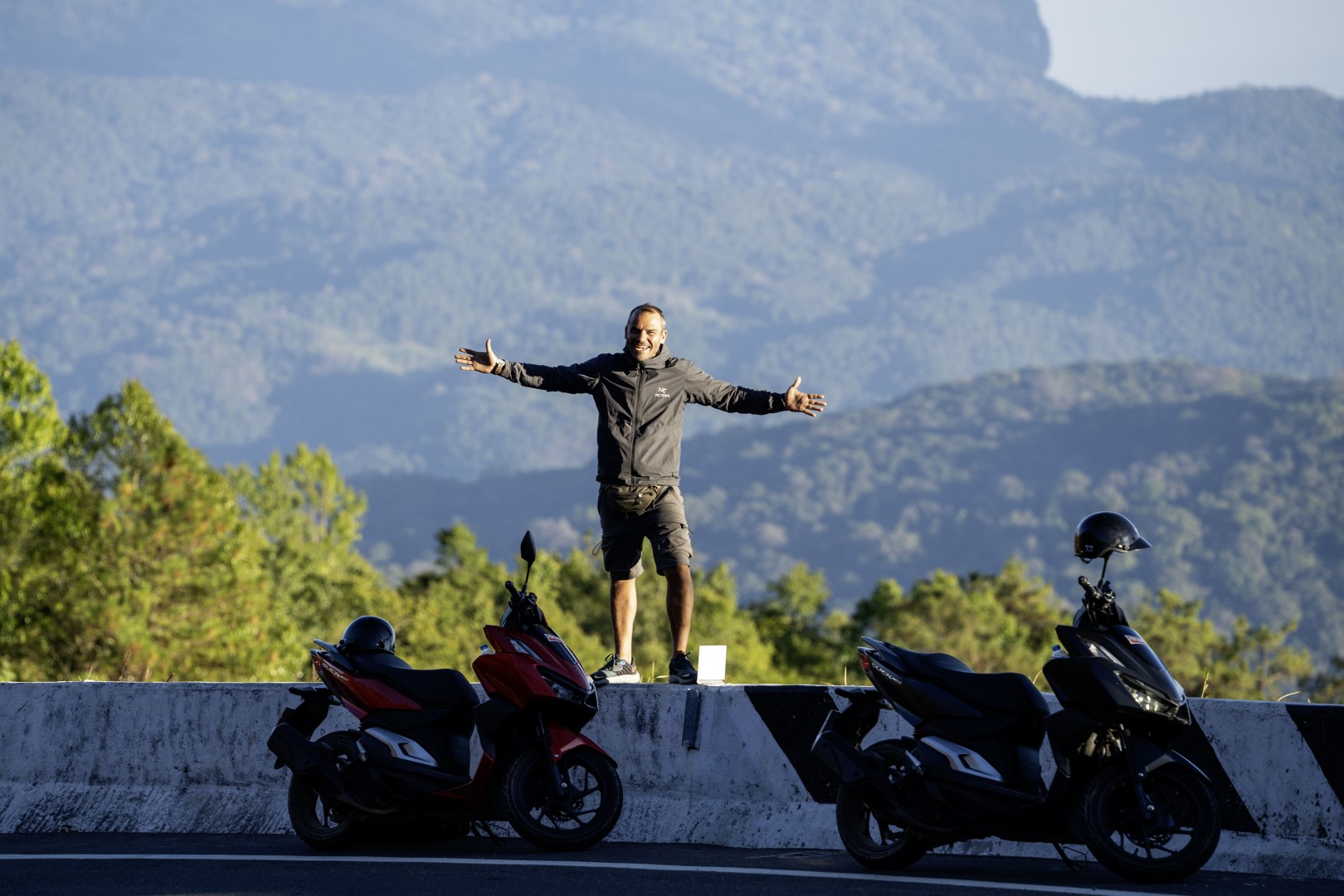
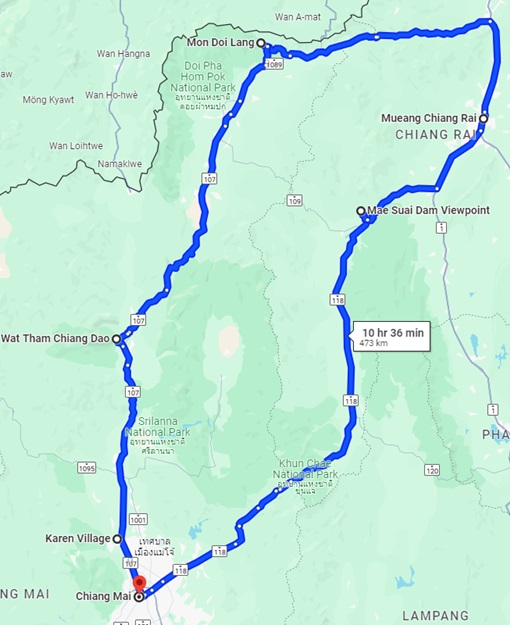
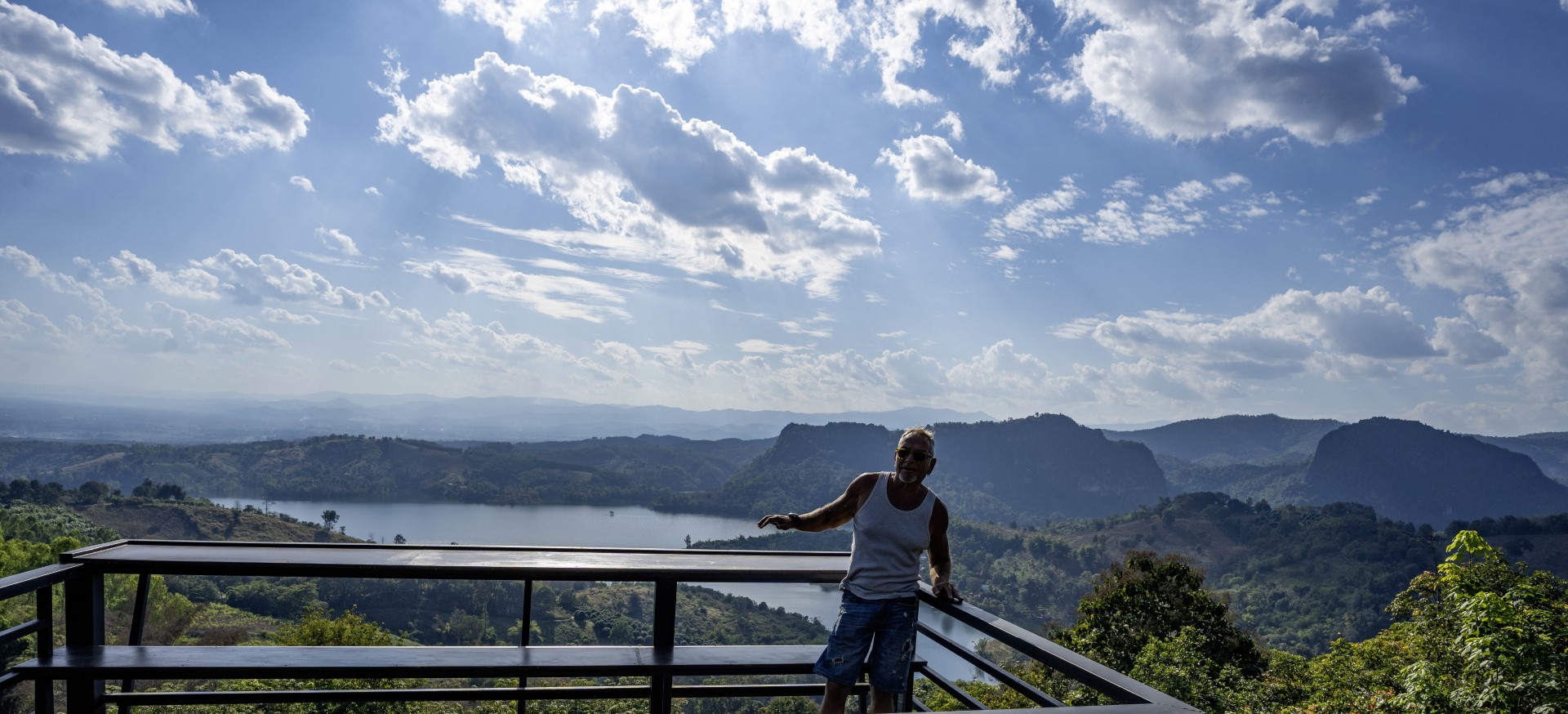
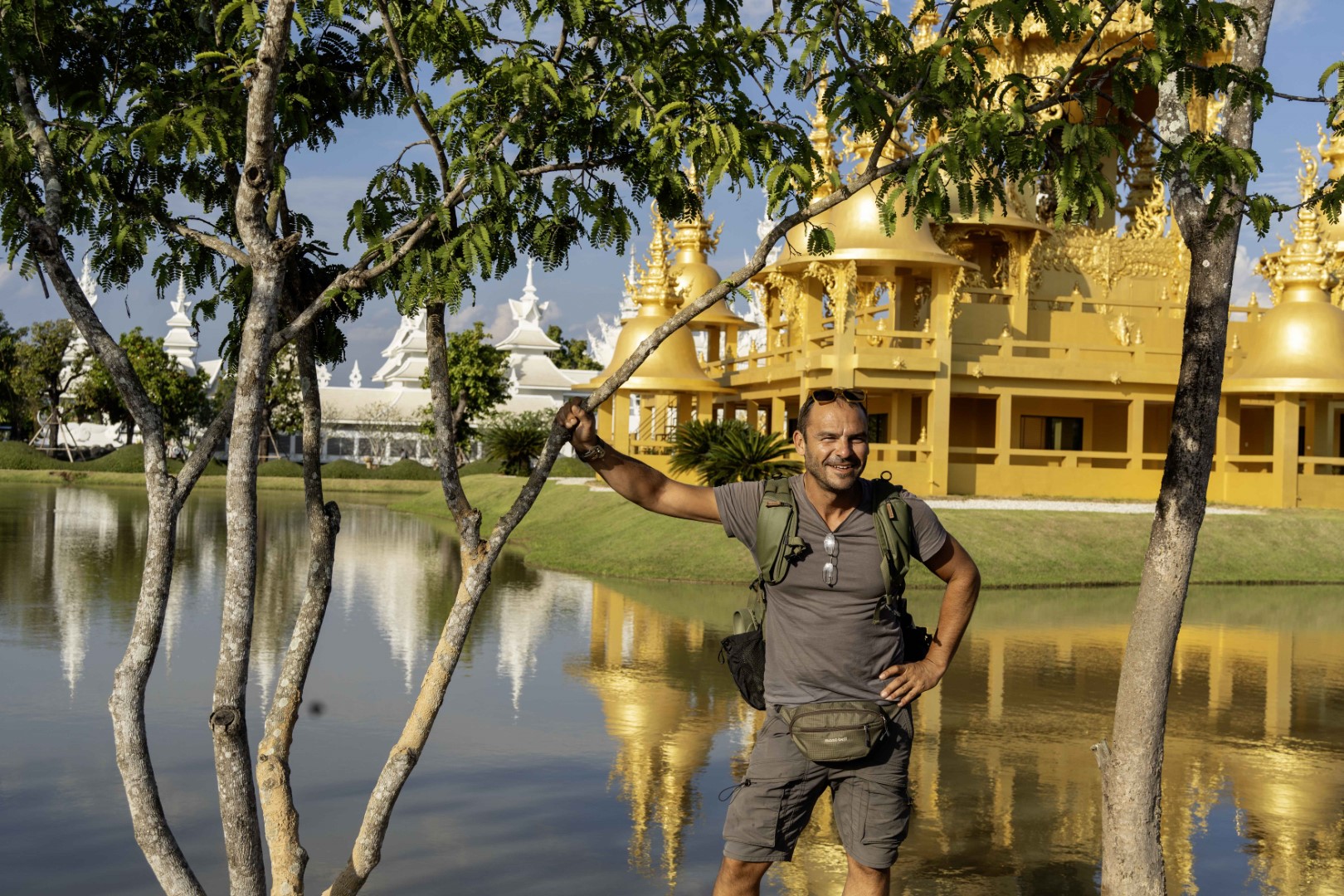
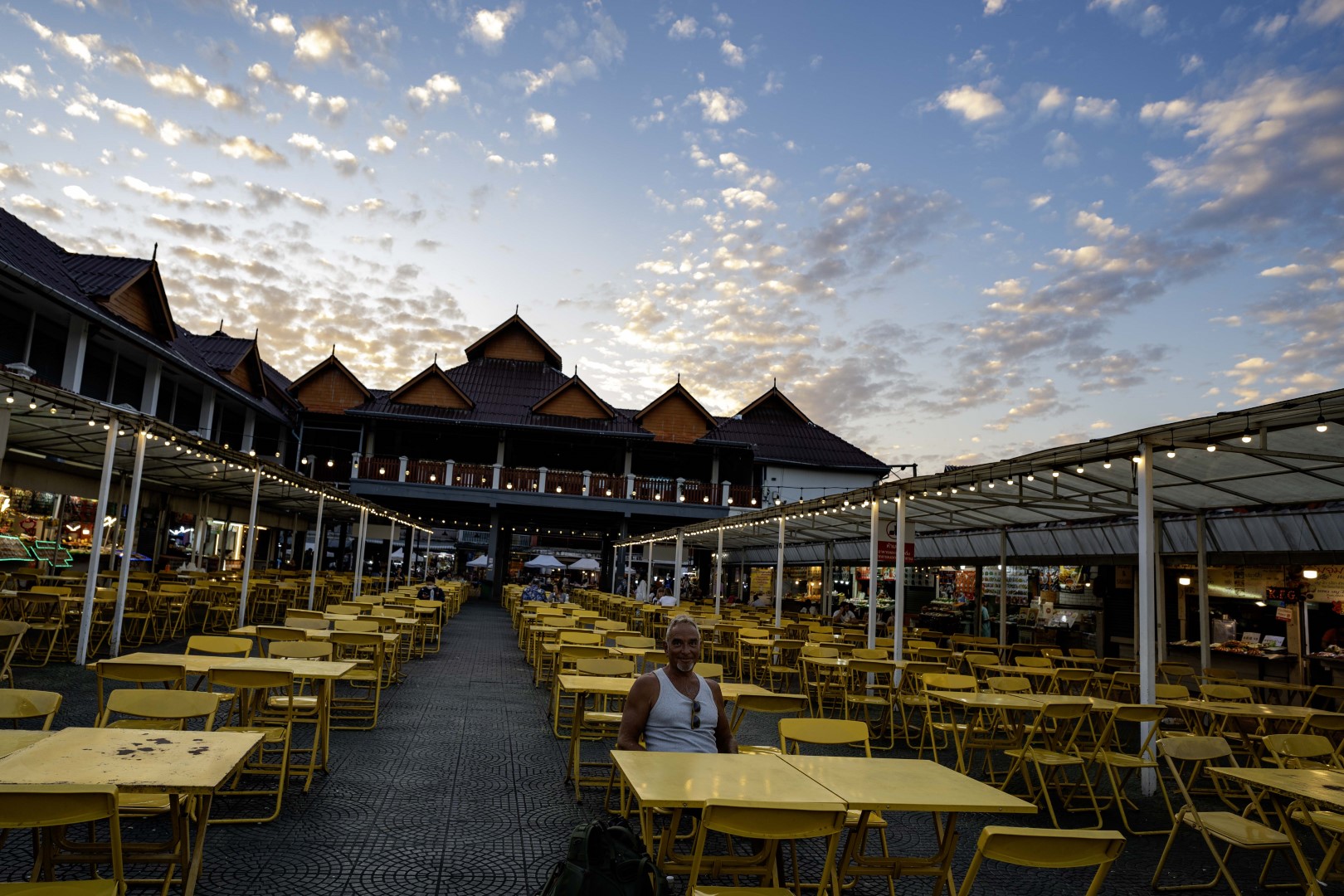
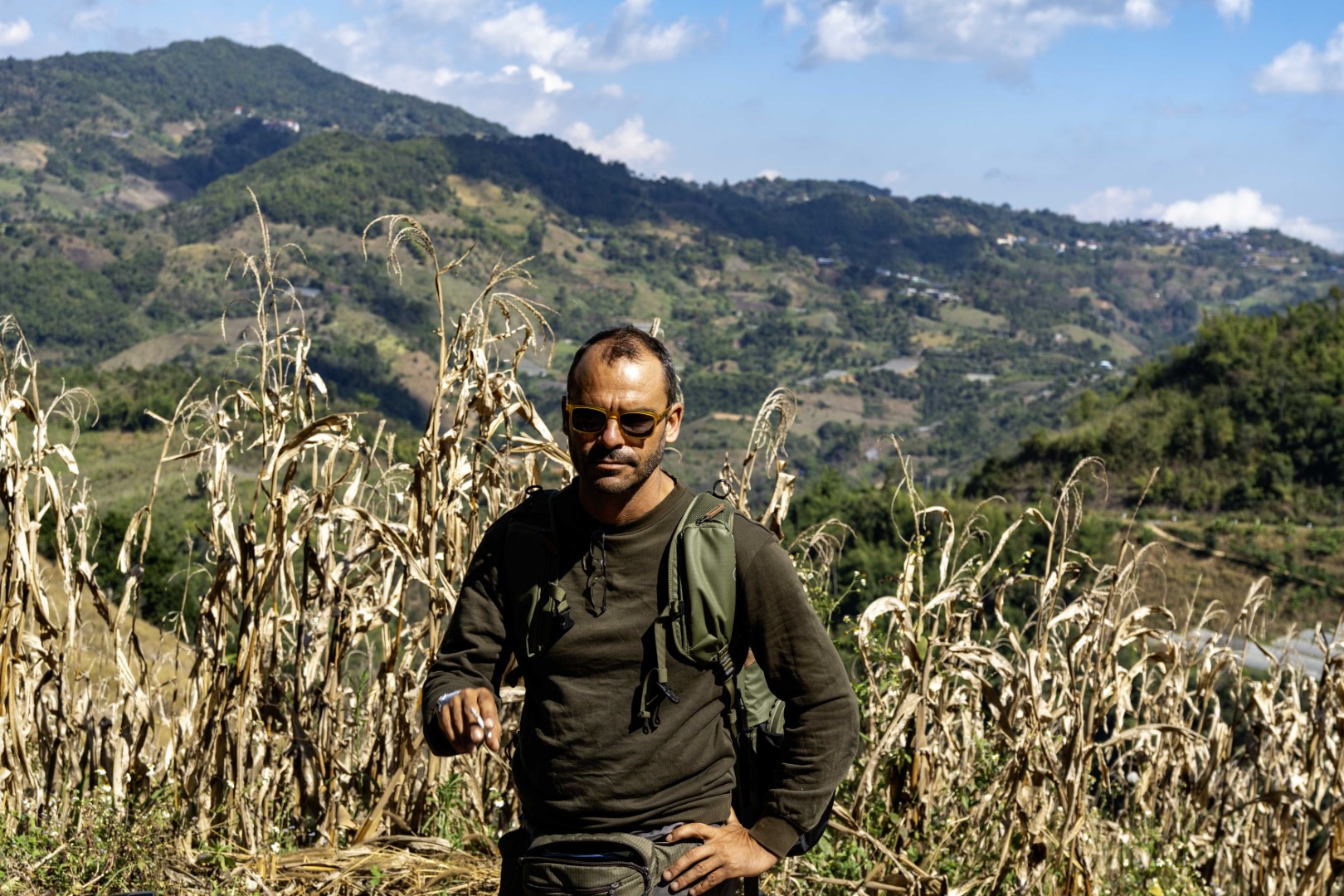
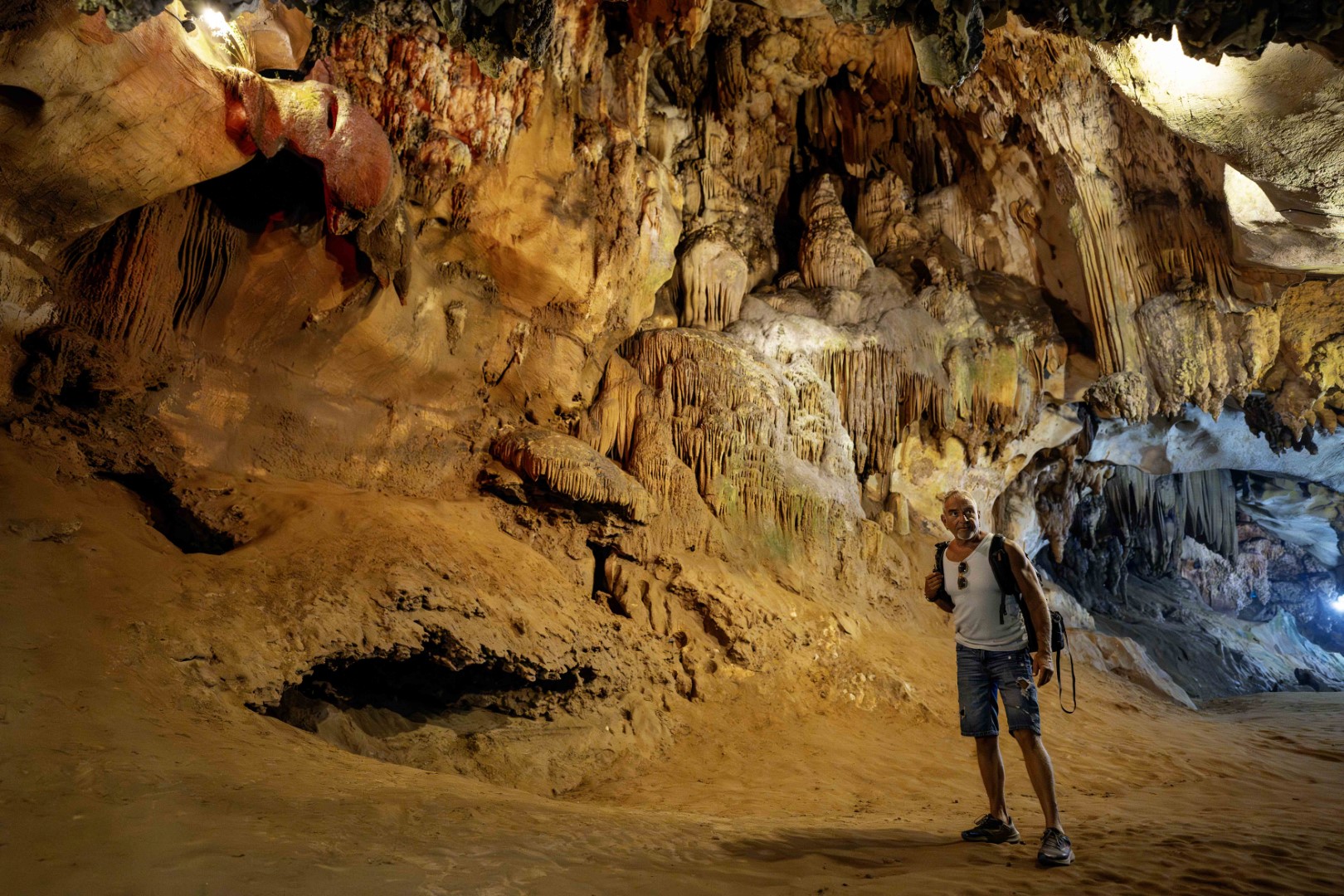
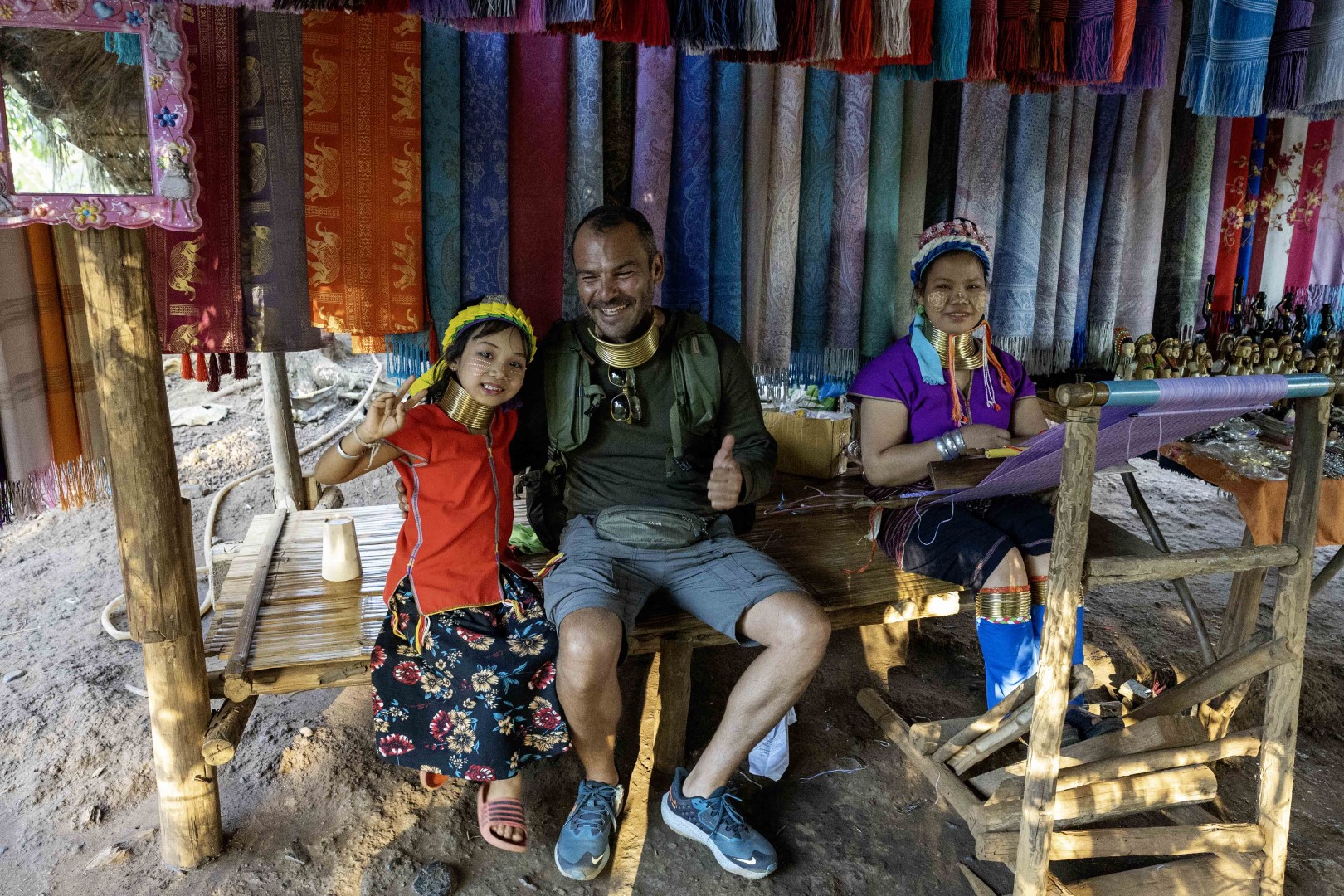
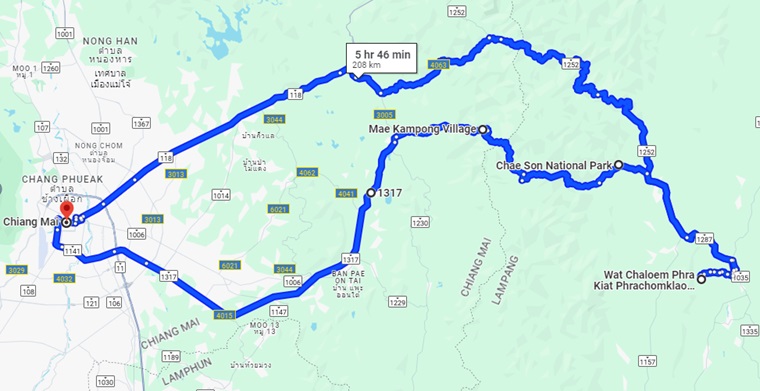
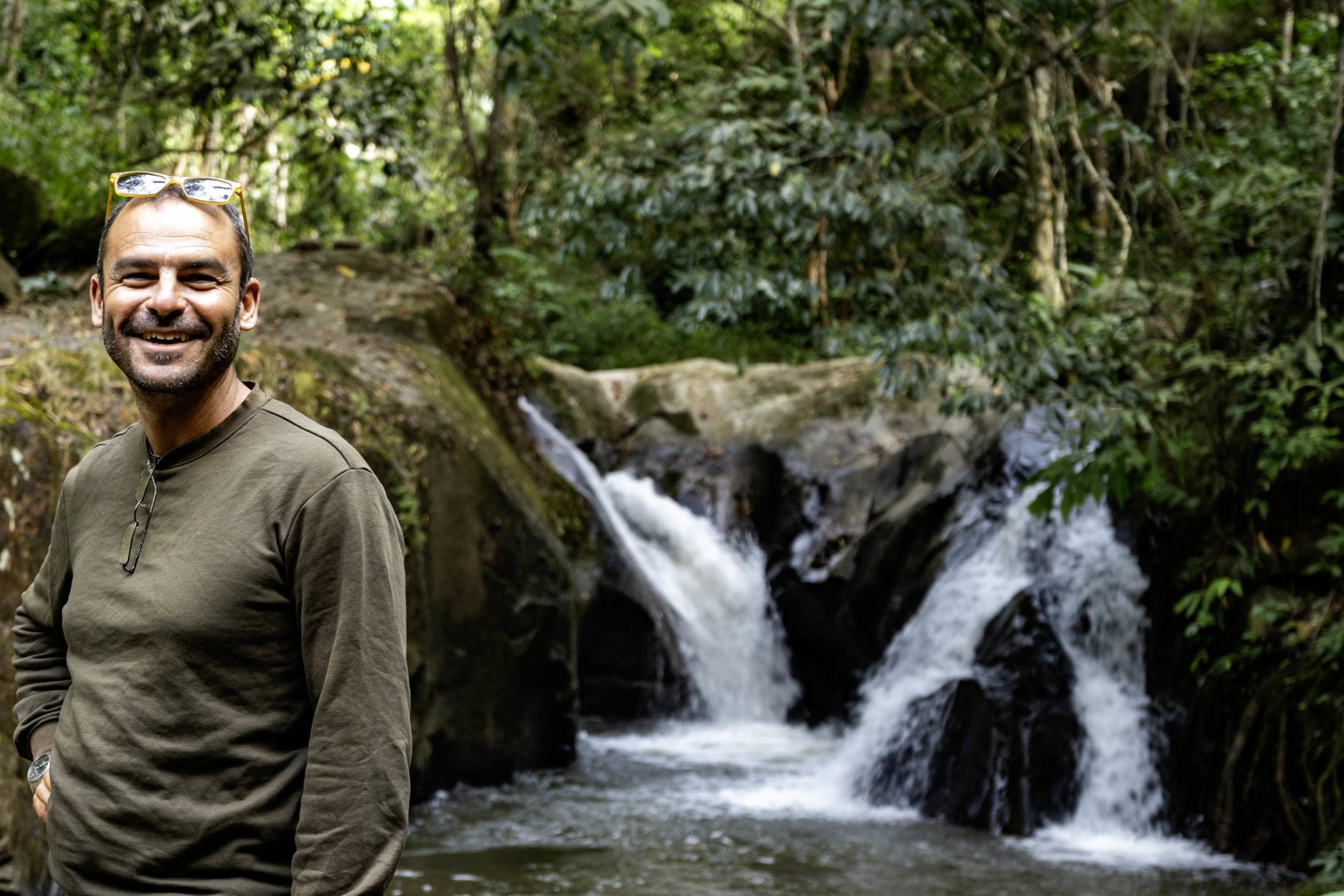
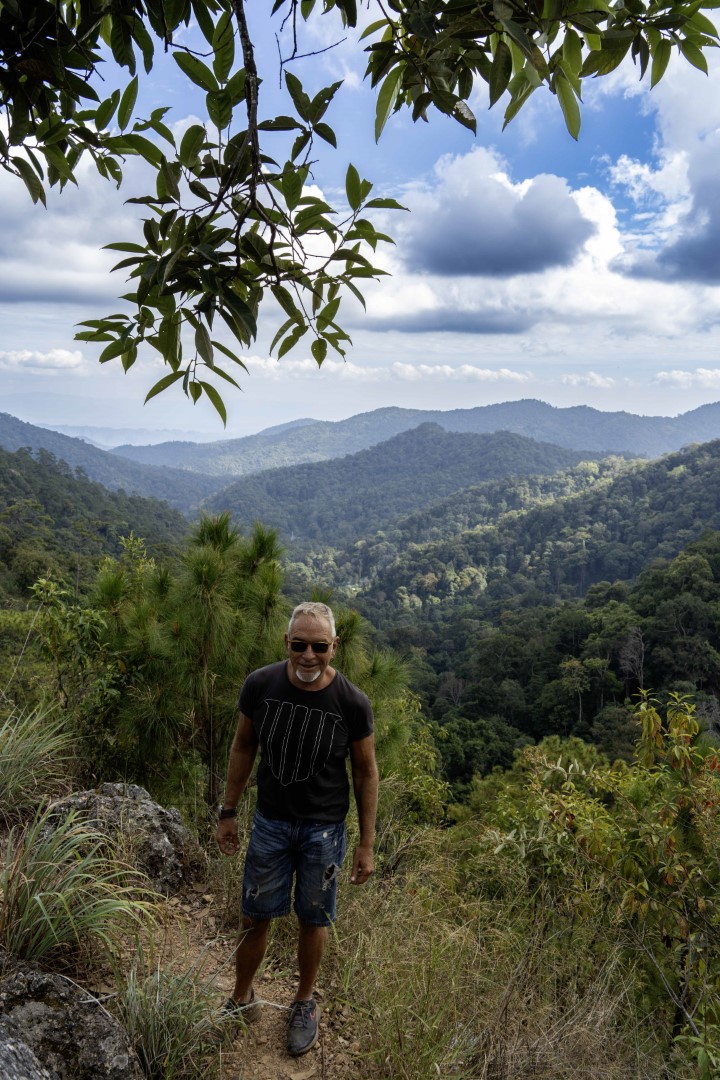
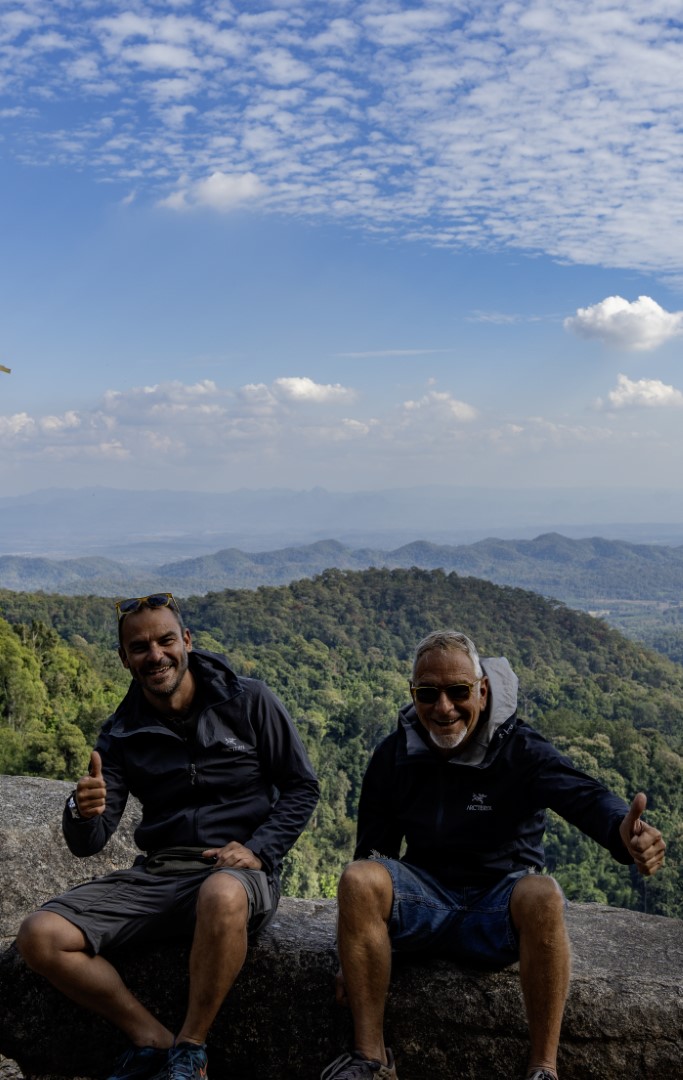
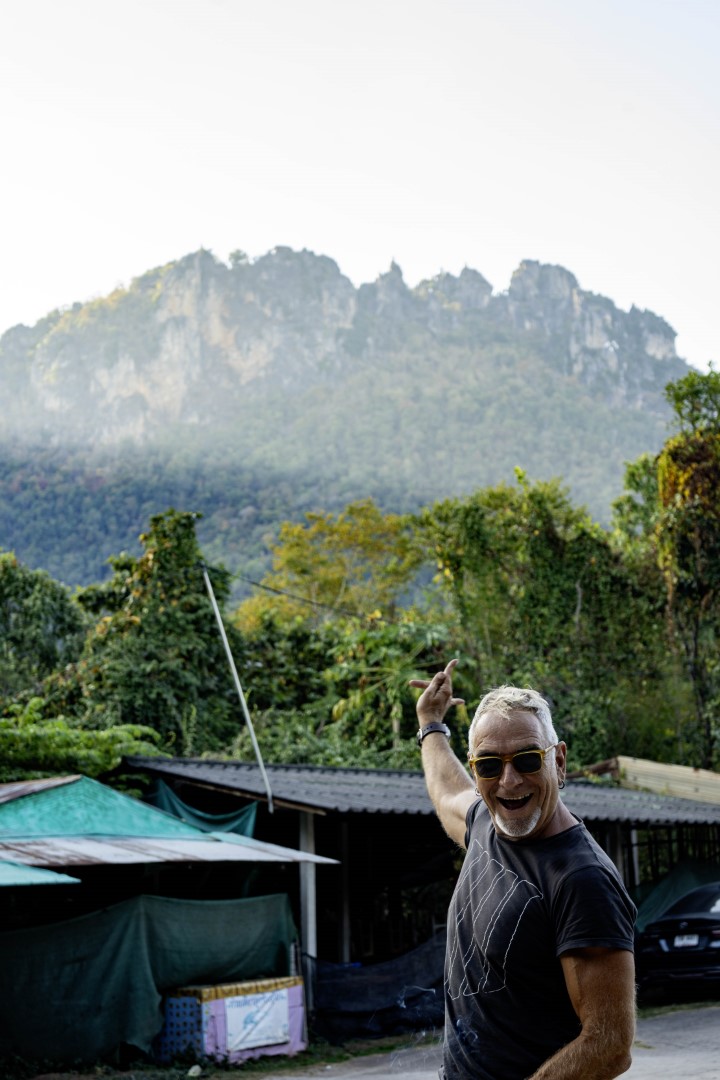
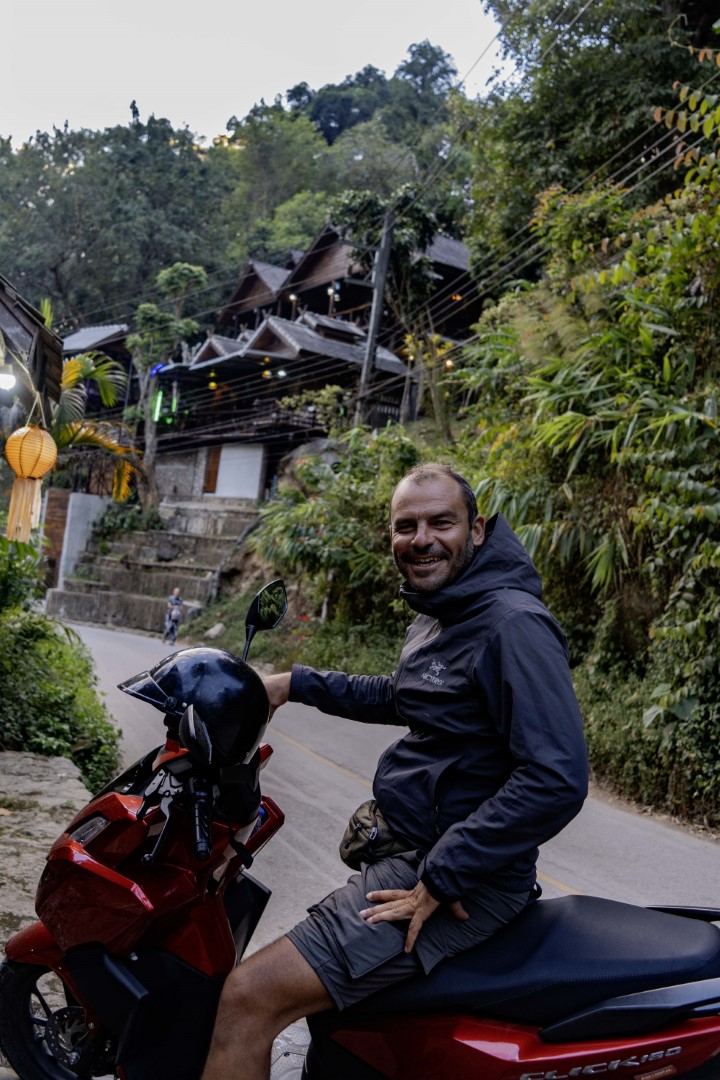
The last tour in northern Thailand, called the Samoeng loop, was the shortest and the "lightest" in terms of challenges. We started from Doi Suithep, the mountain west of Chiang Mai. In addition to a palace and one of the most sacred temples in Thailand, the mountain provides impressive views of Chiang Mai (first photo below). We next visited Mae Sa waterfall, which is 1.5 km long and has several nice coffee shops next to the water (second photo). Finally, we took the usual mountain view photo (third one) at Samoeng viewpoint. Although less interesting than the other trips, the loop offers a convenient way to spend a day. After finishing all bike tours (and bars) that we could find in Chiang Mai, we took the next flight back to Hong Kong.
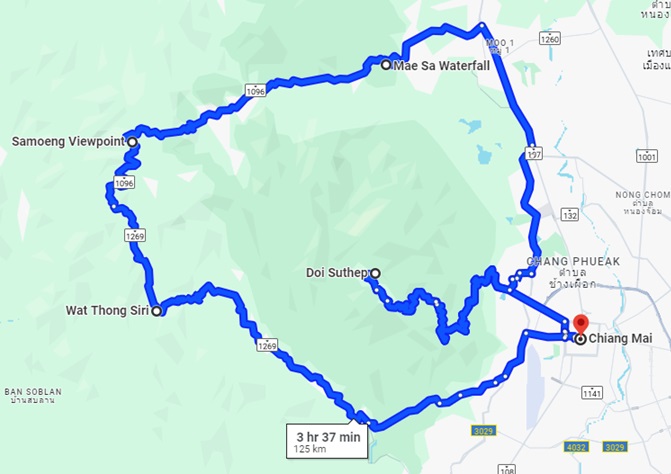
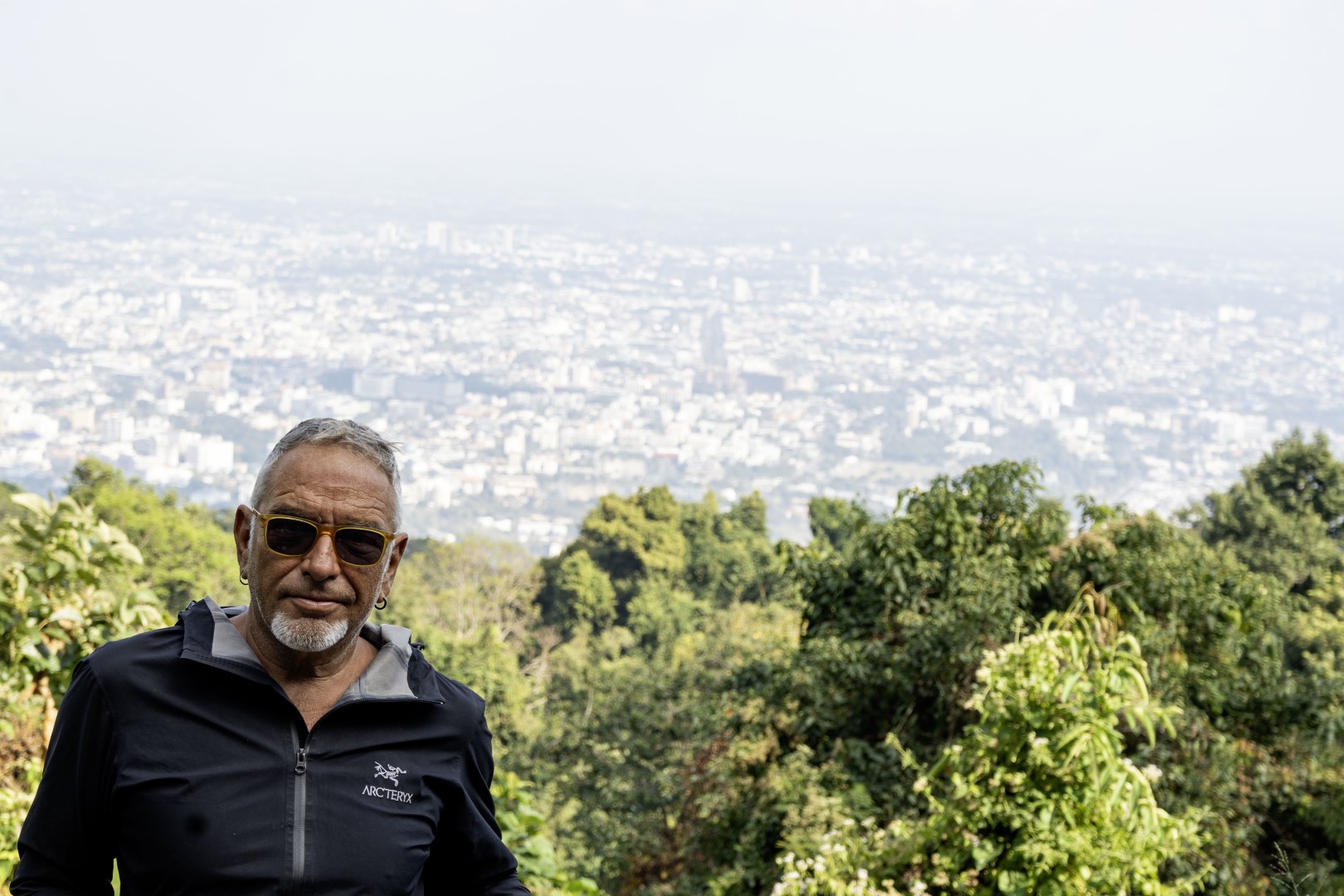
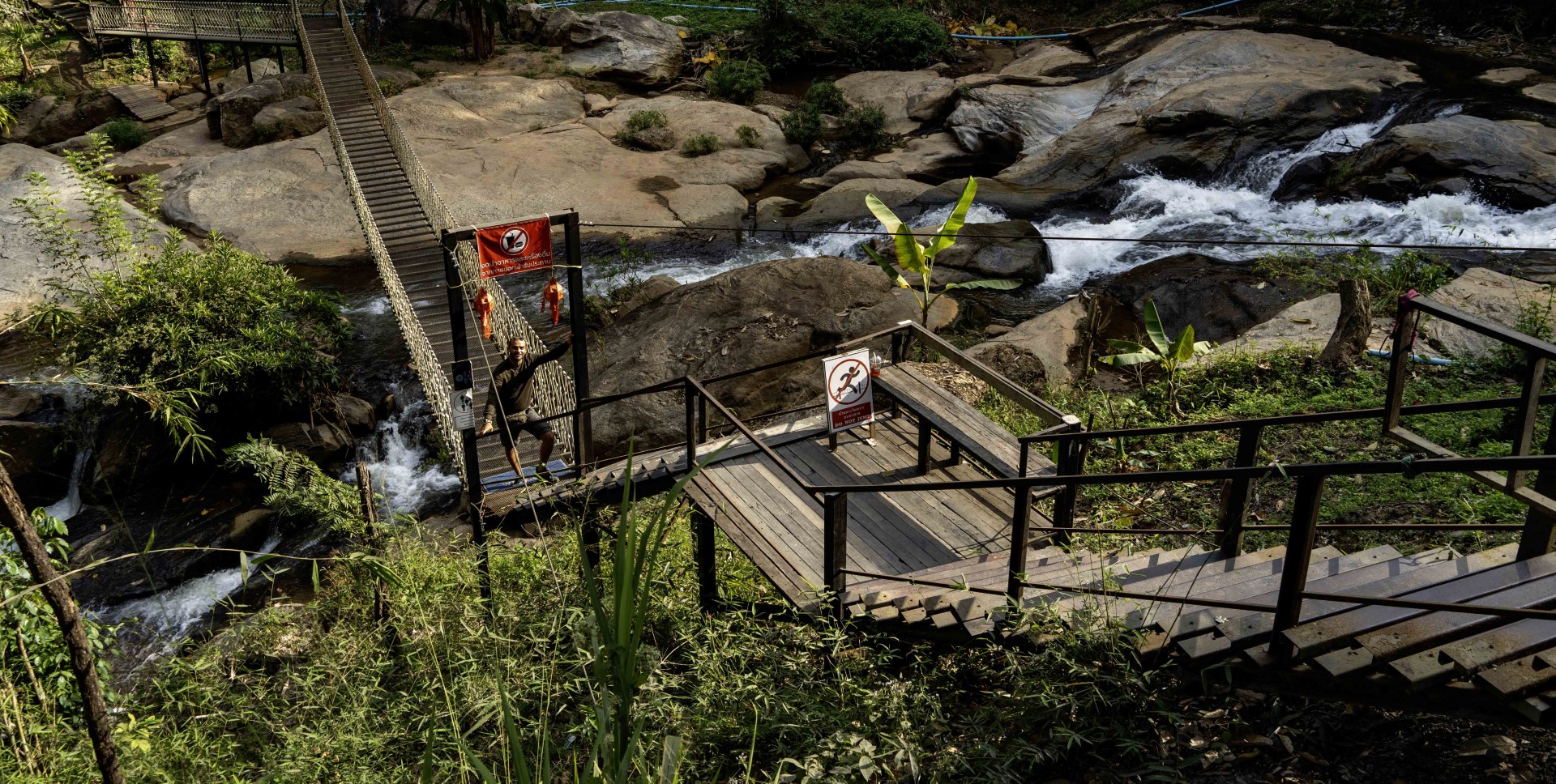
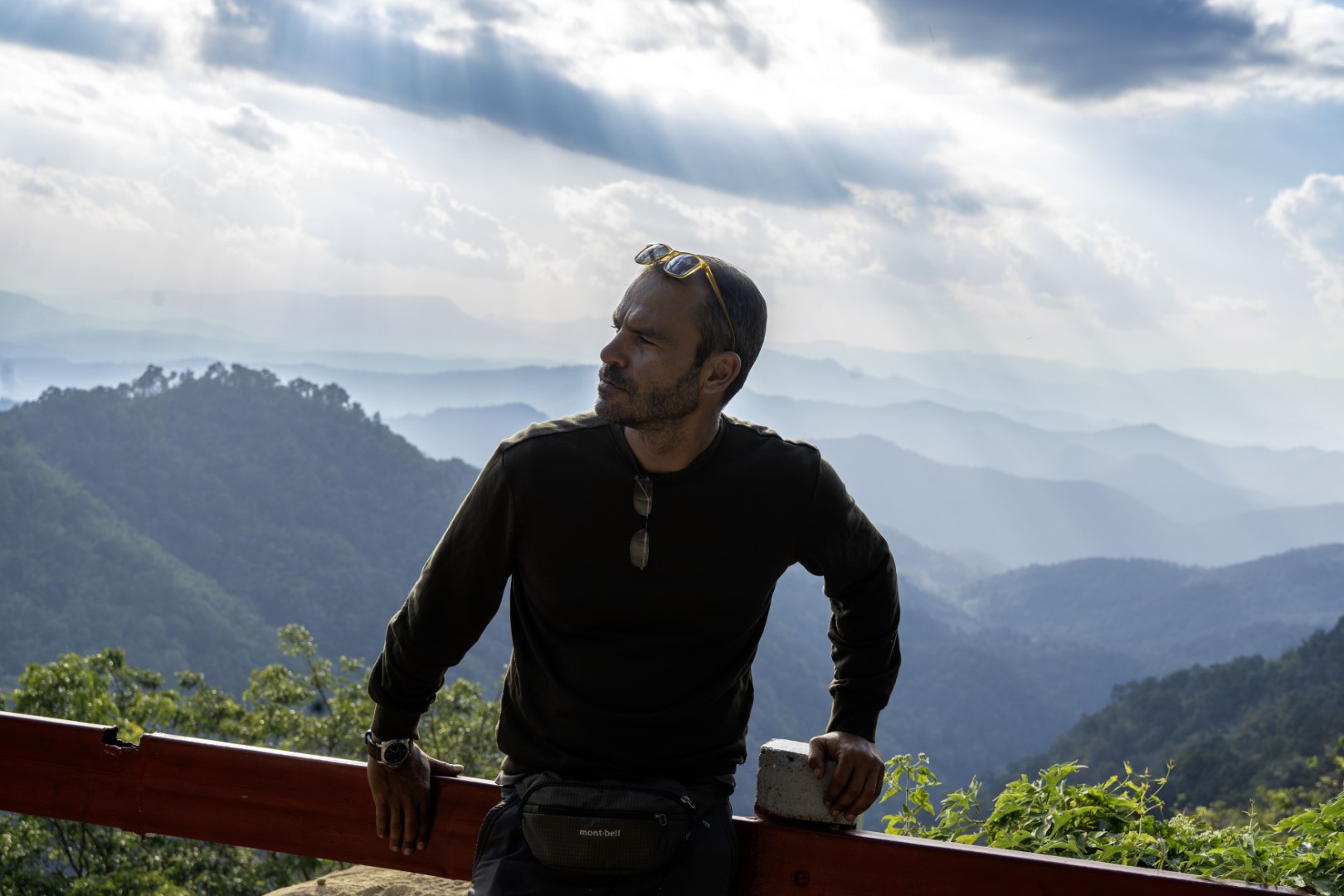
Thailand
is one of the best places for bike tours that I have seen. In addition
to the amazing landscape, it is cheap (especially the non-touristic
places), the food is excellent, the roads are good, and the drivers are
careful. Even the policemen are helpful. I was stopped the only time
that I did not have my international driving license on me, and the
policeman suggested to go and pick it up from my (nearby) hotel - in
other countries this is standard excuse for a bribe. I especially enjoyed
north Thailand (it was my first time there). The beautiful rides in the
mountains compensate for the lack of beaches. Moreover you avoid the
crowds and the heavy traffic of touristic places like Phuket, Koh
Samui and Krabi. And if you want to go swimming, there is always some waterfall
in the vicinity.
Bonus pictures and drone video from a beach north of Kao Lak and our hotel in Ko Pha Ngan.
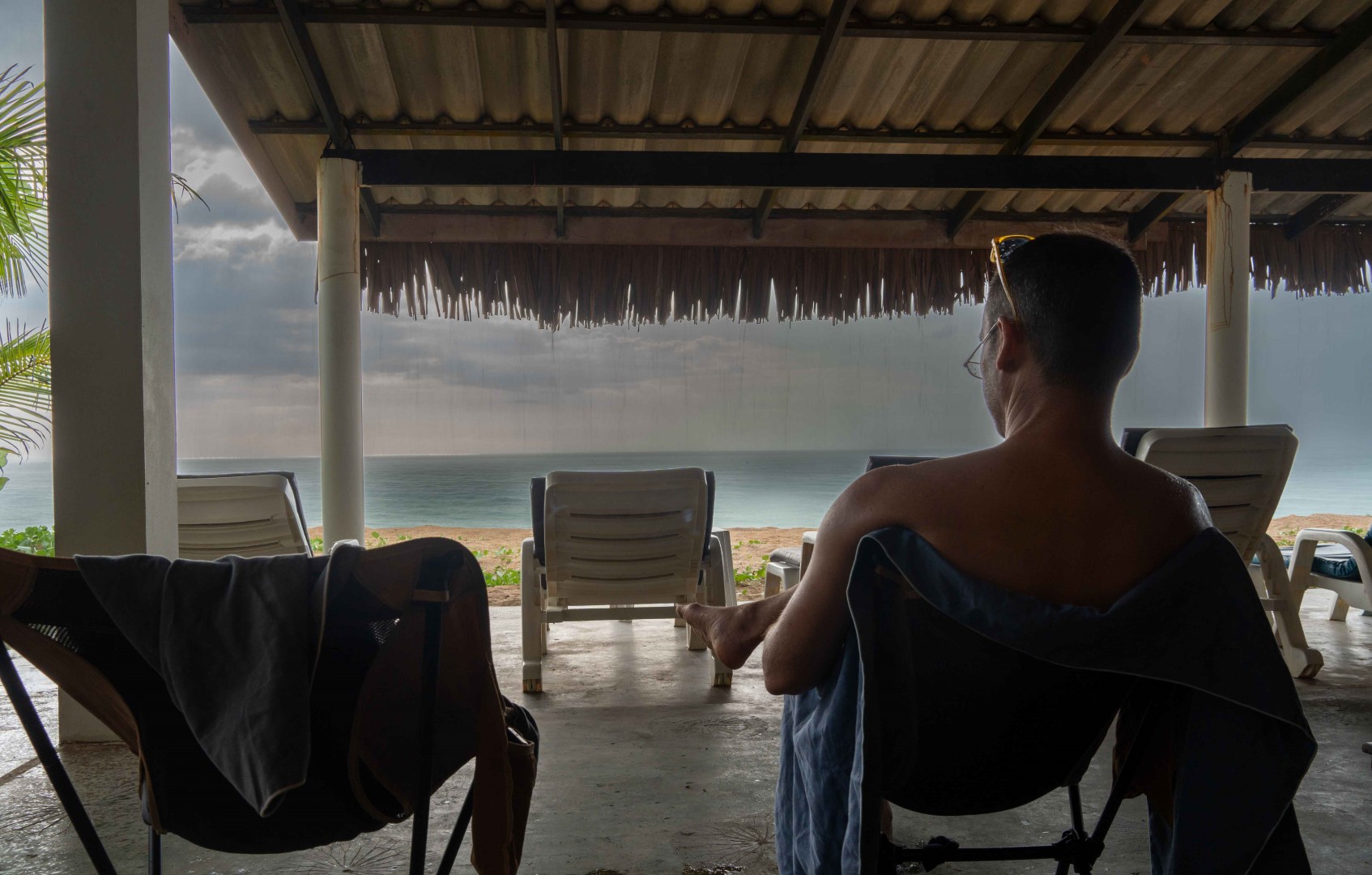
Taking cover from a storm in south Thailand
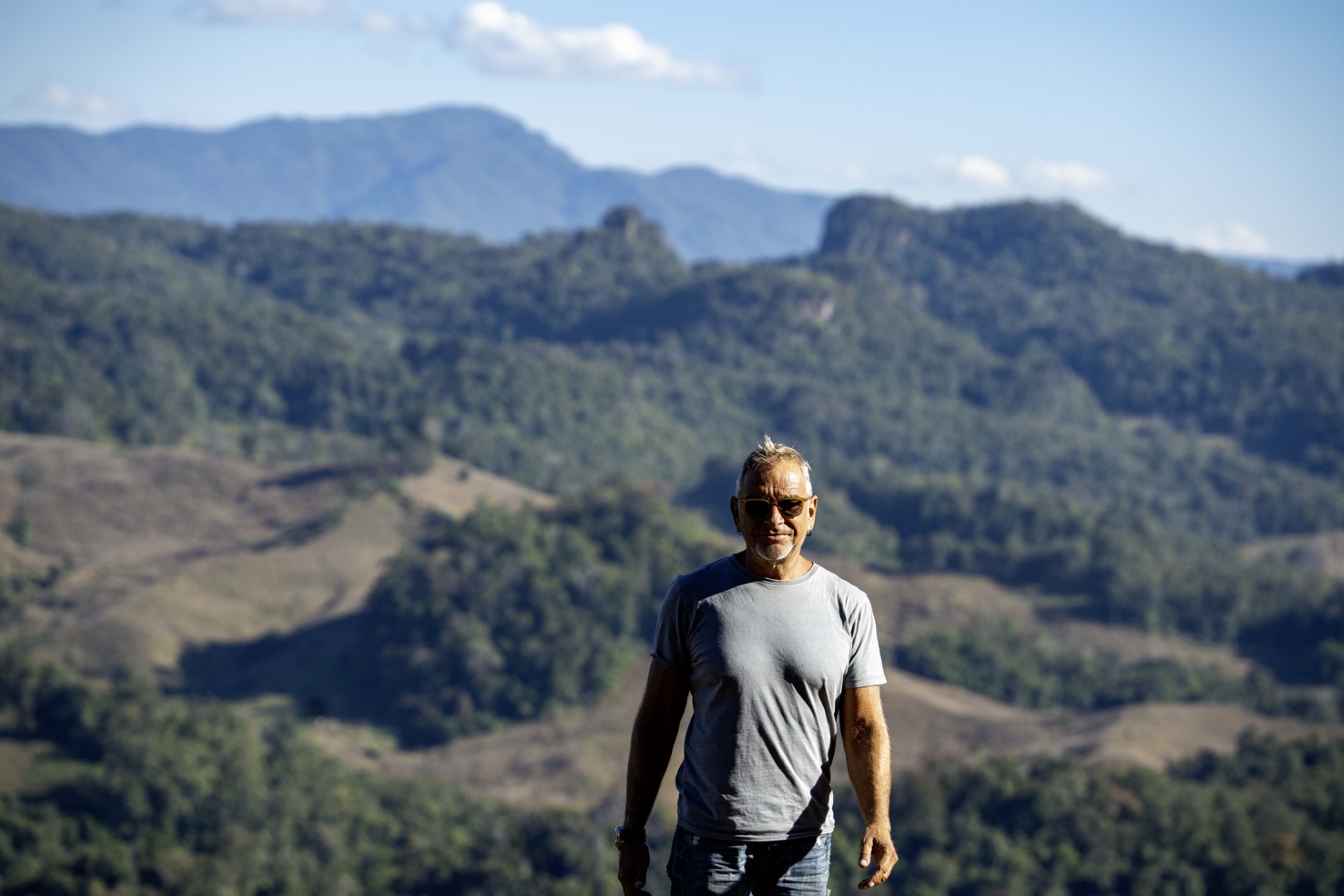
Random mountain in the north
2022 December – 2023 January
South Vietnam, Cambodia: With Andreas and 2 Yamaha 135 Cubs.
After
a long break, mostly due to the COVID pandemic, we did the "Back to the
Basics" tour of South Vietnam and Cambodia. I call it "Back to the
Basics" because we rented cubs, which is the standard learner's
motorbike for most young riders in Greece, including me. In addition to
nostalgia, there are practical reasons that we selected cubs. First,
they are easy to ride. Especially in Vietnam, a heavy motorbike would
be unmanageable due to traffic. In Saigon entering/exiting a roundabout
can be a traumatic experience. Second, they are reliable, and even if
there is a problem, it is easily fixable. We had an issue with a
carburettor in Mui Ne, and a local mechanic fixed it within two hours
for 5 Euros. Third, they are inconspicuous. Attracting attention with a
big bike (in places that there are very few), is not good for thieves,
policemen and custom crossings. There is bike theft in Vietnam, and we
heard that policemen may ask for the occasional bribe. We paid a small
bribe at Customs to enter Cambodia. Finally, renting cubs is very cheap
(as low as US $100 for a month, or $5 per day). We were very happy with
our choice because their maximum travel speed of around 90km/hour is
more than enough for any road that we encountered. Even if we had
bigger bikes, going faster would be very dangerous due to traffic/road
conditions, animals, kids, kids with bikes/bicycles, strange
three-wheel vehicles carrying even stranger things, etc.
We
started the trip in Saigon, now called Ho Chi Minh, where we stayed a
couple of nights. I had been there before, and the most distinguishing
characteristic that I can think of is the heavy traffic. Everybody has
the right of passage independently of the type of road that they enter,
their direction (including opposite direction), type of vehicle
(bicycles to trucks) etc. Driving accessories such as turn lights,
mirrors or brakes are rarely used. Instead everybody presses the horn
all the time, expecting every other driver (who also peeps incessantly)
to pay attention. Even crossing a busy street on foot is challenging. Compared
to some years ago, when most of the traffic was due to cubs and small
scooters, now there are many more cars, including some very expensive
ones, such as Rolls Royce and Lamborghini. In general, there was a
feeling that the whole country is under development, with shiny
luxurious buildings next to poor run-down neighbourhoods. We rented from Dragon Bikes -
Patrick was helpful and importantly easy to communicate in English (he
is American). In general, most Vietnamese do not speak English, and I
suggest to have Google translate readily available, with Vietnamese
downloaded, especially in non-touristic areas (e.g., do not always
expect restaurant menus in English).
From
Saigon, we headed towards the sea and our first destination Mui Ne. The
map below covers the first part of our trip in South Vietnam, until
reaching Cambodia. Note that Google Maps show that the travel time for
1843km is 39 hours. Indeed, it was mostly accurate. Also note that this
was the dry season. I would not consider at all a trip (to any tropical
destination) during the rainy season because it may pour for weeks in a
row, which combined with the road and traffic conditions, makes driving
difficult and dangerous. This is the reason that we did not go to North
Vietnam although there are some impressive routes in the mountains. It
was the first trip that we used a drone (DJI Mini 3 Pro)
for pictures, and I am very happy with the results. It really enables some unique
perspectives that are impossible with regular cameras. I even started
taking video.
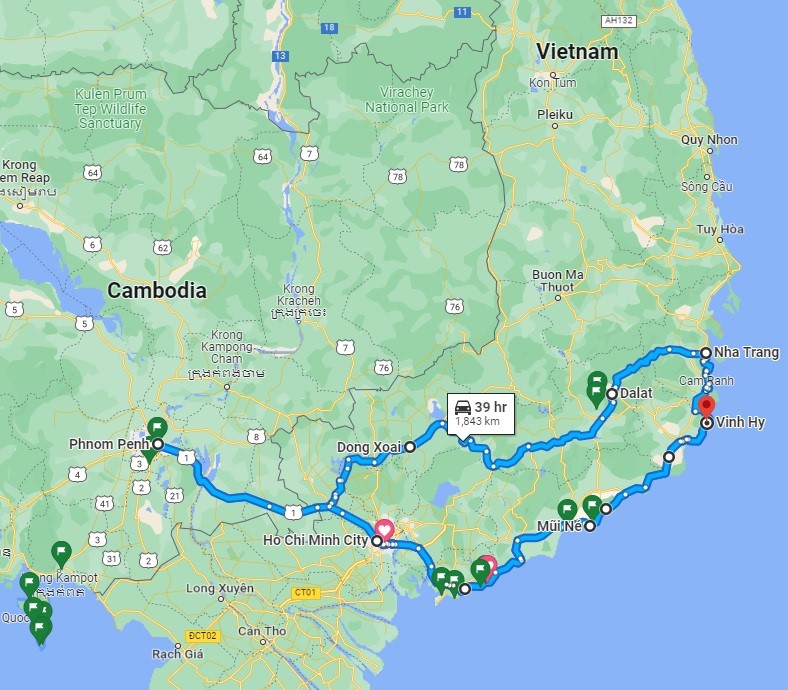
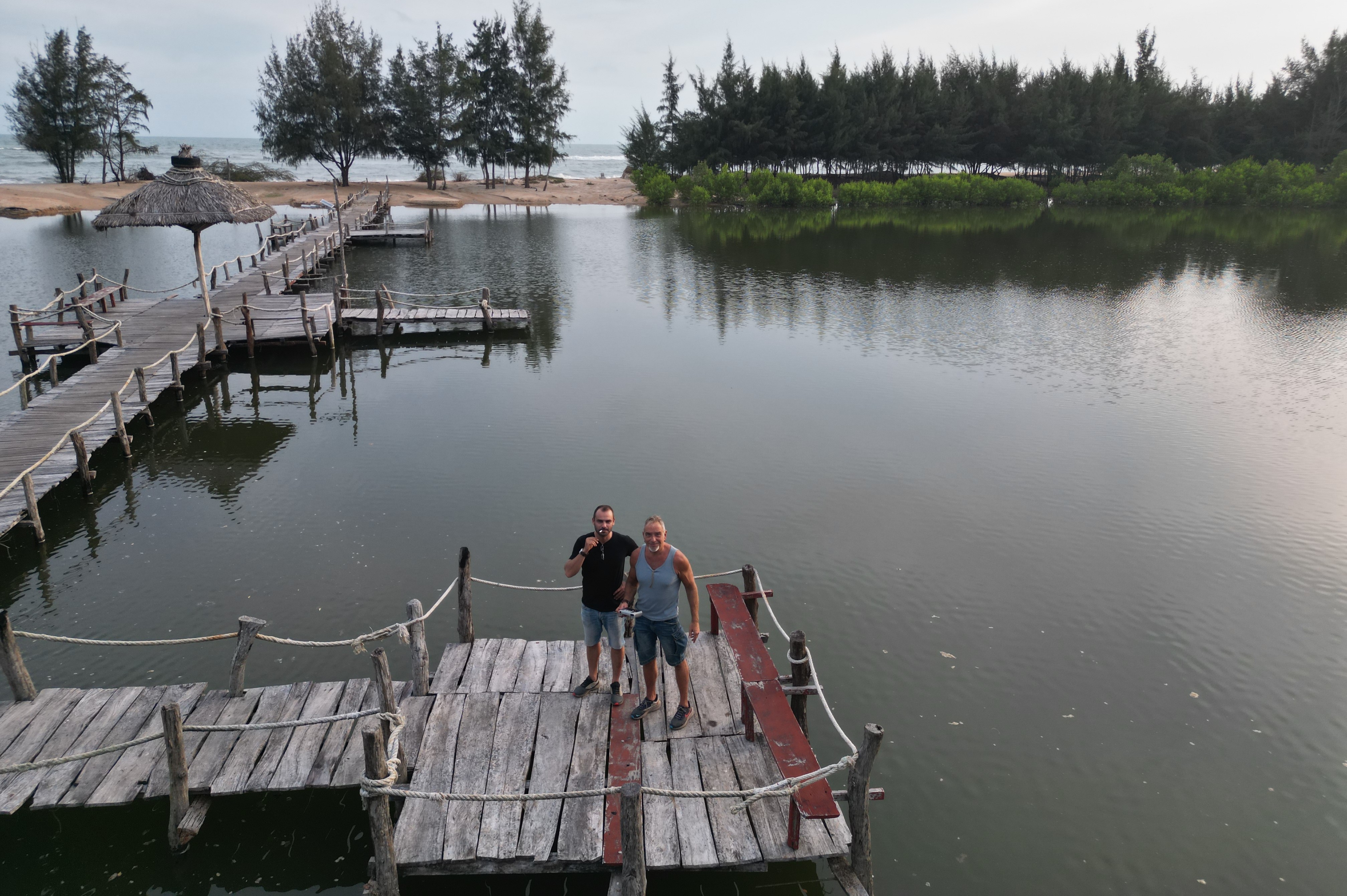
We
stayed in Mui Ne a couple of nights. It is an old fishing village
around a port (first picture), which has substantial touristic
development. However, it seems that tourism has not really recovered
from COVID yet, and most places were half empty. Nevertheless, there
are nice coffee shops by the sea (second picture) and bars/restaurants.
Vietnamese ice coffee (with condensed milk) is among my top coffee
choices. While there are coffee shops everywhere in Vietnam, bars in
the Western sense of the term only exist in touristic areas. In some
places it is even complicated to find restaurants, or food that agrees
with Western taste. On the positive side, you can always get a Banh Mi, the tasty Vietnamese sandwich, from a nearby food stall. In general, food, beer and hotel accommodation was very cheap in both Vietnam and Cambodia. Whiskey not so much.
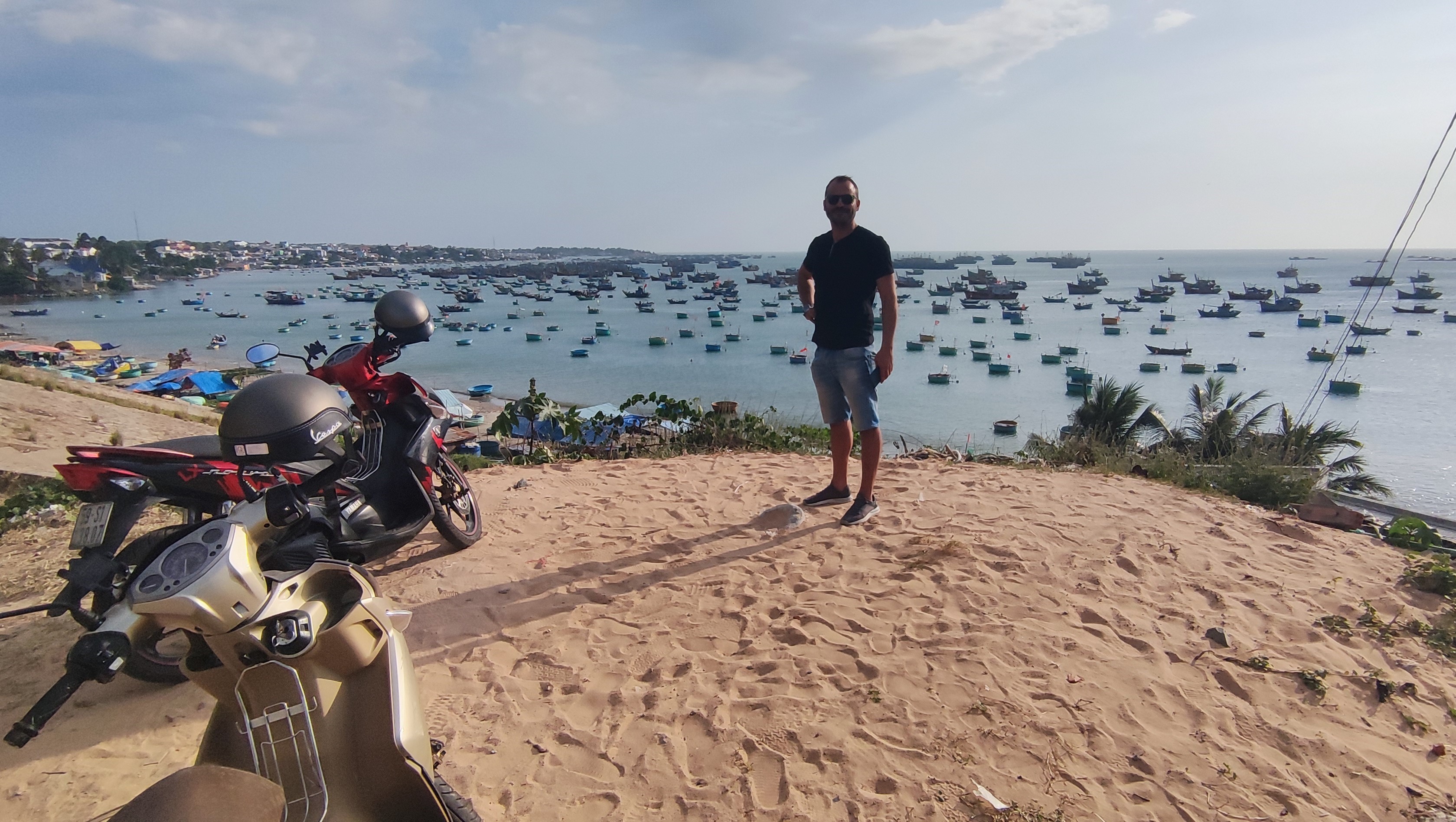
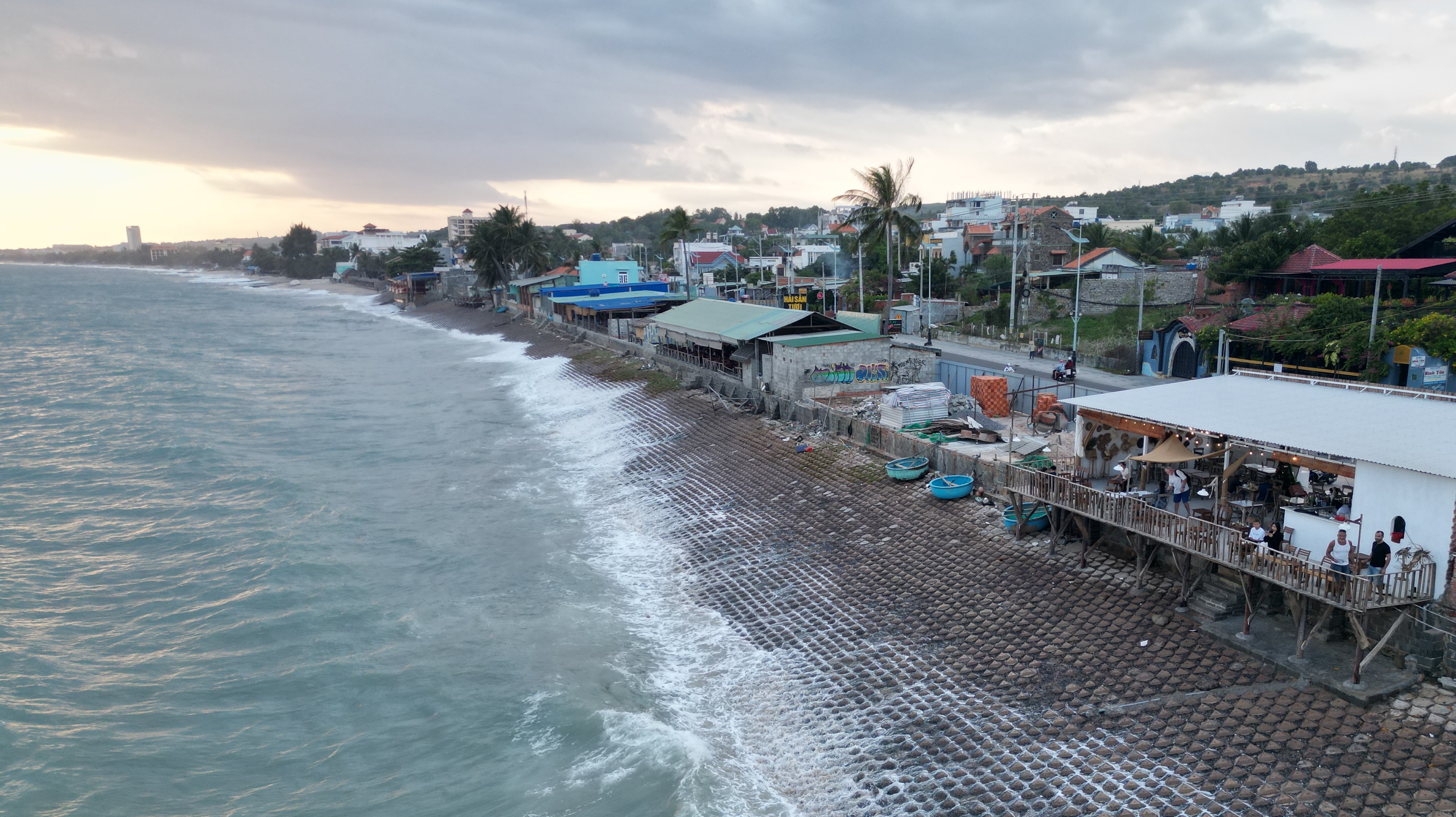
Unfortunately,
during our stay in Mui Ne it was very windy. We tried to swim but it
was impossible due to the strong currents and waves (first picture).
Nevertheless, the kite-surfers had the time of their life. Actually,
this is where I had kite surf lessons about 15 years ago. Just outside
Mui Ne there are the white sand dunes, and a bit further to the north,
the red sand dunes (second picture), which are the largest of the two, and
a major touristic attraction. Surprisingly, they were empty when we went (see video at the end).
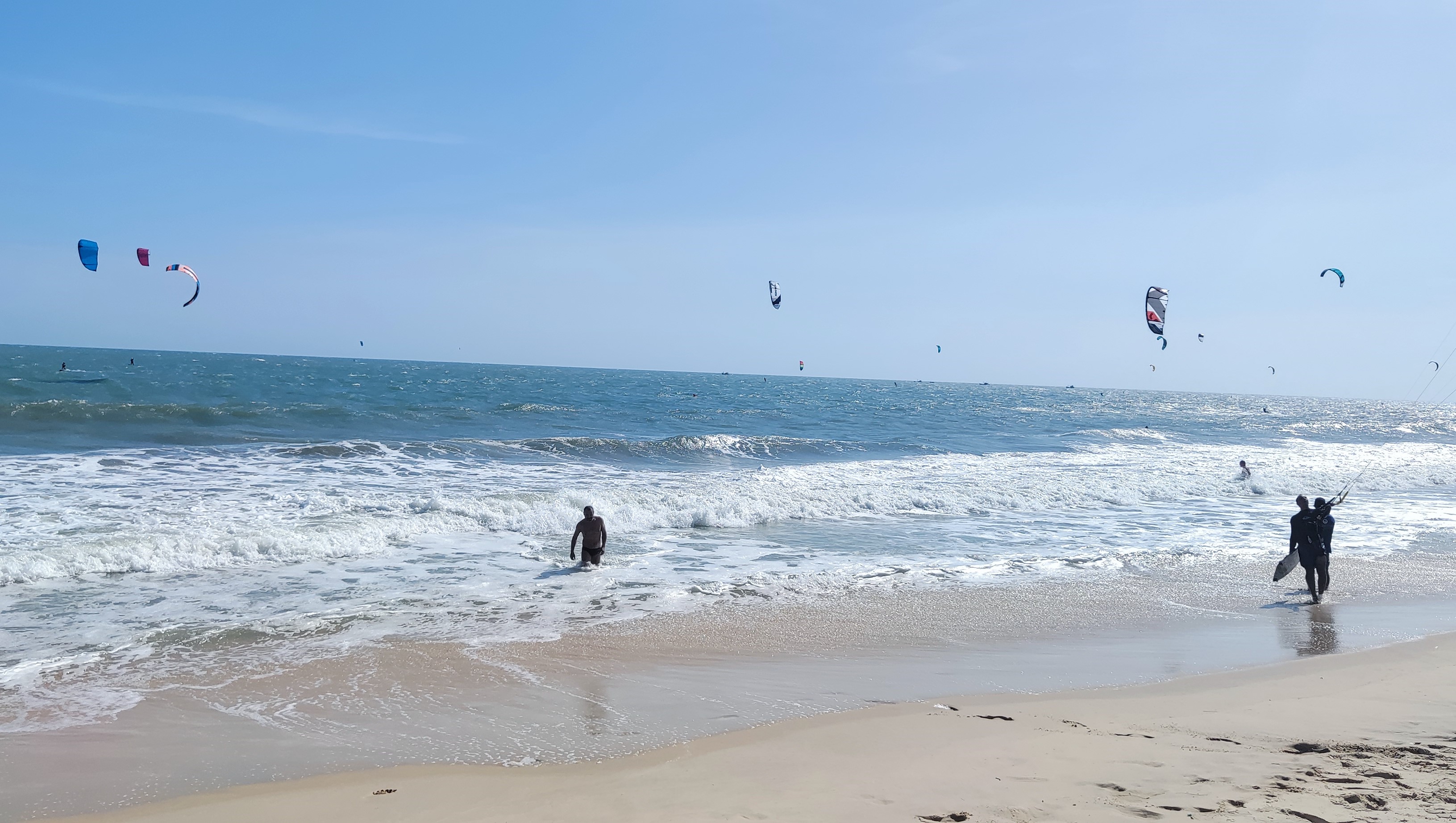
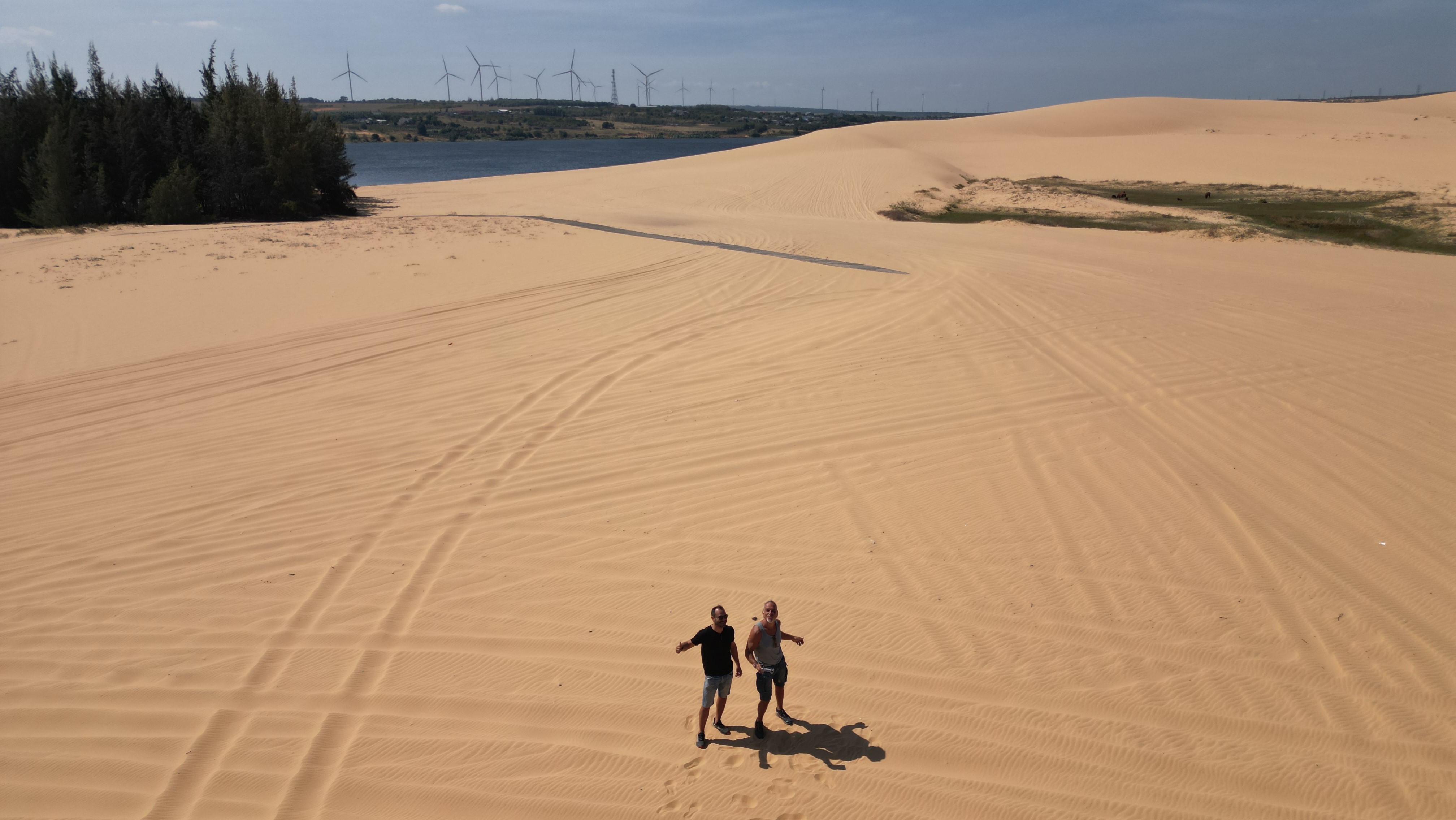
After Mui Ne, we headed towards Nha Trang,
the major coastal city in Southern Vietnam. We did a detour from the
directions of Google Maps in order to visit Vinh Hy, which was worth it
as it was the most scenic route on the coast. The
first picture is outside Vinh Hy, and the second one at a coffee shop
at the port, where we enjoyed our Vietnamese ice coffee.
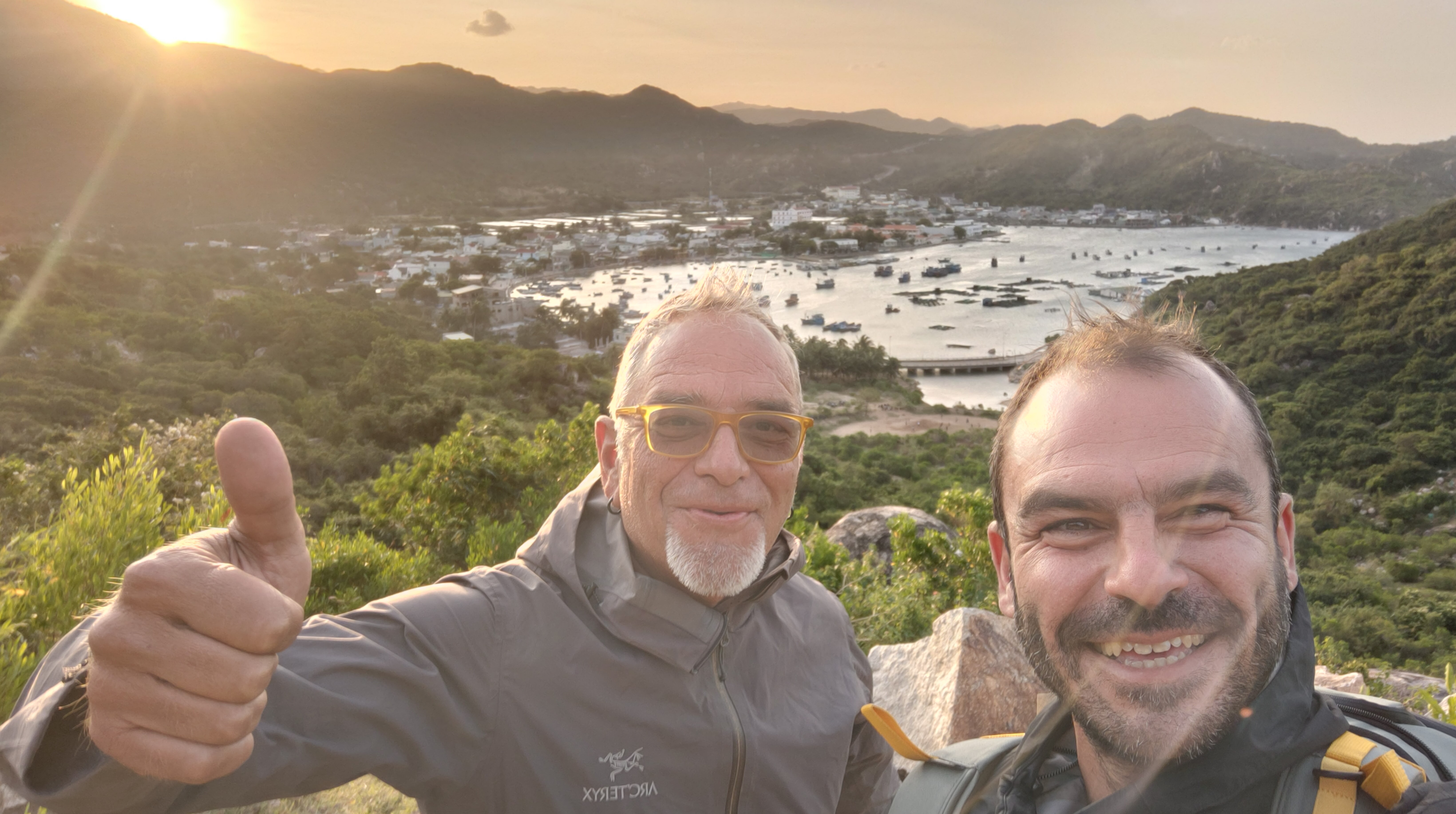
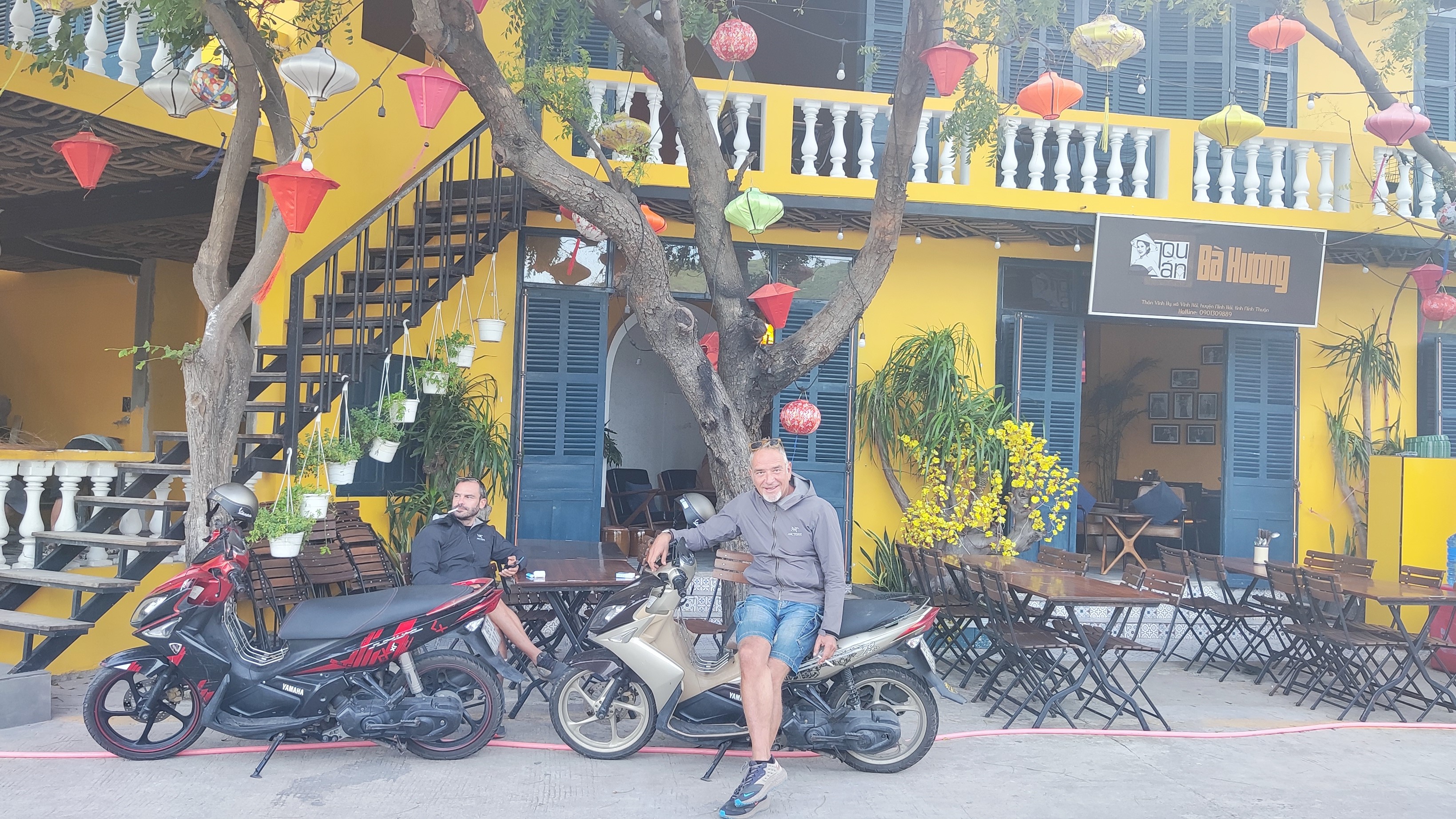
Unfortunately, we were disappointed in Nha Trang.
First, despite being supposedly in the middle of high season, there
were not really enough visitors, or vibe, to justify the huge number of
hotels. In addition, the weather was cloudy and windy, and the beach
closed (I guess due to the wind). Thus, after a night there, we decided
to go to Dalat. Dalat was
built by the French colonists in the mountains (altitude 1500 meters),
in order to escape the summer heat and humidity of Saigon. Getting
there from Nha Trang
involves a scenic road through mountain passes (first picture) and
waterfalls (second picture). Be prepared for low temperatures (a little
above 0 Celcius at night) and possible rain along the way.
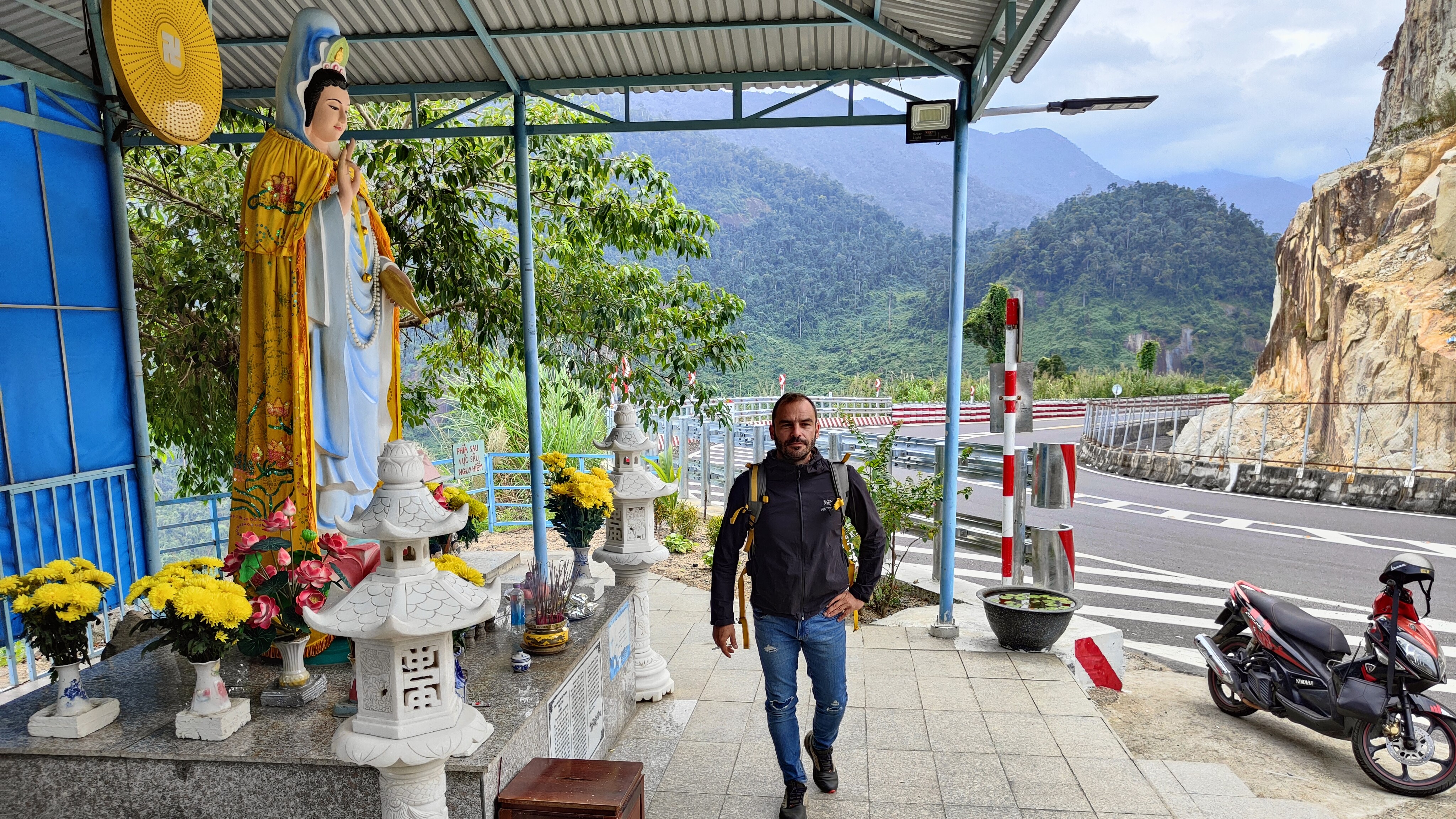
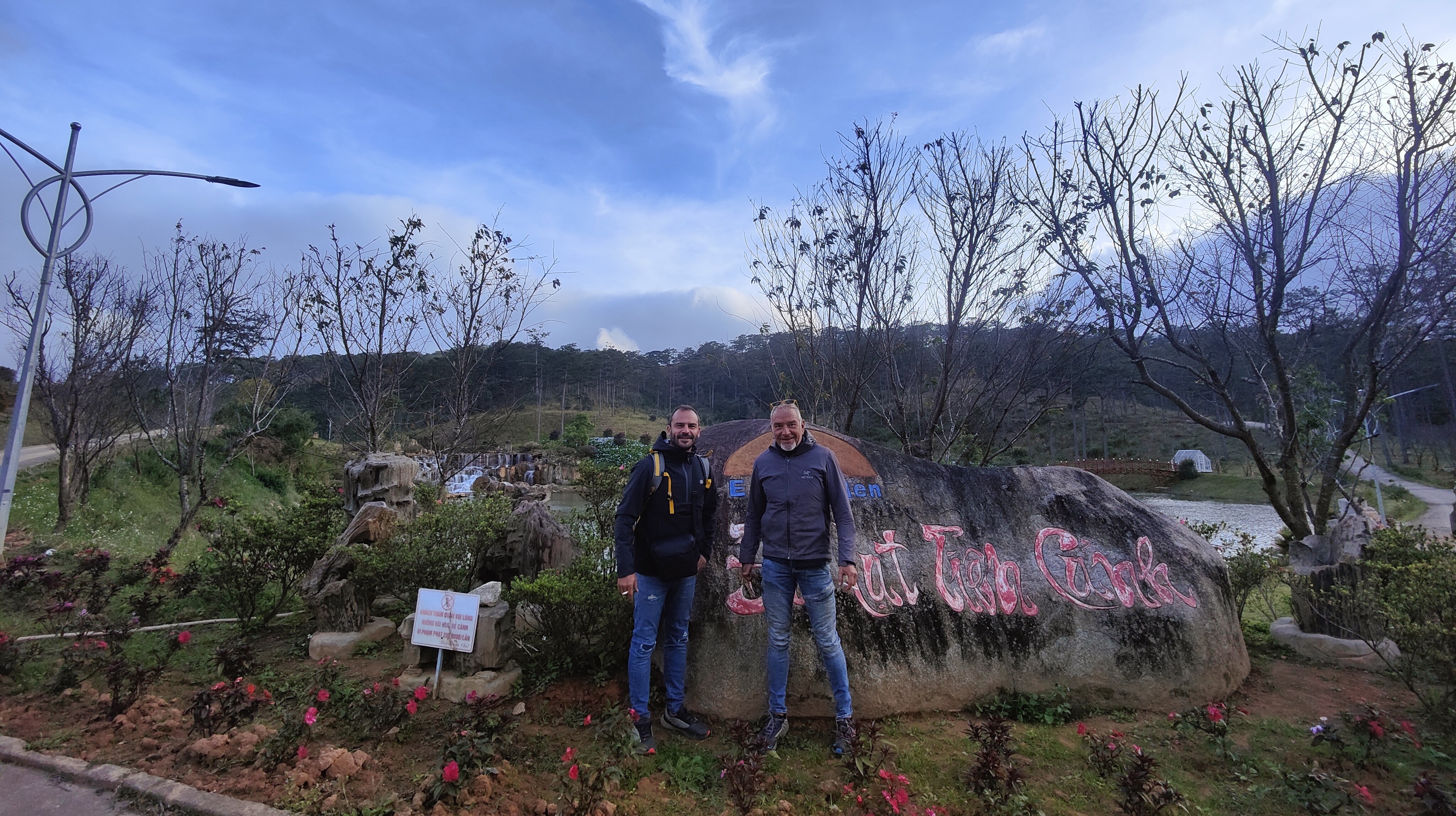
Dalat does
not resemble any city that I have visited in Southeast Asia. With
French architecture, a lake, and surrounded by forests, it is a
Vietnamese version of Geneva (first picture).
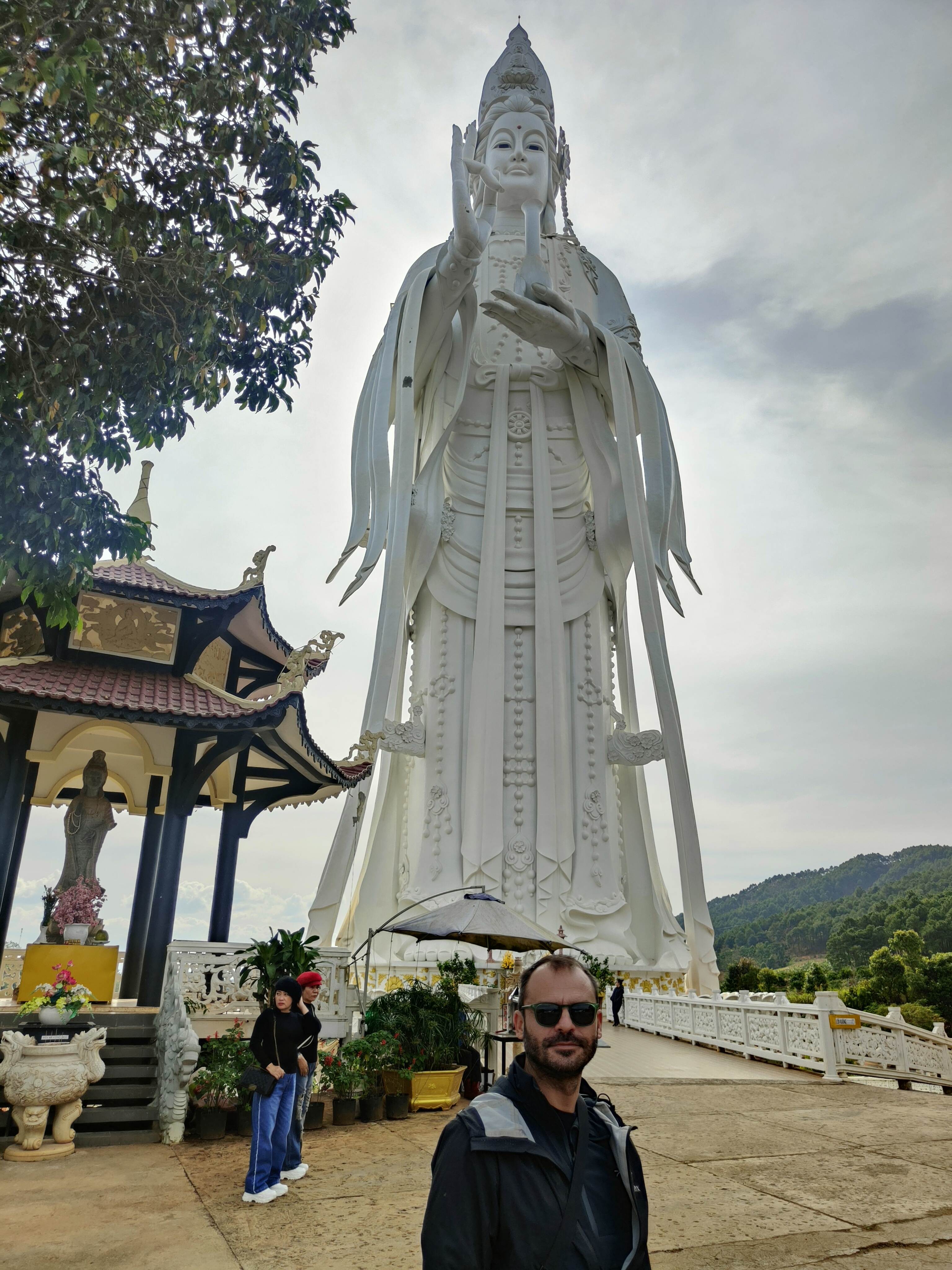
Our next destination was Dong Xoai,
near the border with Cambodia. After leaving the mountains, the road
becomes again mostly flat and dull. We had a lunch stop in Bao Loc,
a nice town built around a lake (first picture), and a coffee break by
a river (second picture), but nothing really remarkable. Also, I did
not really find anything interesting to mention about (or take a
picture of) Dong Xoai, other than it was conveniently close to the border crossing to Cambodia.
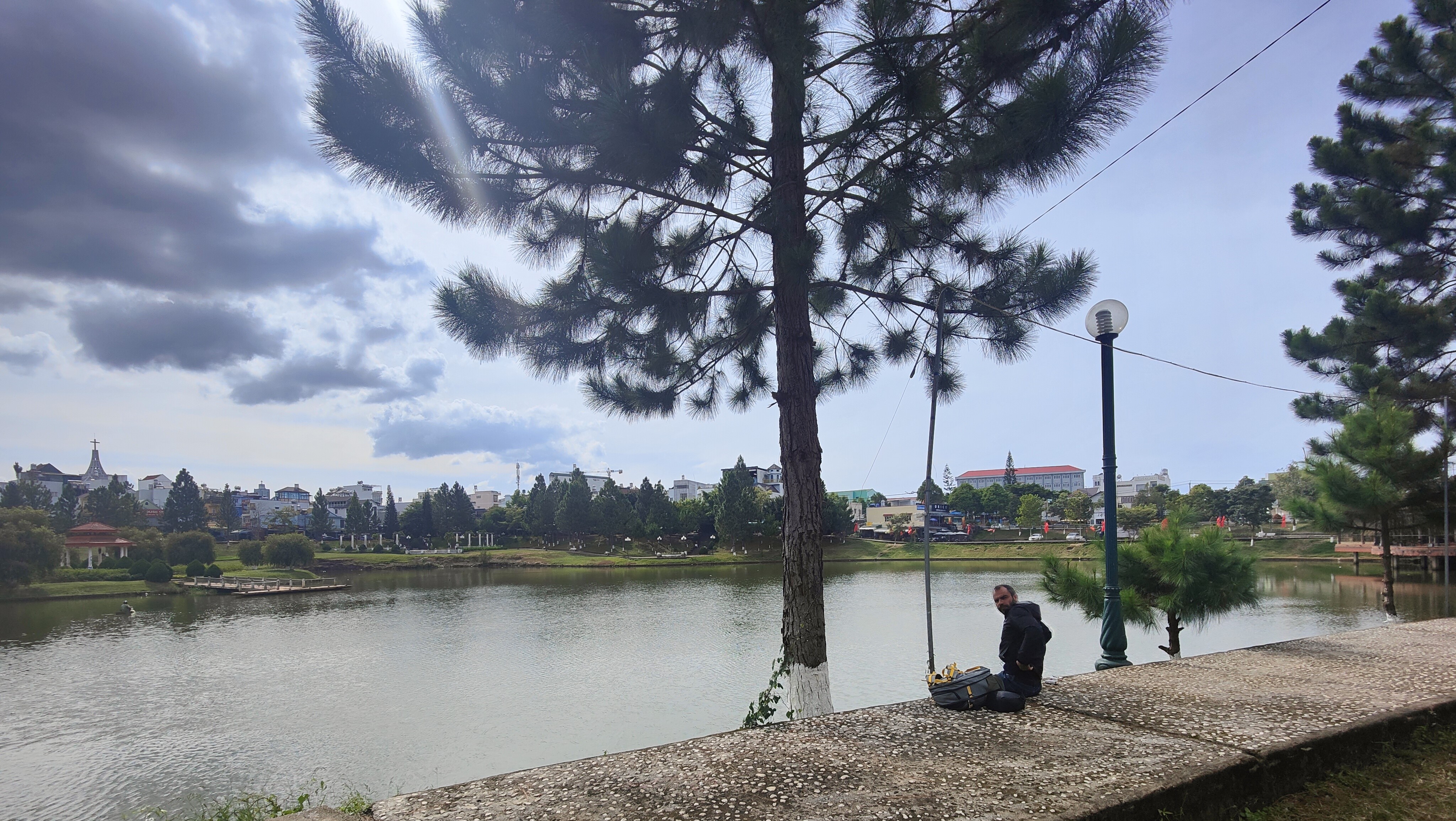
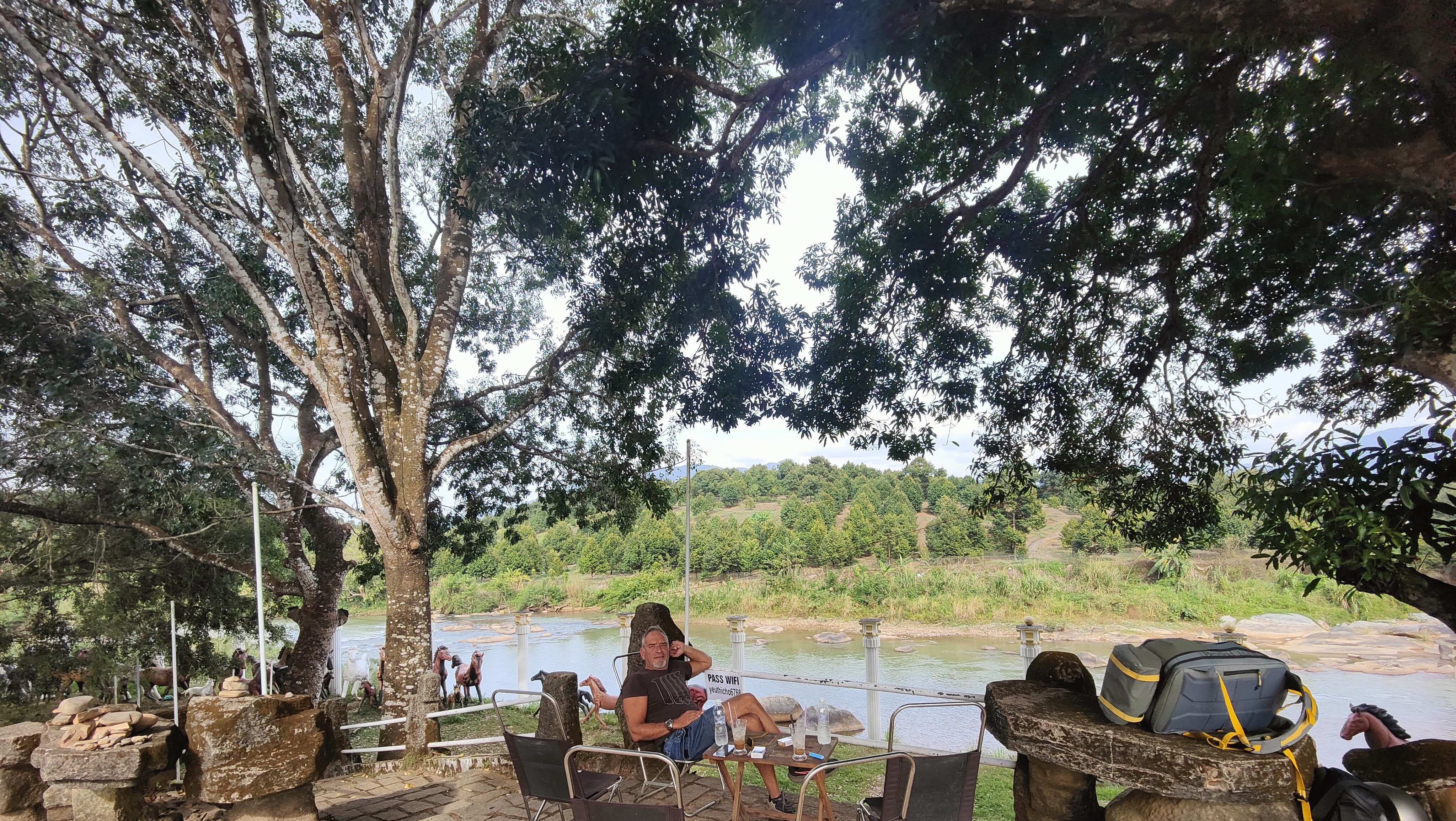
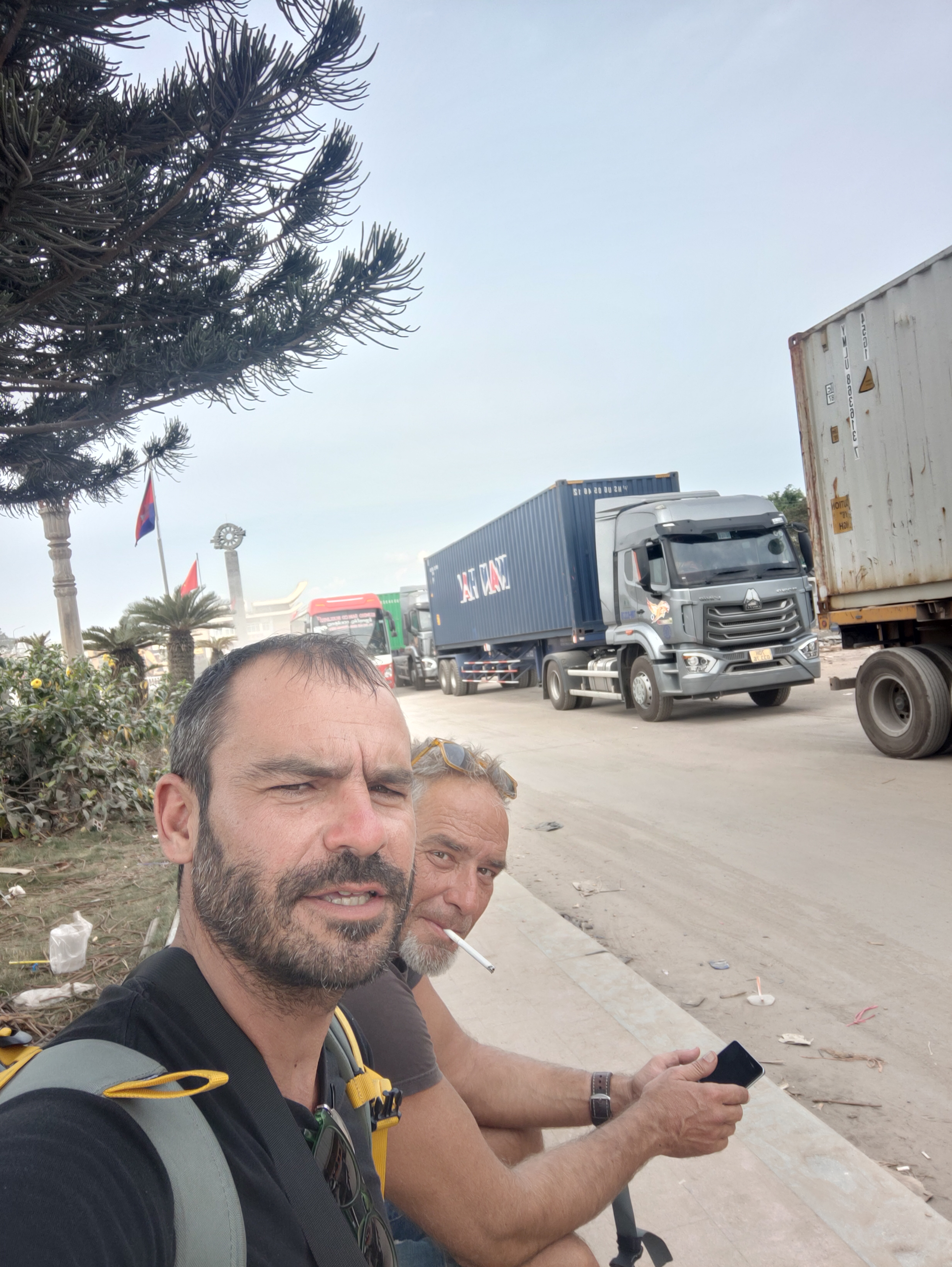
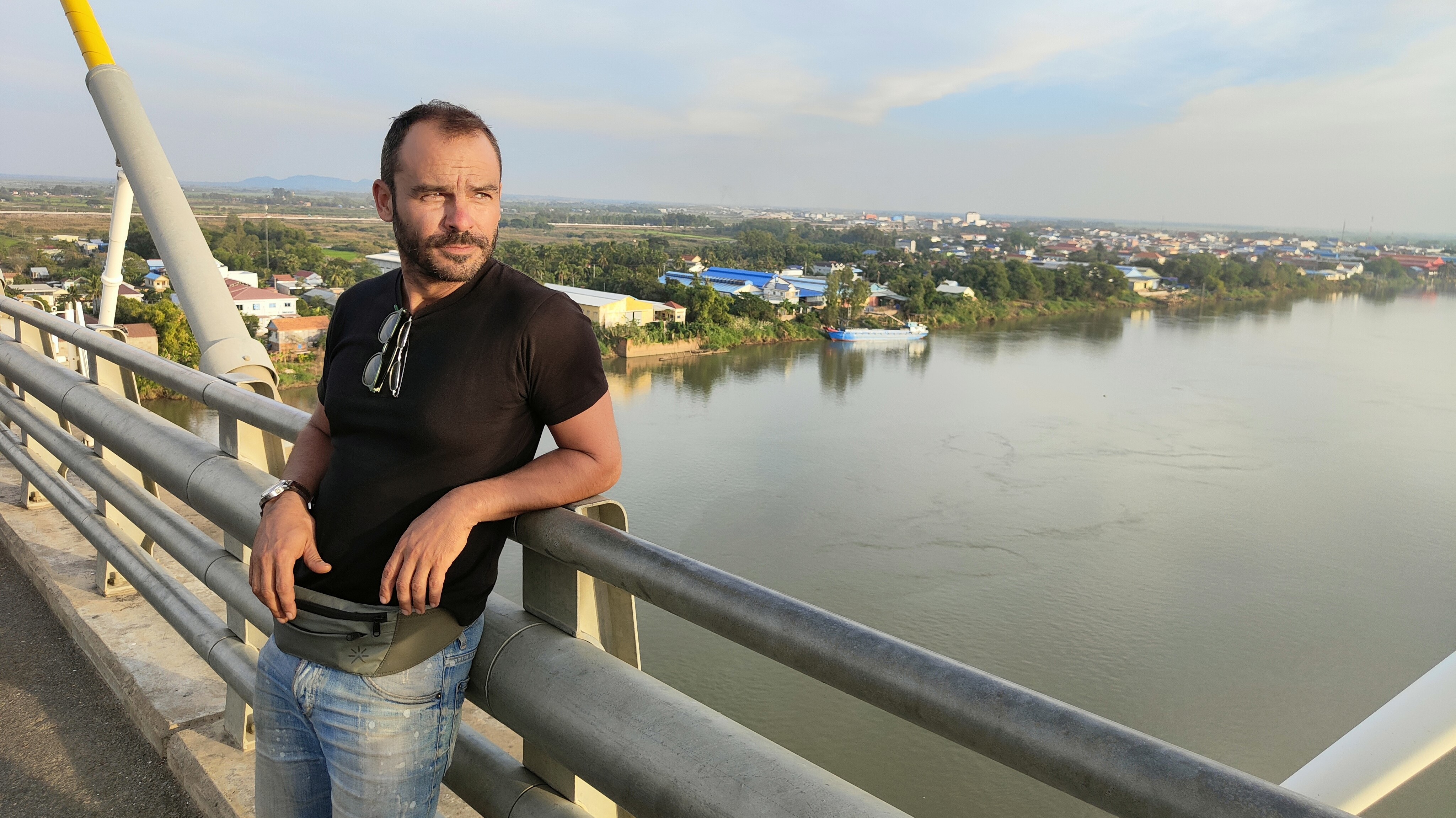
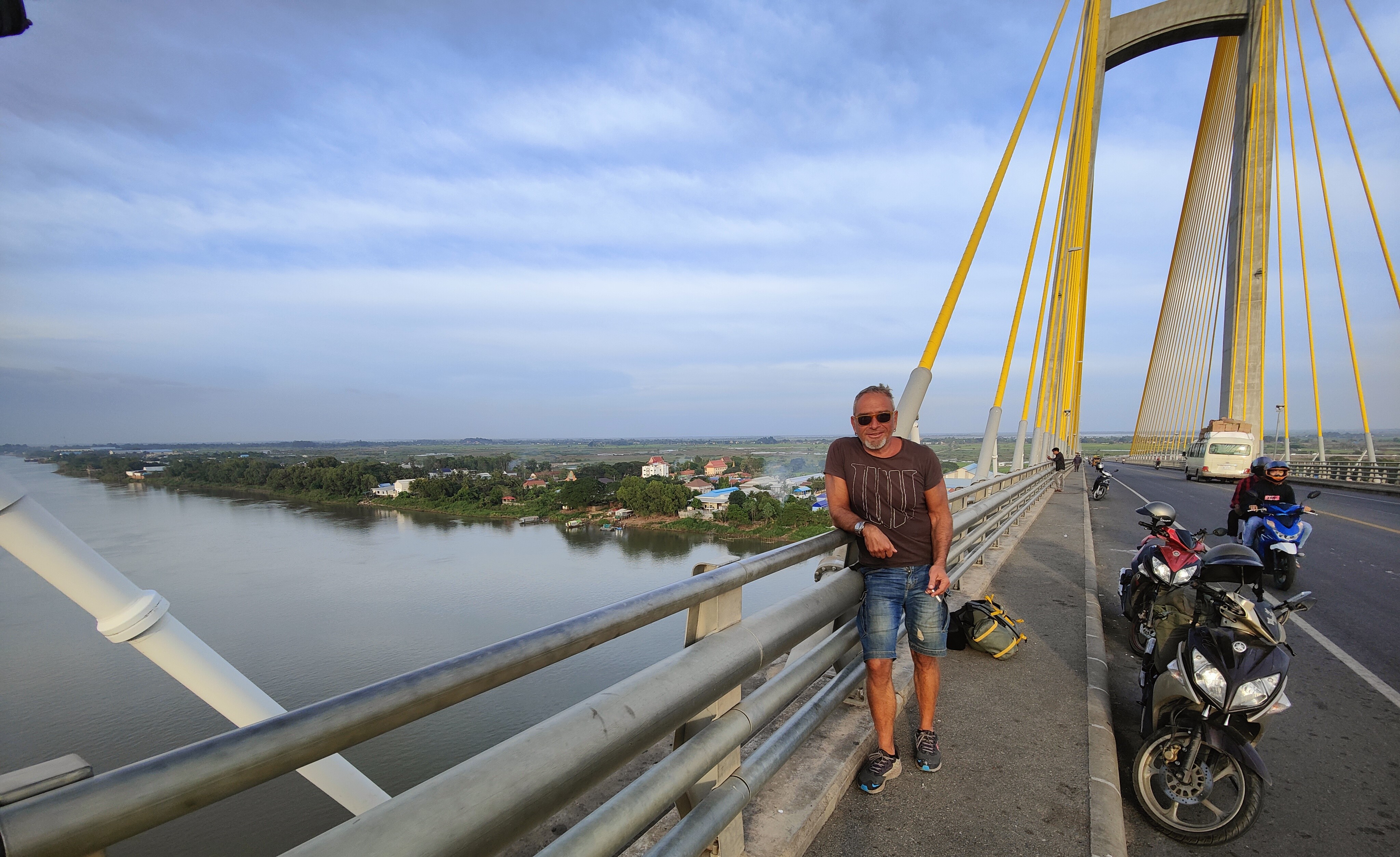
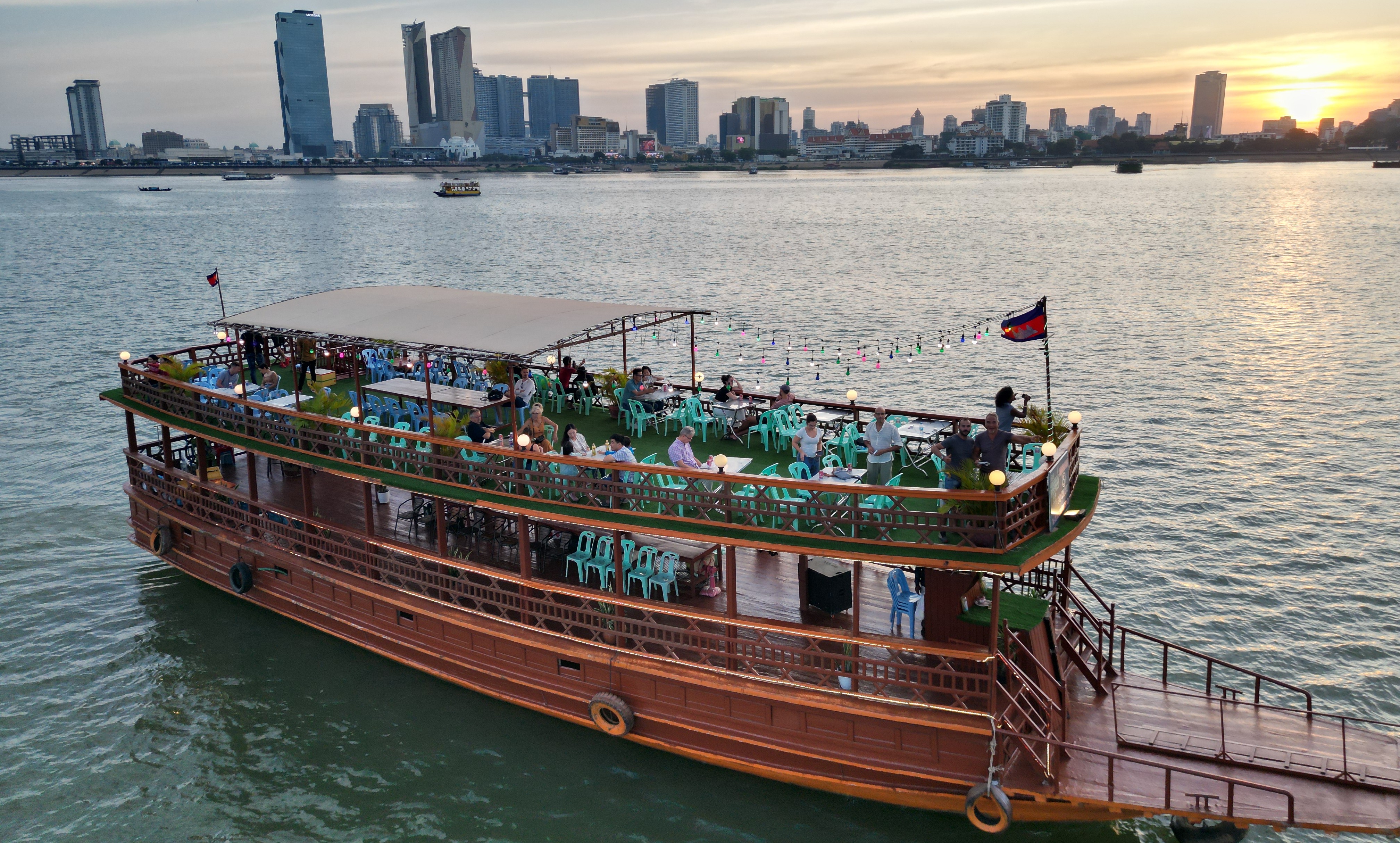
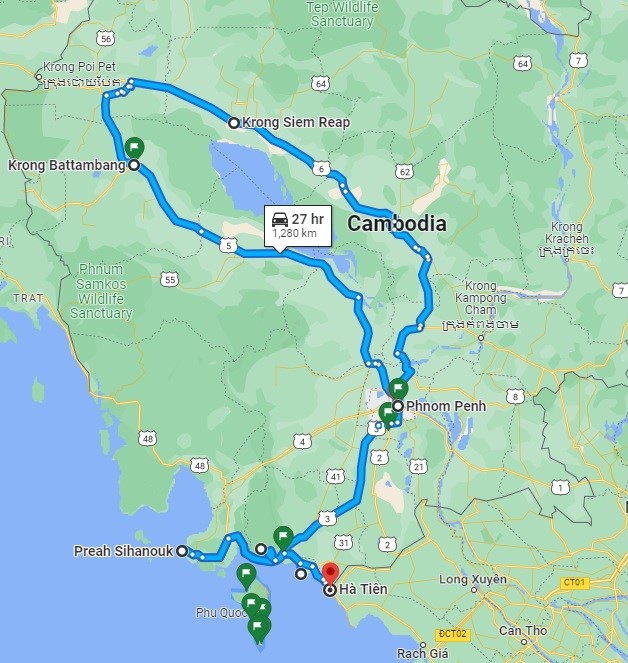
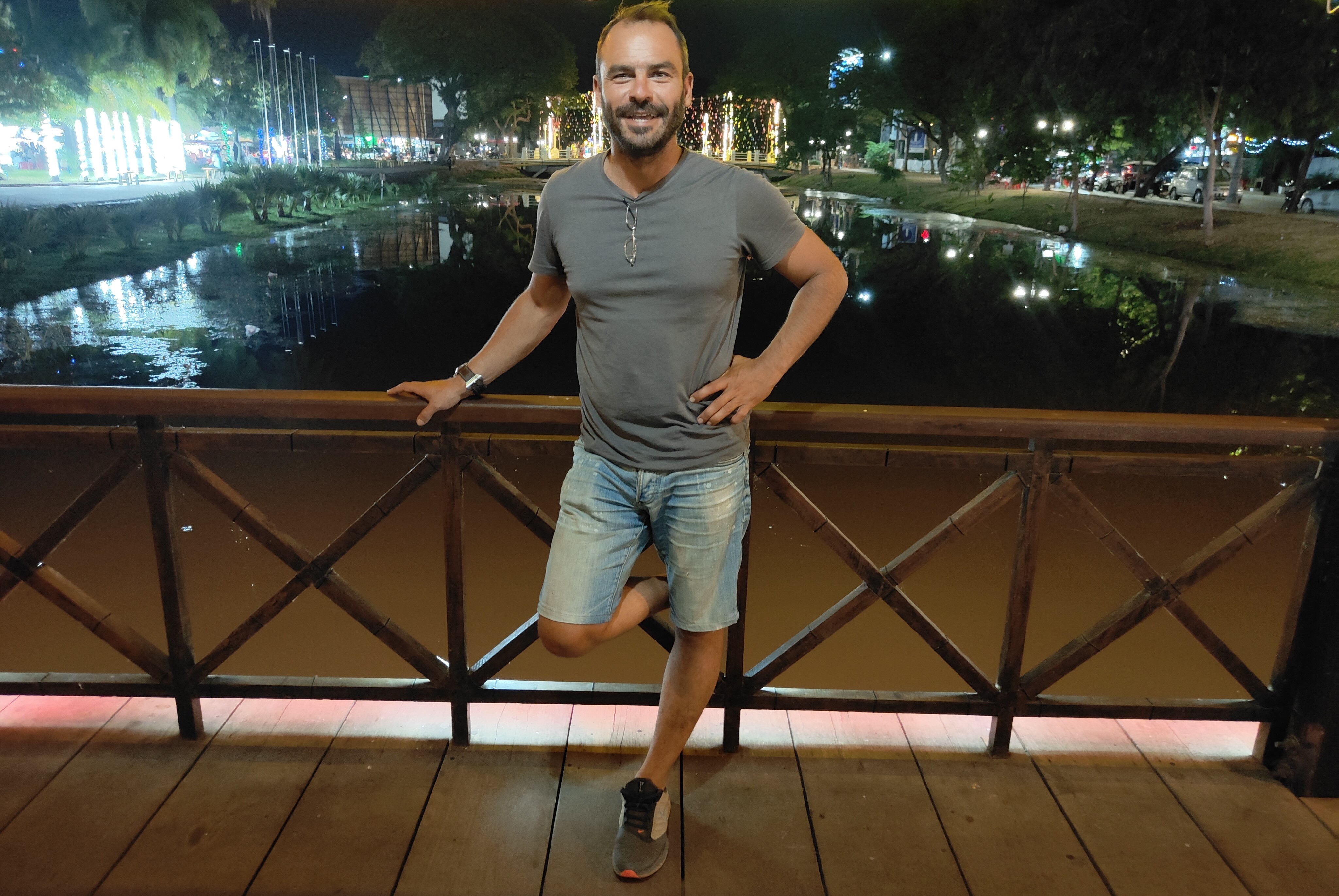
Angor
Wat contains several ancient temples. The main one (first picture) is
the most impressive and featured in the flag of Cambodia. It is also
worth visiting other temples (second picture), some of which are almost
taken over by the jungle. The bikes were
useful as the temples are a few kilometers apart. Unfortunately,
they do not allow drones, so we could not take aerial photos
and video.
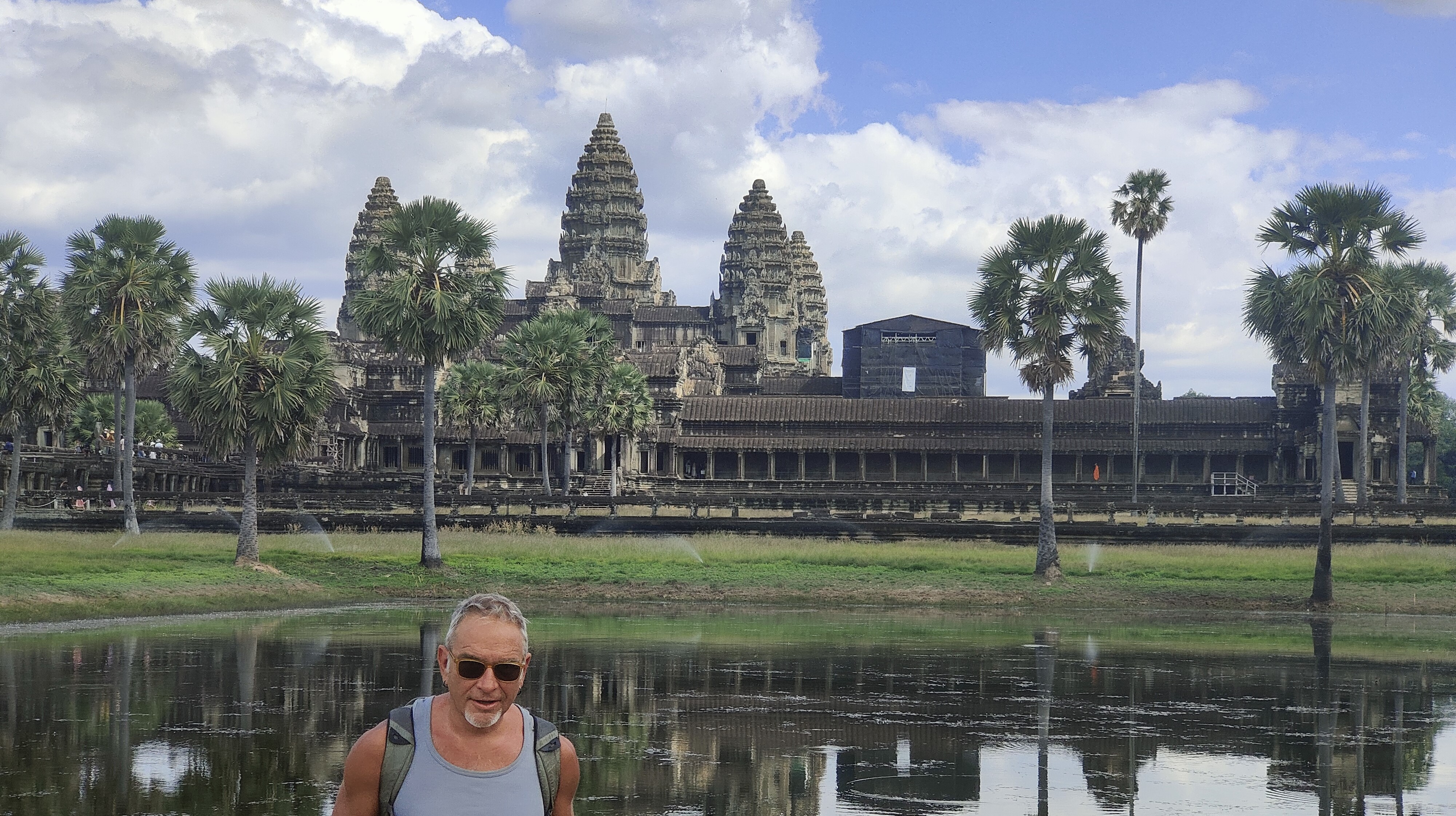
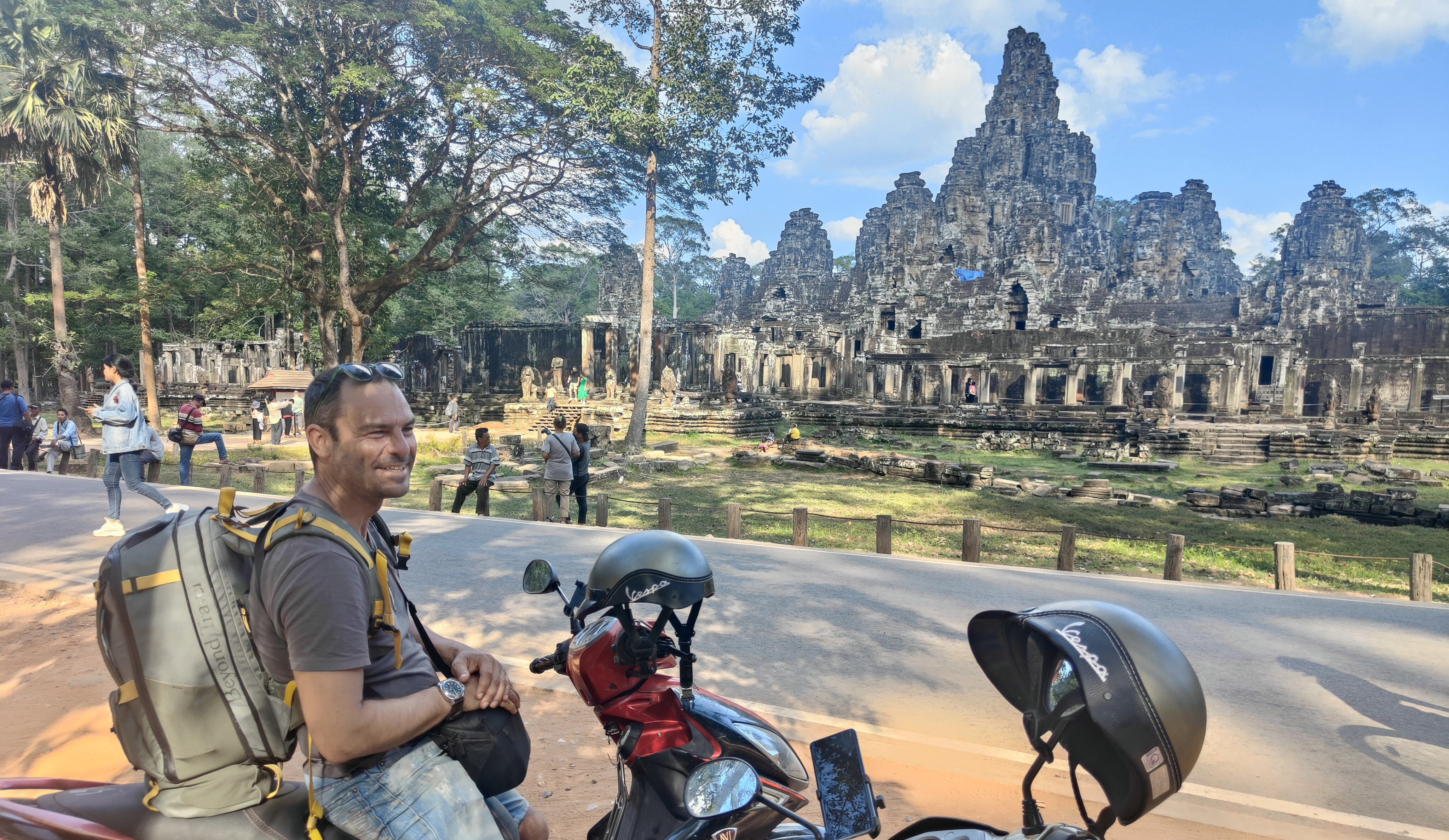
The next destination was Battabang, west of Siem Reap. It is the provincial capital of the main rice-producing province of Cambodia, with an old town center,
and not much more. After one night there we continued towards Phnom
Penh, where we welcomed 2023. Below are some pictures of the trip: the
first one outside Battabang, and the second at a random stop somewhere in the middle of Cambodia.
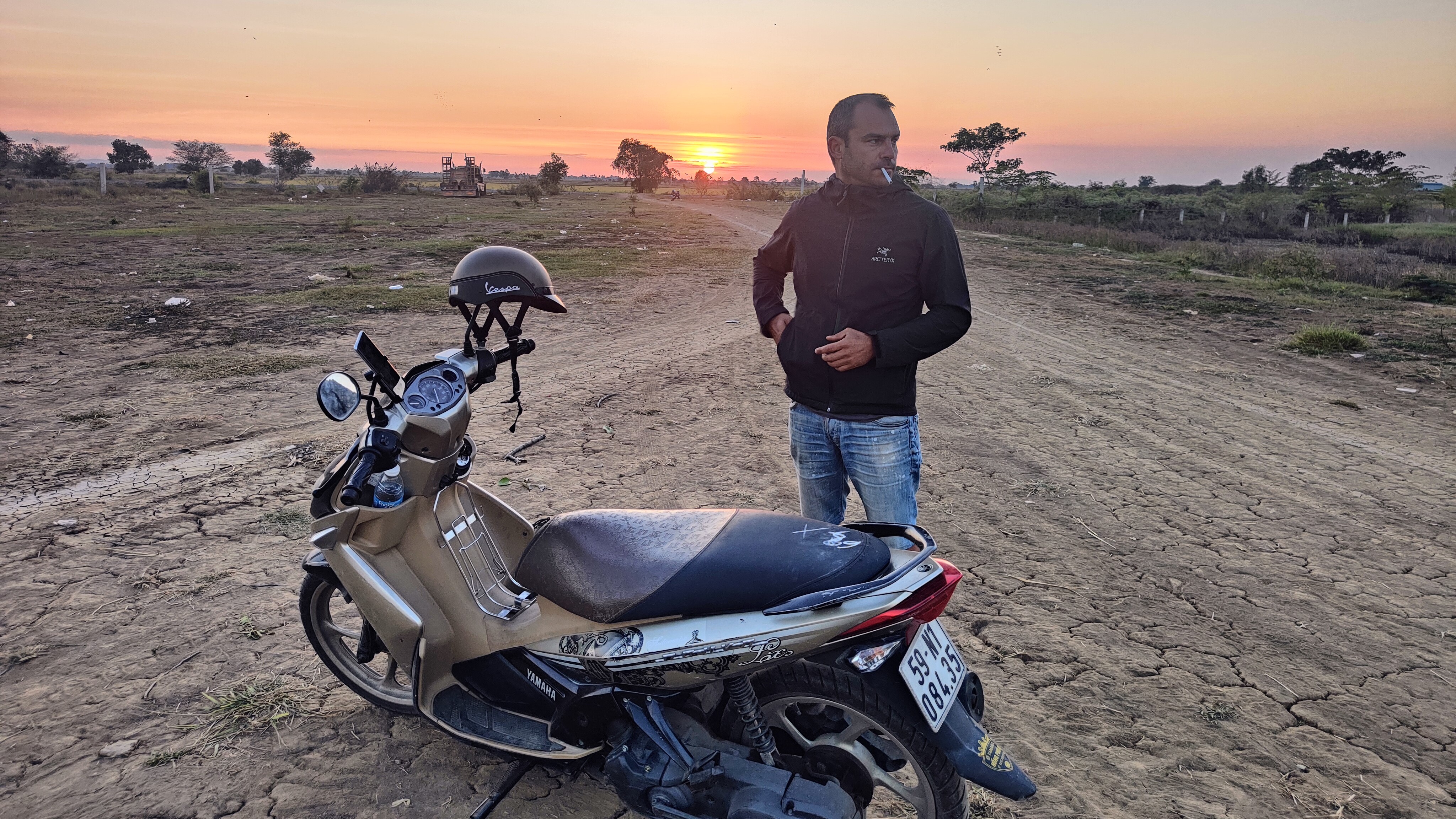
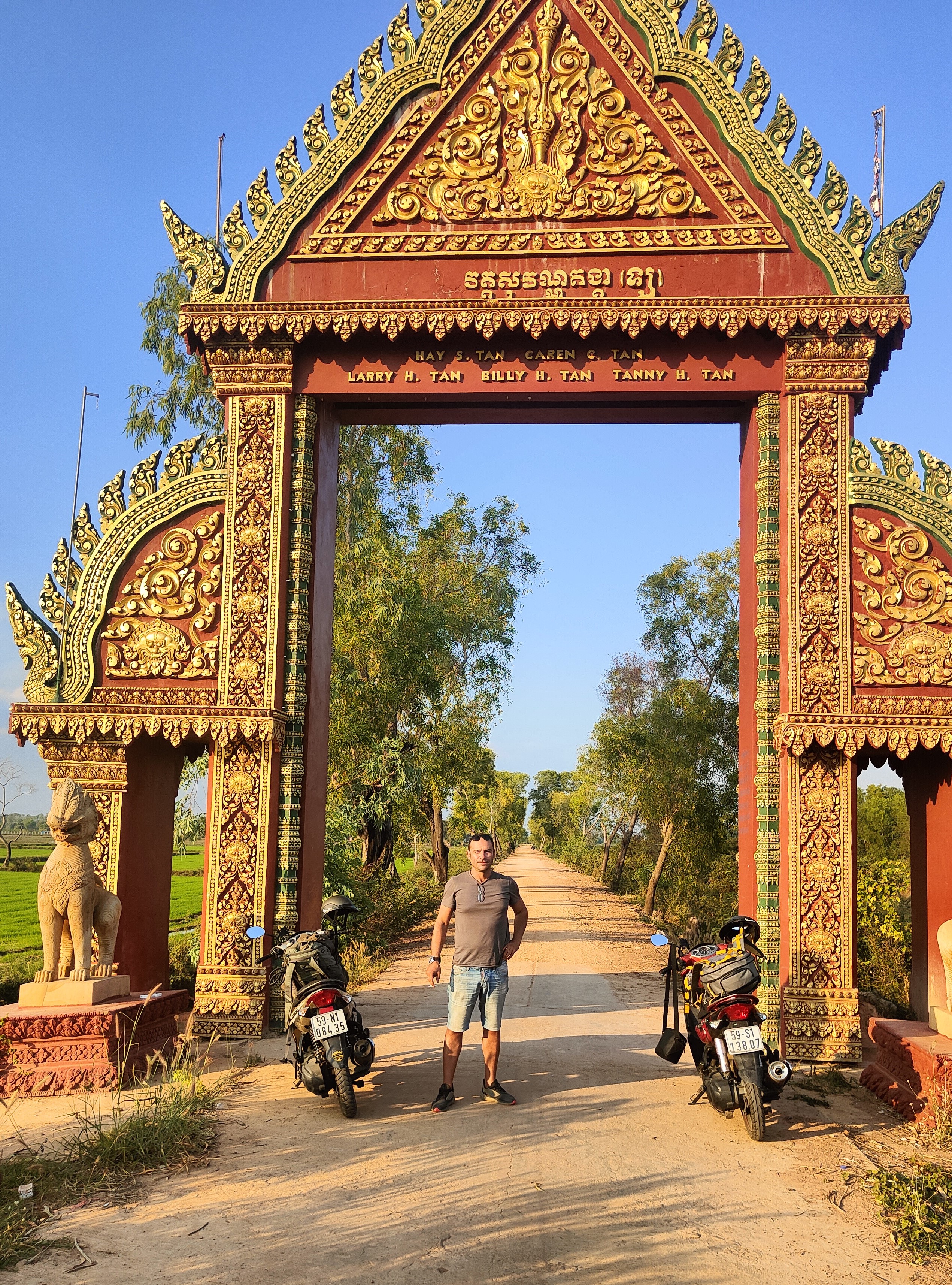
After Phnom Penh, we headed south towards Kep. Kep beach
(first picture, in the background) is supposedly the only beach in
mainland Cambodia, but we were not impressed, and we did not even swim.
In general, with the exception of the islands (to be discussed later)
both Vietnam and Cambodia lack in terms of beaches. Near Kep is Kambot (see
second picture), a nice town by a river, with a visible expatriate
(e.g., Western) community. I am not sure, but several of the
expatriates seemed either retirees that enjoy the low cost or life, or
"hippies" that enjoy the "relaxed" lifestyle of the area.
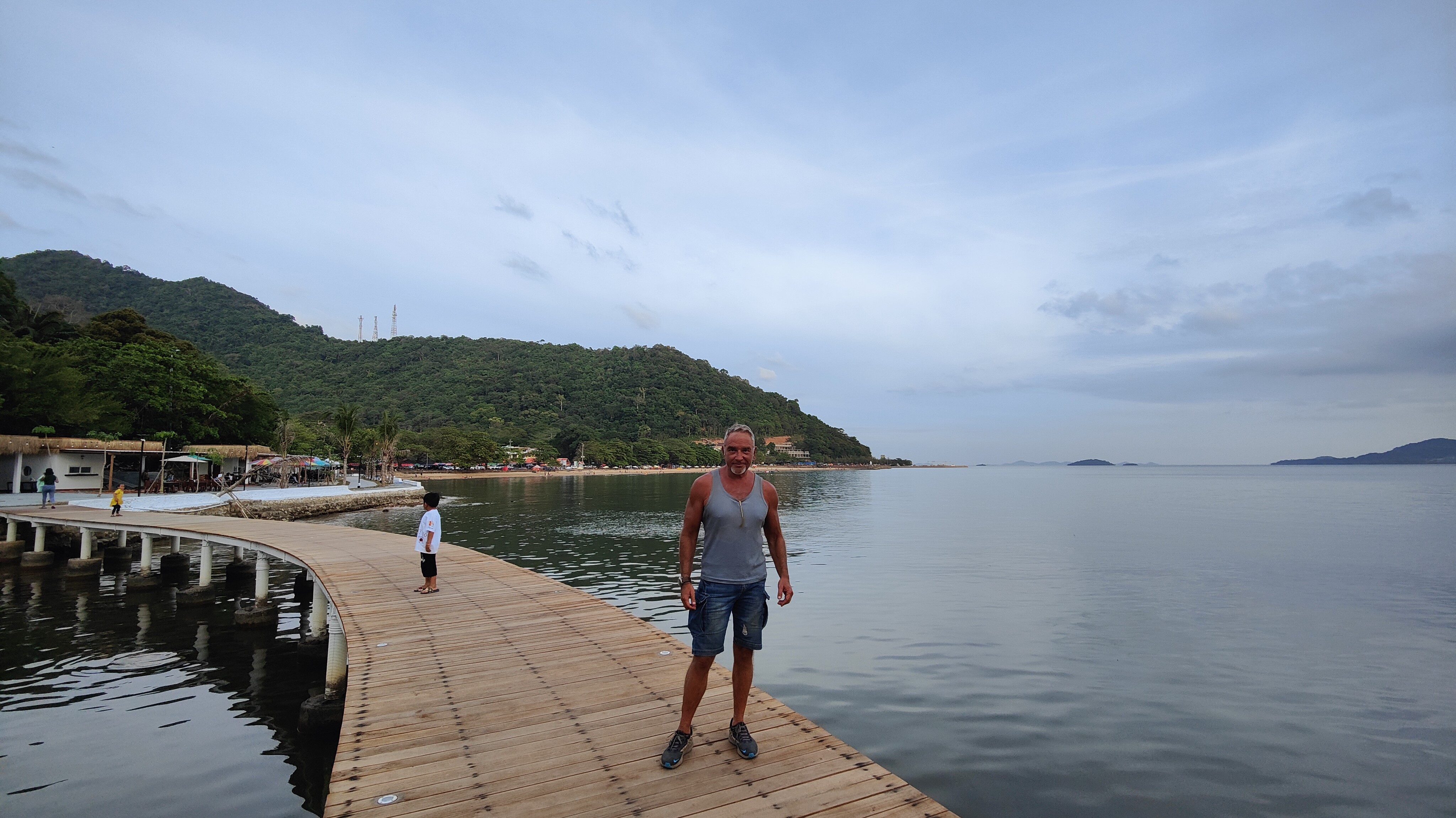
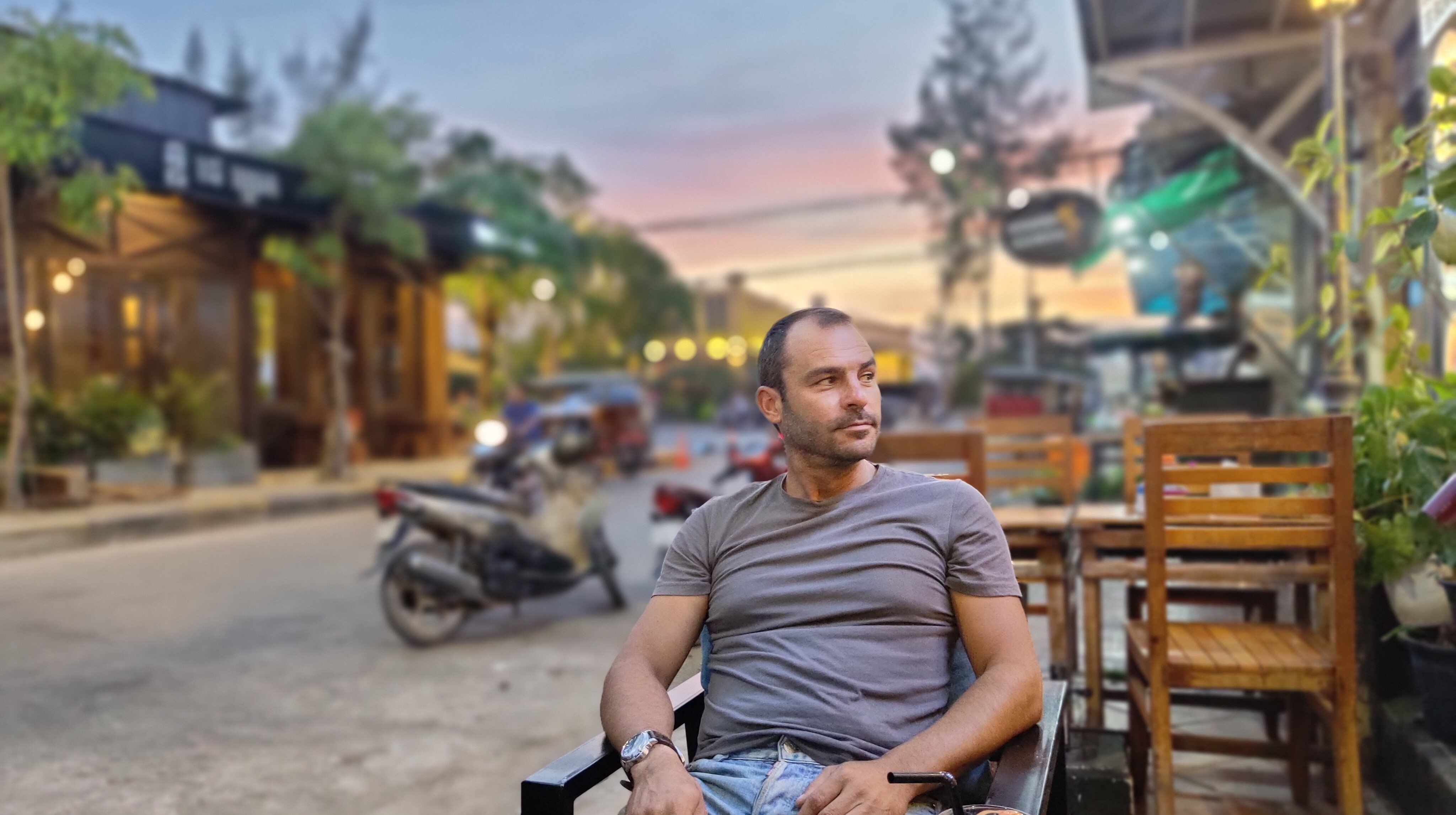
Then
we took the road to Sihanouk. Sihanouk is the main port of Cambodia,
and the target of major Chinese investments. There are huge resorts and
casinos, several of which seem under development, or abandoned due to
COVID disruptions. We left our bikes at the port, and took the speed boat to Koh Rong Sanloem, and Koh Rong, the main touristic islands of Cambodia. Koh Rong Sanloem (first
picture) is the smallest of the two, and has no roads, or vehicles. The
larger Koh Rong, has scooters, but not really a road network. Instead,
if you stay at the main village (Kao Touch Beach), like we did, rent a
scooter and visit the rest of the island, through a combination of
paths and narrow streets. The most interesting part is the long beach on the
west side, where you can enjoy the beautiful sea (Sok San beach, second picture) and a romantic sunset (third picture), if you are in the mood.
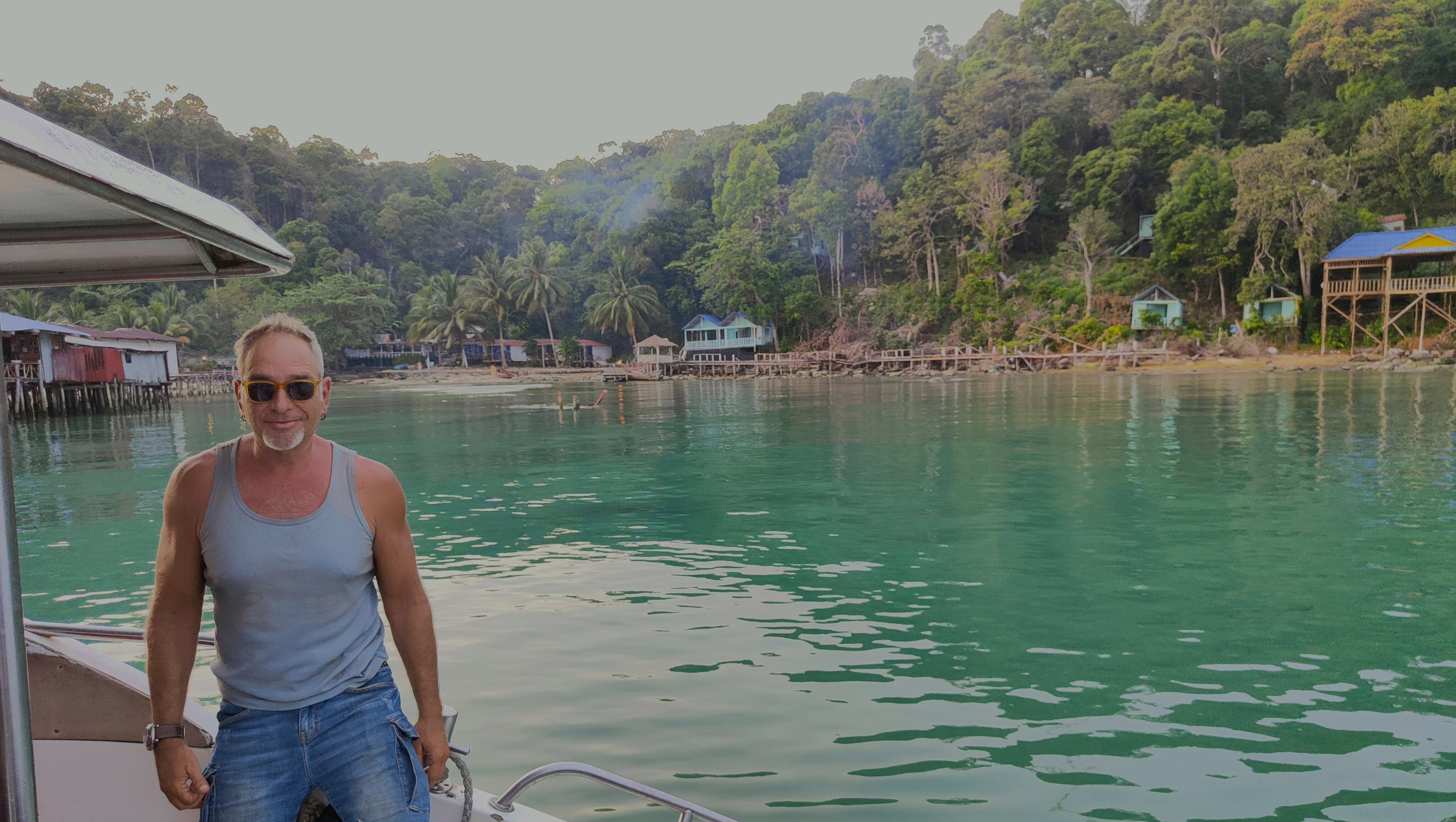
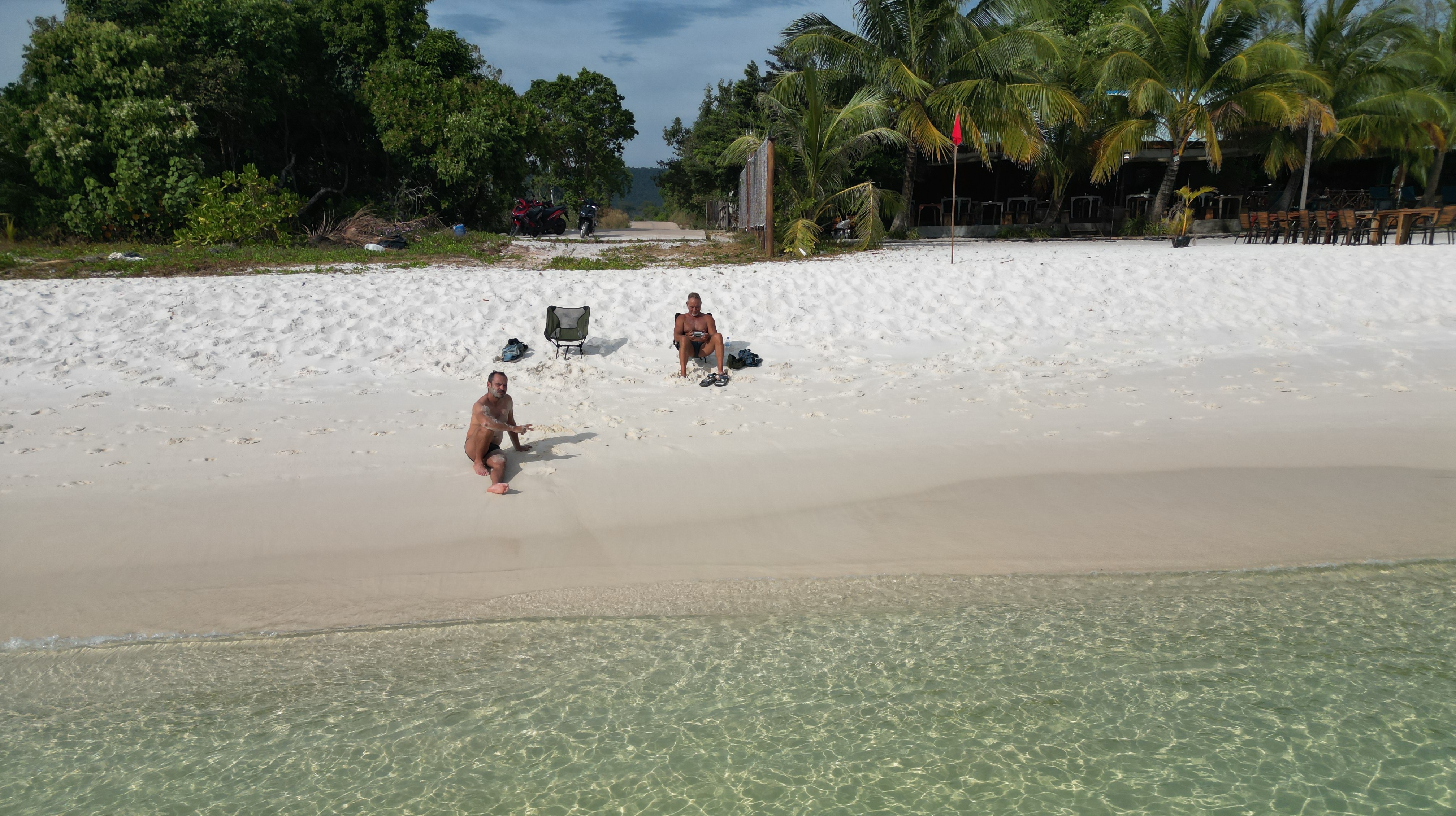
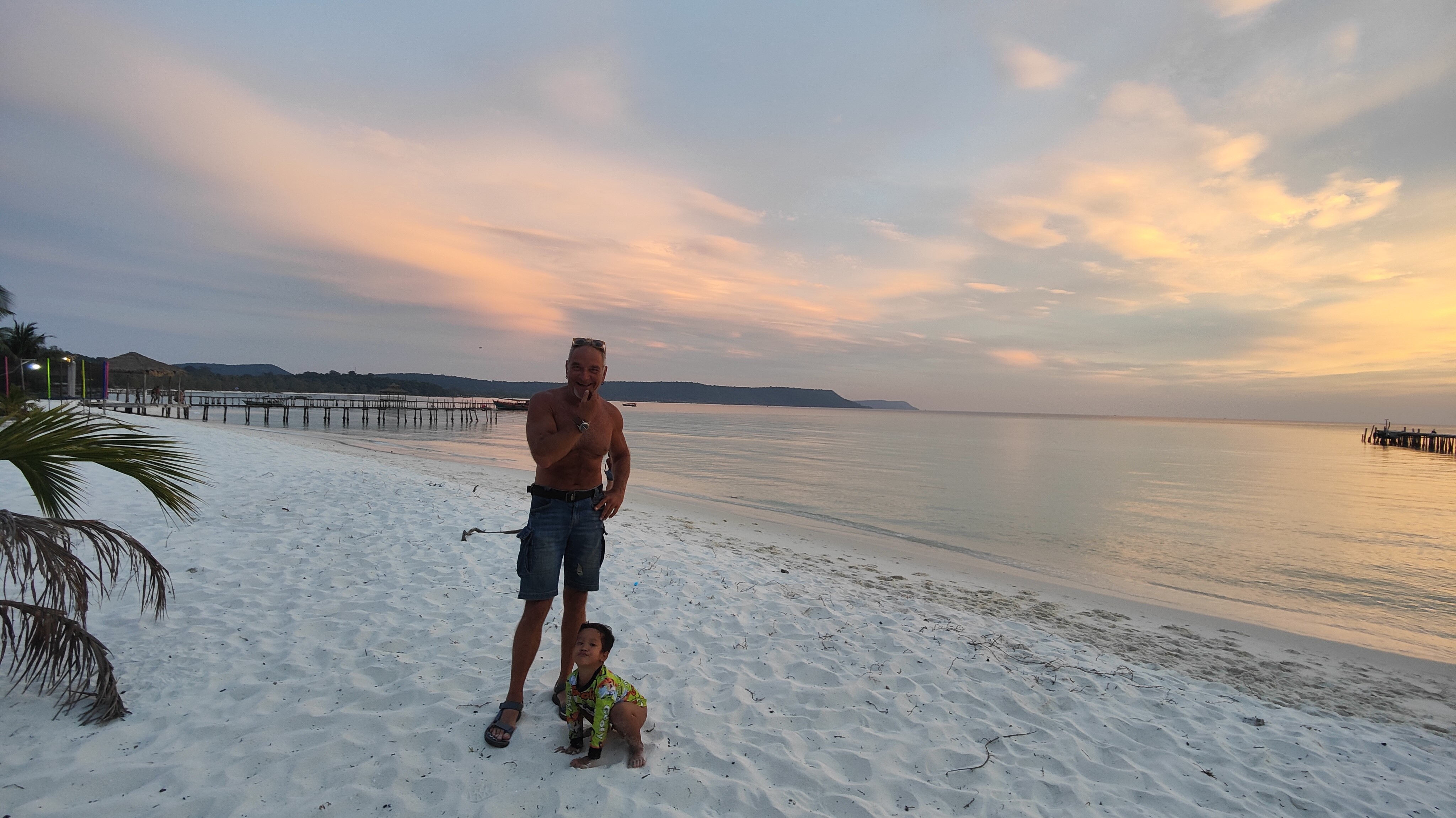
During
the whole trip, we tried to avoid taking the same road twice. The only
part that we could not avoid was the last 50-70km from Sihanouk to Kambot,
where we had to go through again, in order to reach the southernmost
border crossing to Vietnam. About 25km of that road was gravel, and it
was the most difficult part of the trip, with the exception of driving
in Saigon. Outside Kambot there is Bokor National
Park, a mountainous area with French colonial buildings, temples and
waterfalls. In addition, it is worth visiting for the twisty road that
includes monkeys (first picture), statues (second picture), and views of Phu Quoc island. Interestingly, Phu Quoc is opposite of Kambot, although it belongs to Vietnam.
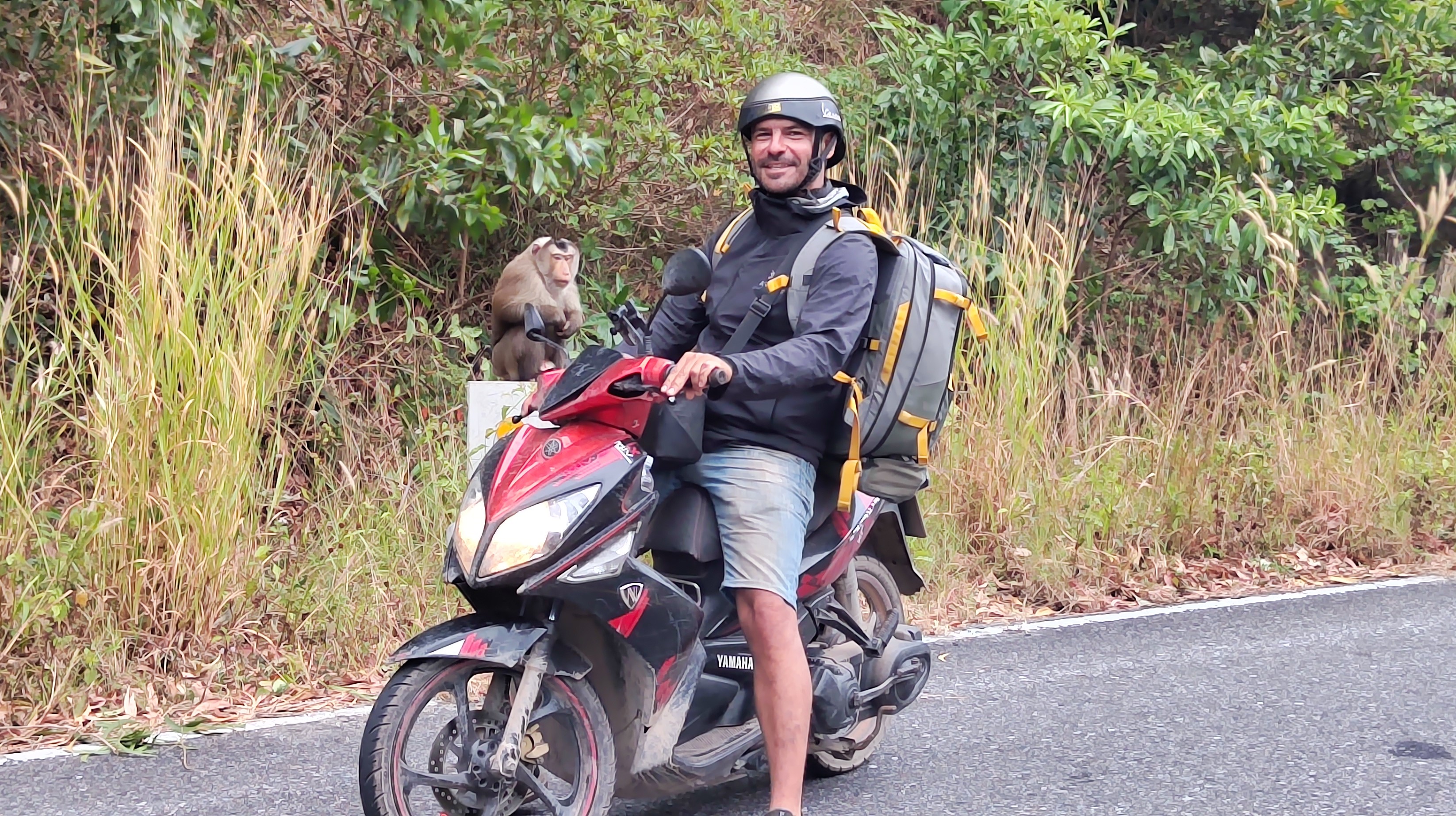
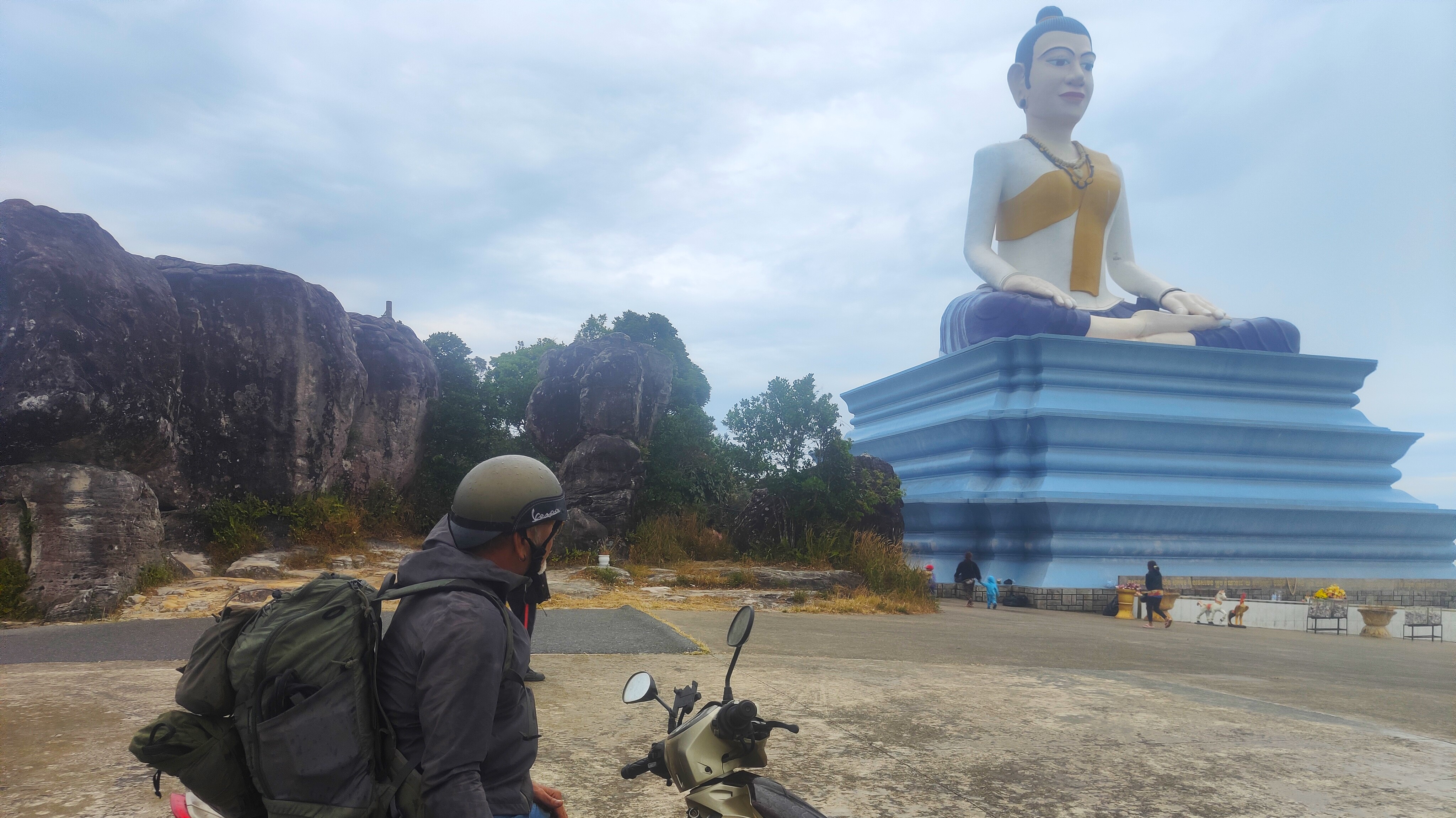
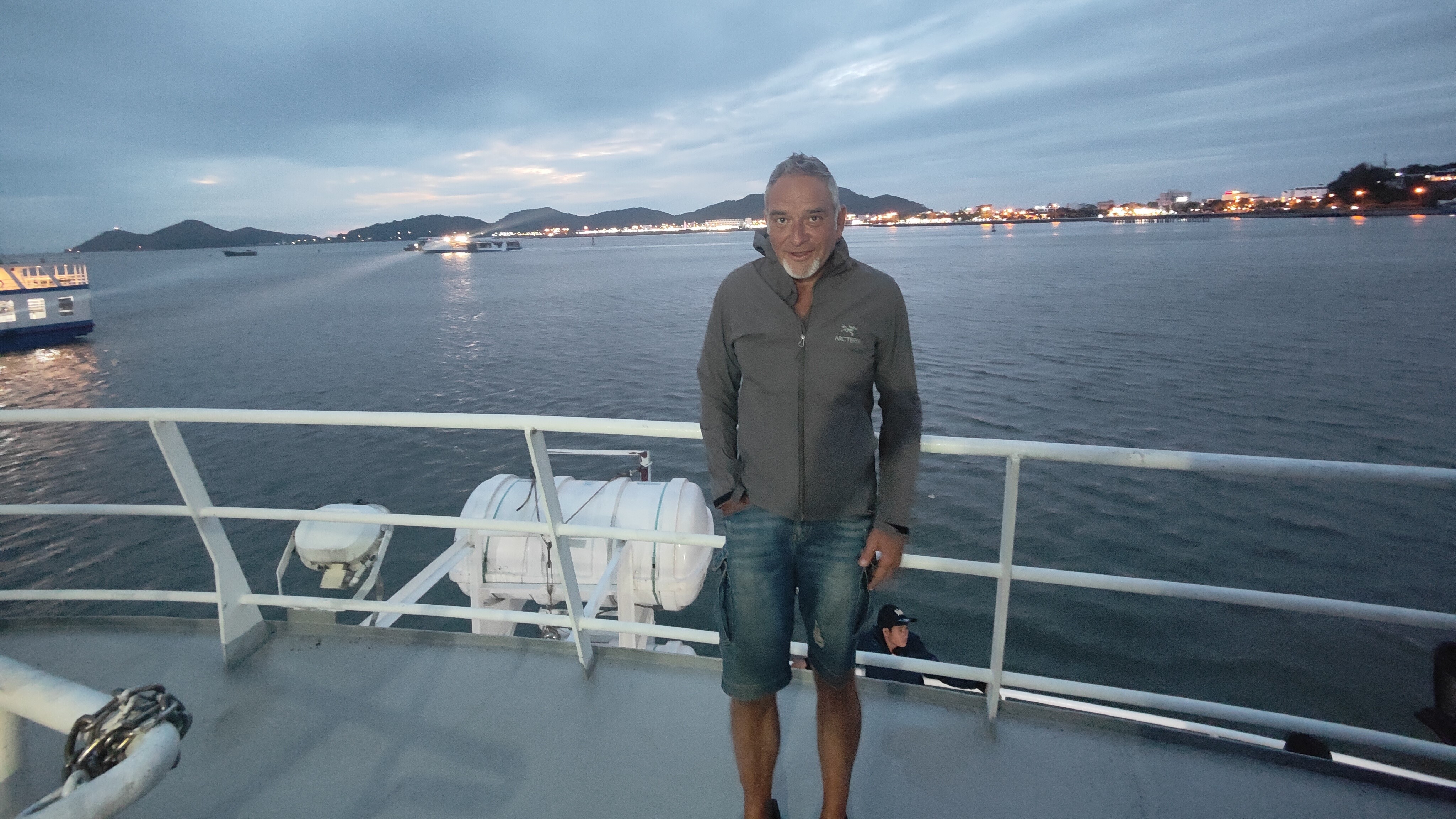
Phu Quoc
is very developed, with an international airport, good roads and many
hotels/resorts. Although much bigger than Koh Rong, it is rather small
at 574 square km, and we explored most of it.
Below some pictures from the beaches.
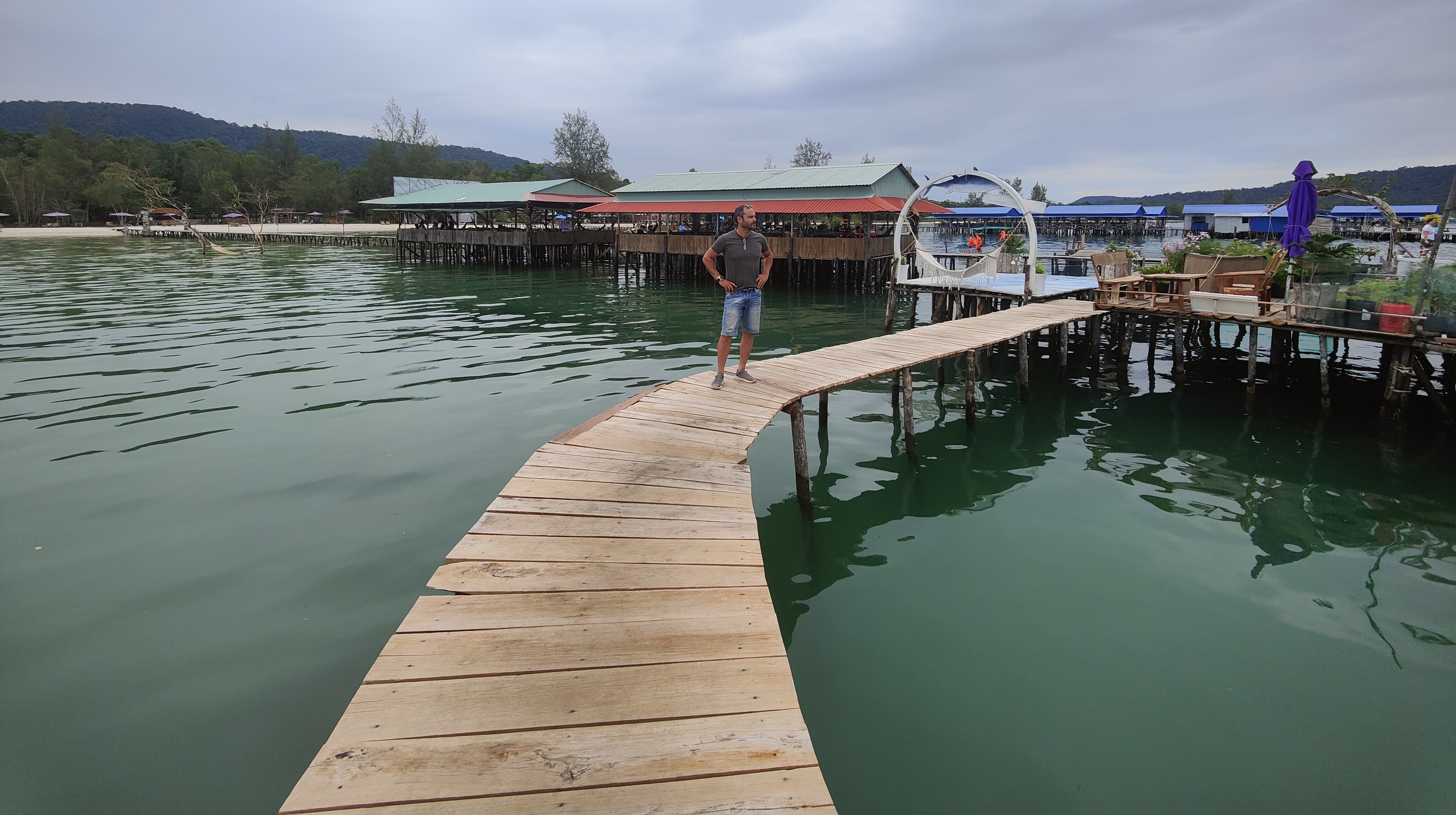
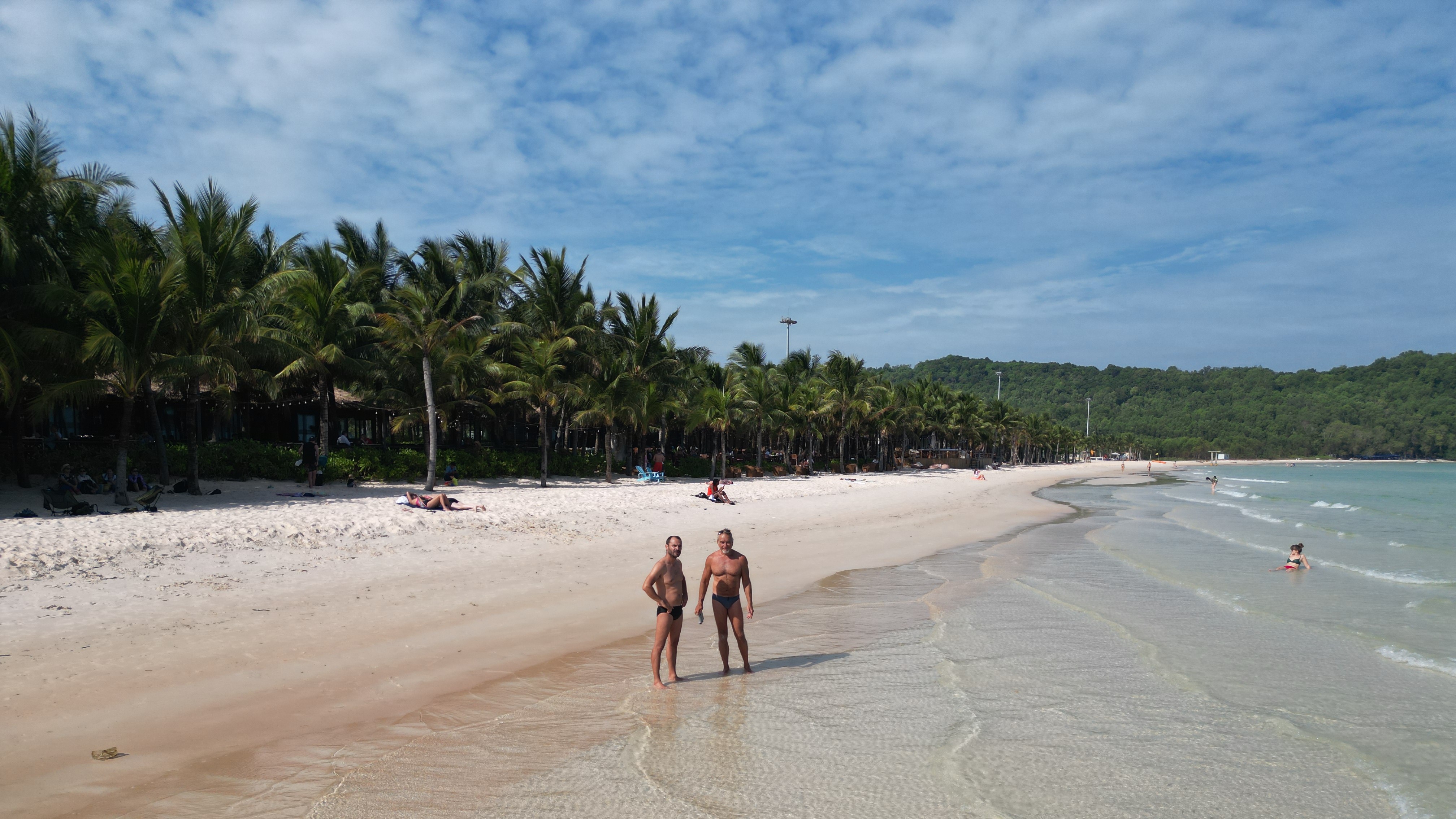
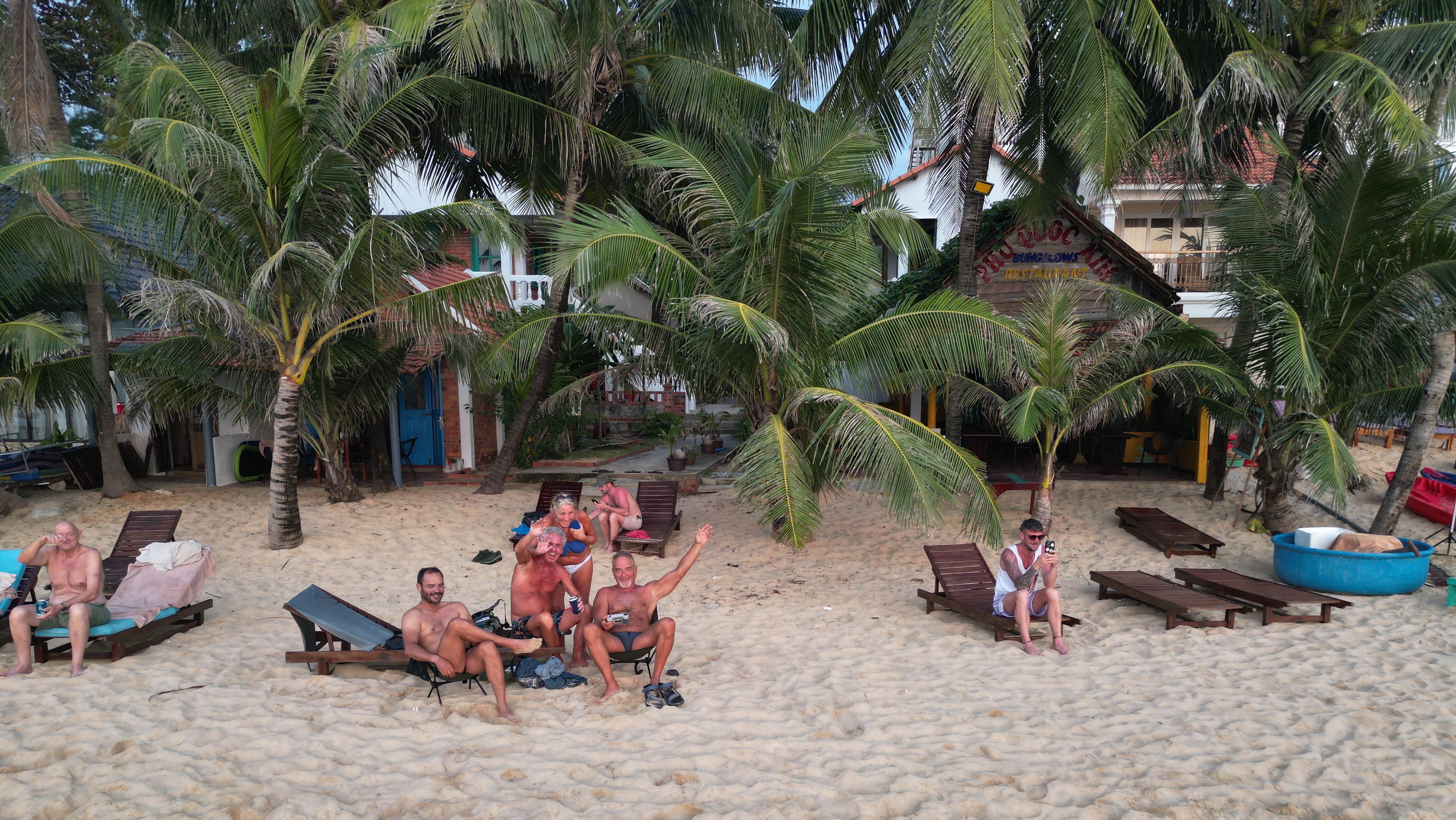
After a few days in Phu Quoc, we took the ferry to Phu Gia,
and drove around 200 km to Saigon, concluding the trip. It was a solid
"experience" tour, with few "feel good" moments. First, none of the
beaches that we visited in mainland Vietnam and Cambodia was welcoming
enough for swimming, or even spending some time there. Moreover, with
the exception of weekends in Phnom Penh, we did not find any type of
nightlife to our liking. Instead of "Back to the Basics", the trip
could
well be called the "Balconies" tour, since we did most of our drinking
at the
balconies of the hotels/bungalows that we were staying, or at the beach
(picture below). Would I do the tour if I knew the outcome in advance?
Of course. Will I do the same tour in the future? Probably not.
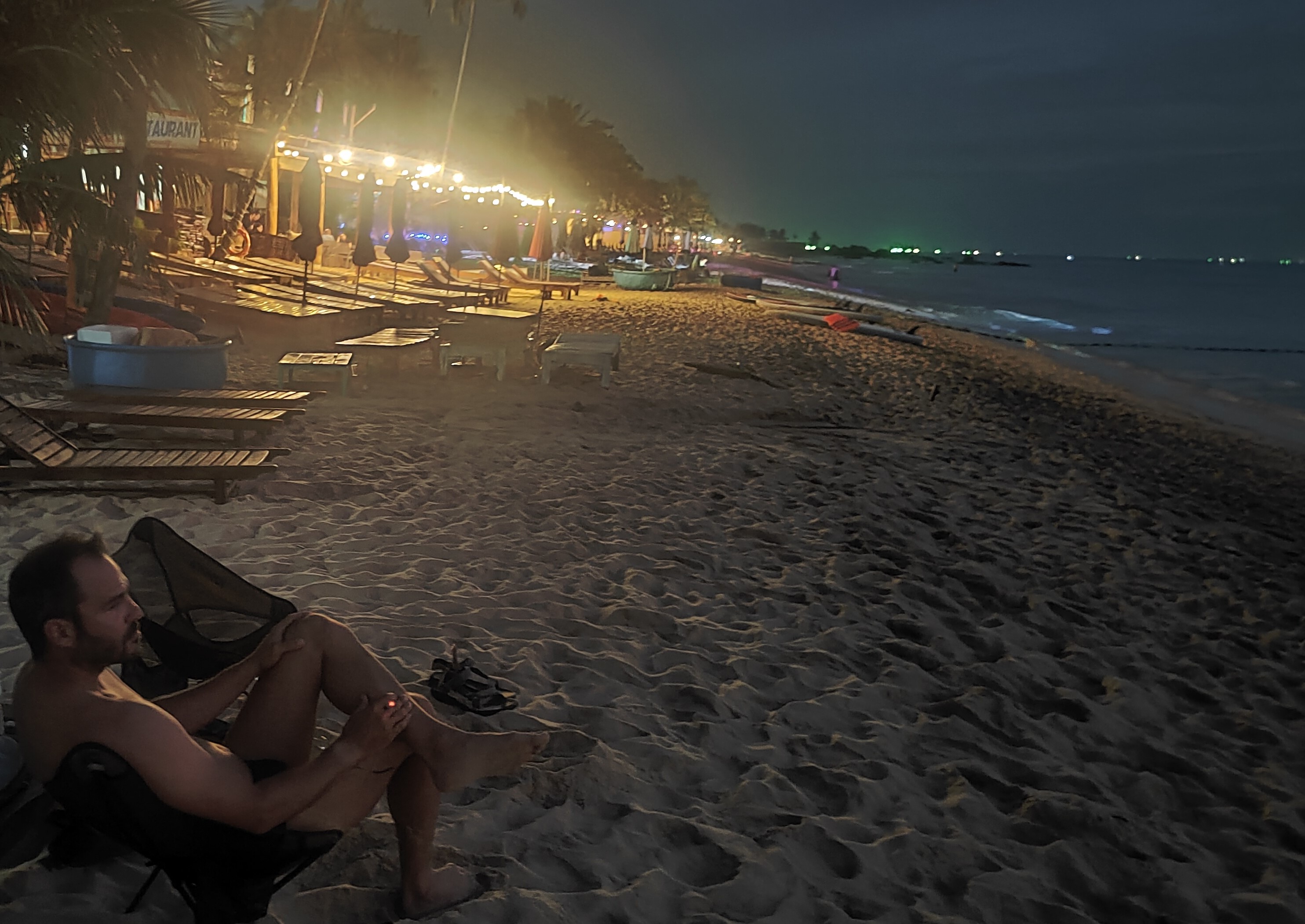
Below some drone videos:
Camping "Forest and Sea" in South Vietnam
Red sand dunes in Mui Ne
Elephant falls near Dalat
River cruise at Mekong in Phnom Penh
Long beach in Koh Rong
Main beach in Phu Quoc
"Venice" resort in Phu Quoc
2017 July
We were short of destinations because we have visited most places around Greece. So we intentionally started a trip without a particular target. Our first stop was Ikaria (first picture below), an island famous for its fiestas/festivals that last several days, and the longevity of its residents. Maybe the two are correlated. After that we went to Samos, an island next to Turkey (second picture). The plan was to cross to Kusadasi with a ferry boat. However, none of the ferries to Turkey carried motorbikes. Instead, we took the ship back to Athens (around 10 hours). We arrived after midnight, and we decided to start our trip to Sofia, Bulgaria, 800km north of Athens. The sunrise found us somewhere in Northern Greece (third picture).
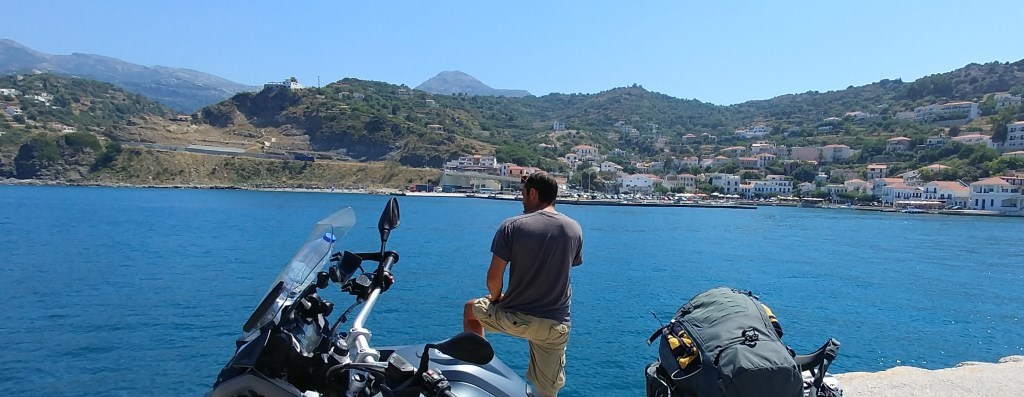
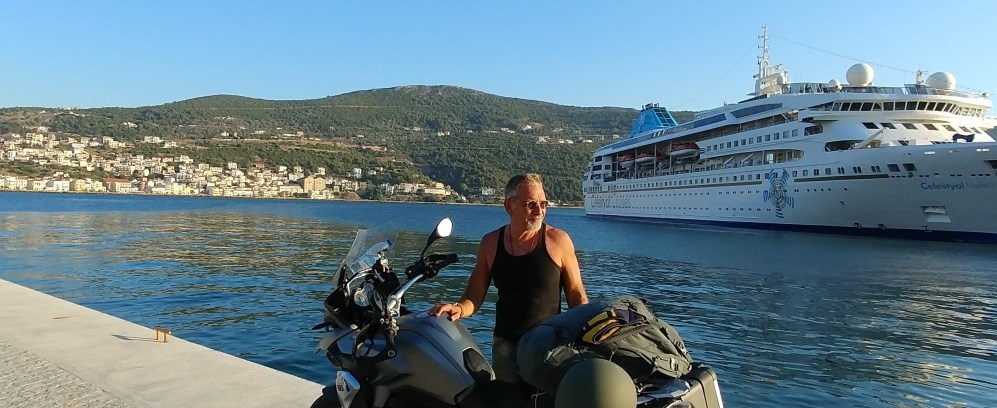
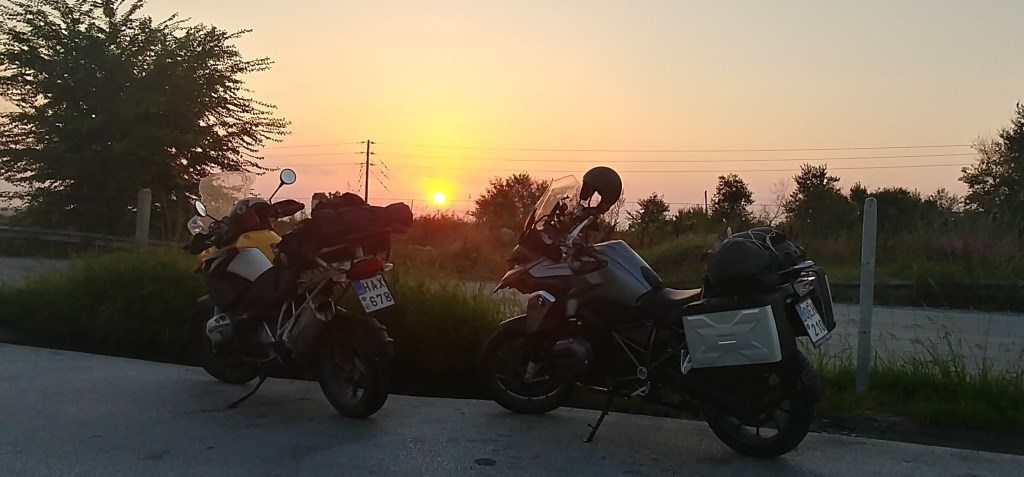
After an uneventful Monday night in Sofia, we went to Veliko Tarnovo, a picturesque town in the mountains of North Bulgaria (first picture below). From there, we crossed the border to Romania. As shown in the second picture, the area around looks more like a wasteland than the border between two European countries. We spent the next night in the old town of Bucharest, which is much livelier than Sofia, even during the week nights. The selfie below is from the Parliament building of Bucharest.
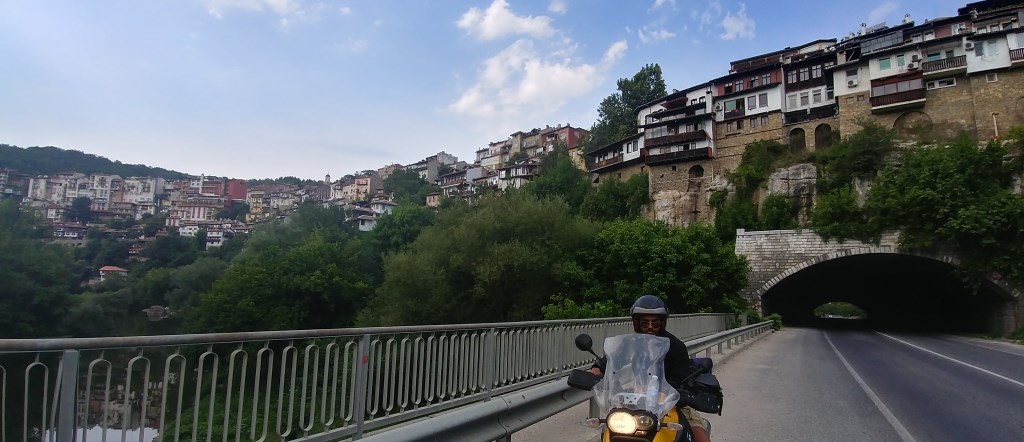
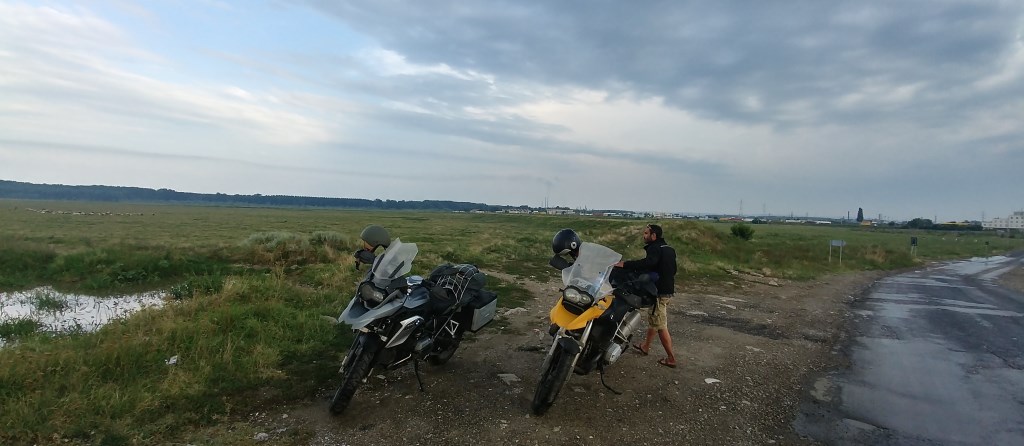
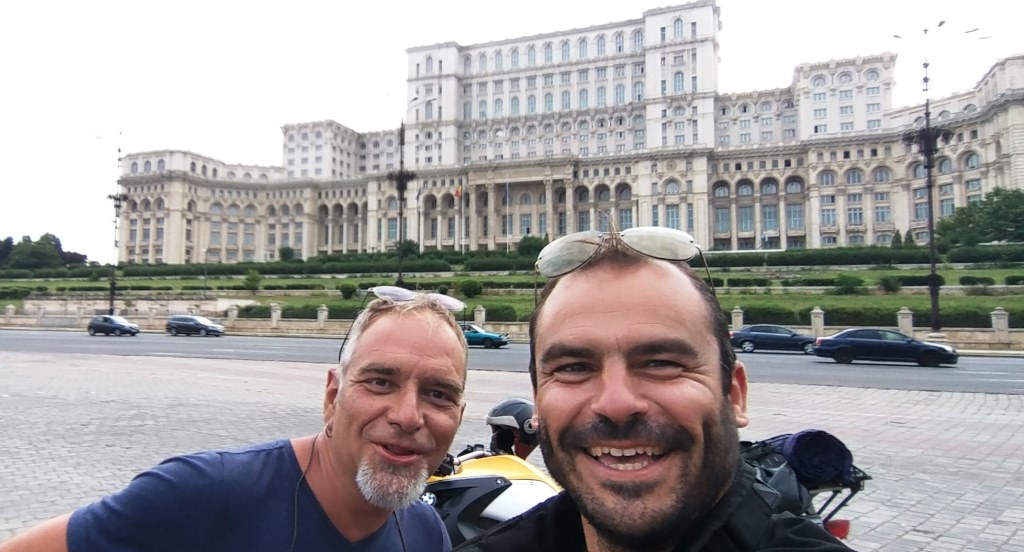
Then, we continued north, towards Brasov, the largest city in the Carpathian Mountains. The main road connecting Bucharest and Brasov is rather small and has heavy traffic, including many trucks. The first picture below is where the road starts climbing the mountains. Brasov is very beautiful (second picture), but boring compared to Bucharest.
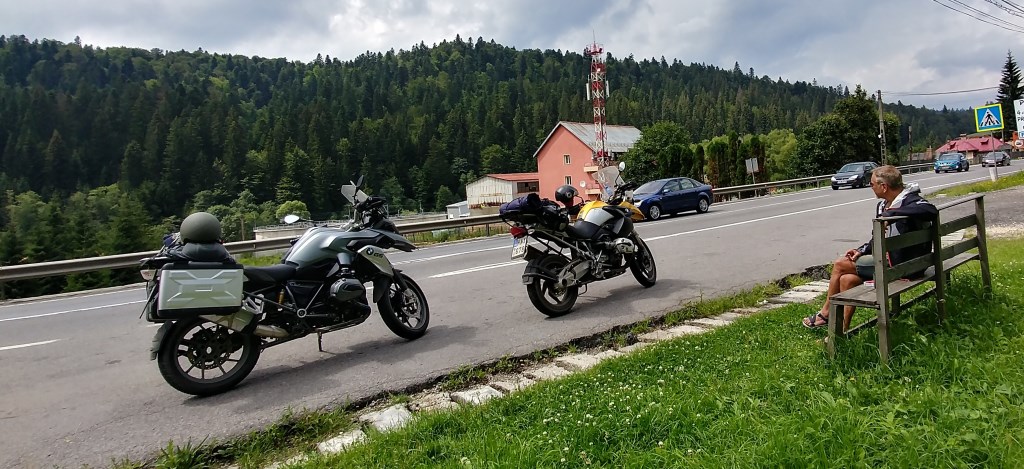
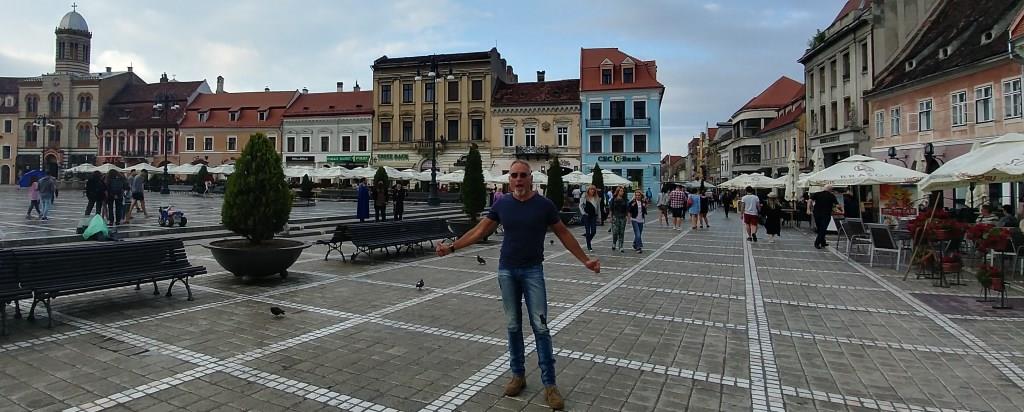
The
next day, we visited Bran, a village near Brasov. The Bran Castle, in
the picture below, is a popular tourist destination because according
to urban legend it was home to Count Dracula. From there we did some
routes on the mountains, which are well-known among bike riders.
Although the landscape was at times impressive (second picture), we did
not really enjoy driving because of the rainy weather, the traffic and
the very bad road conditions: there were potholes full of water, from
which you could not be sure that you would re-emerge.
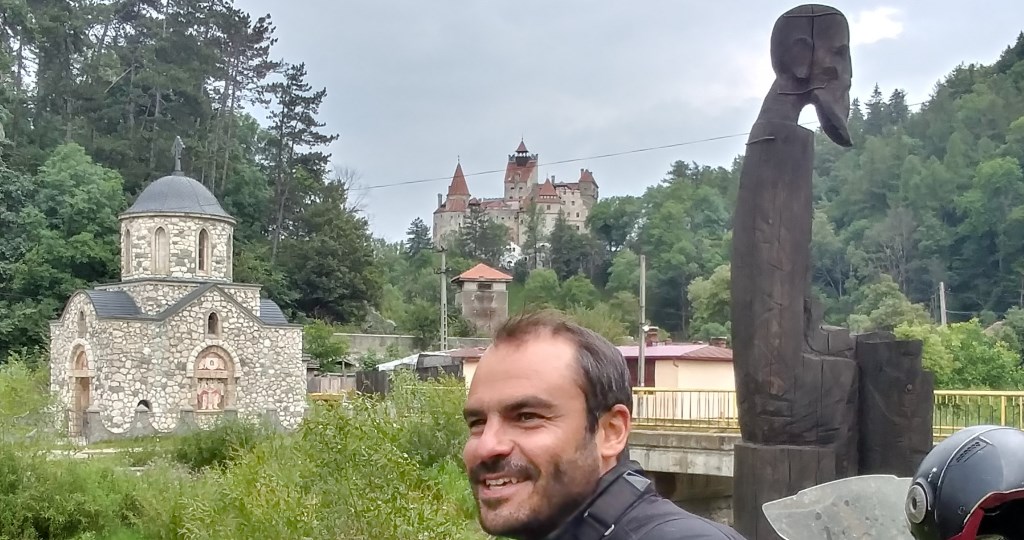
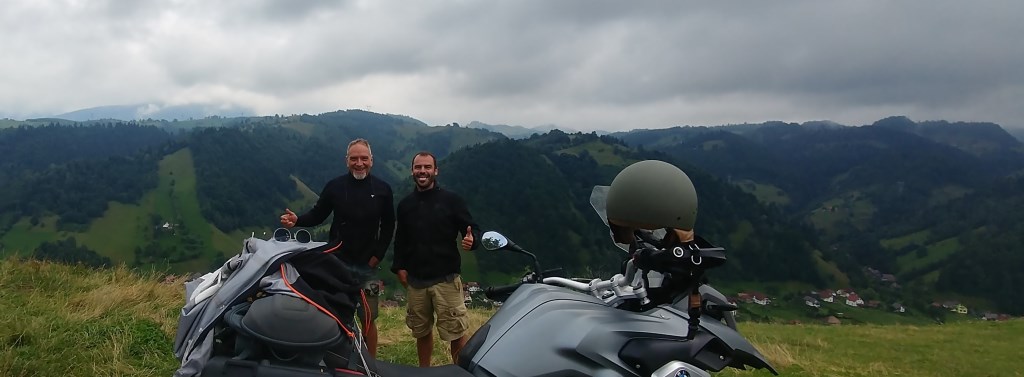
Our
final destination in Romania was Vama Veche, a beach town on the Black
sea, next to the border with Bulgaria. Compared to other popular beach
destinations in Romania, Vama has an alternative life style (it started
as a nudist beach) that attracts musicians, backpackers and similar
types. We liked our first night there. However, the next day it started
raining and we decided to head south. The first couple of hundred
kilometers were among the worst in my life. In addition to the heavy
rain, there were strong winds. Thus, we were riding sideways, on a road
that was slippery like a mirror. On top of that, extremely aggressive
Romanian and Bulgarian drivers were getting stuck behind us trying to
overtake in very dangerous situations. We managed to avoid problems,
and eventually we made it back to the border with Greece at sun down
(picture below).
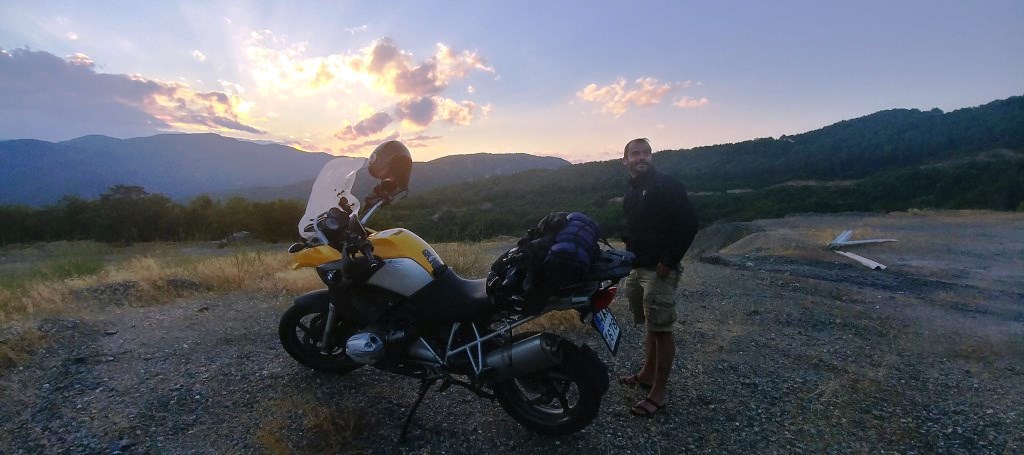
After
a few days with friends in Xanthi and Thasos island, and a night with
family in Ioannina, we arrived safe to our basis in Pyrgos,
Peloponnese. The whole trip was worth it as an experience, but you must
be lucky in terms of weather and traffic to enjoy riding in the
Carpathian mountains. You should also be very careful of the drivers
both inside and outside the cities.
2017 May
Central Thailand: With a Honda CB 500X.
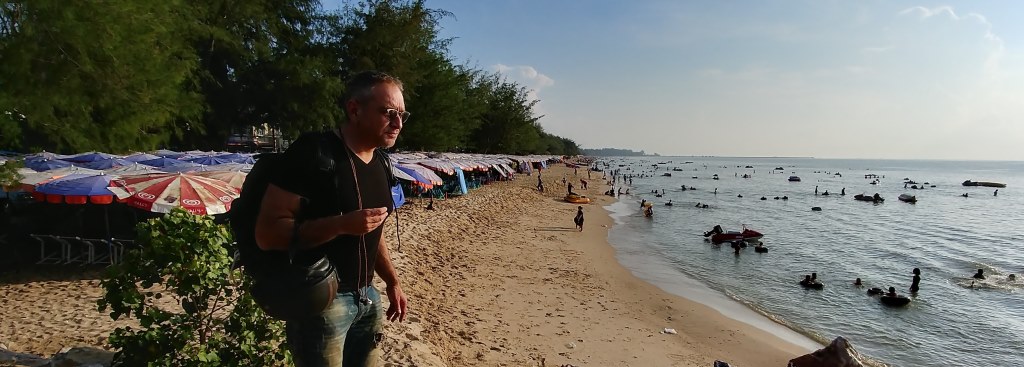
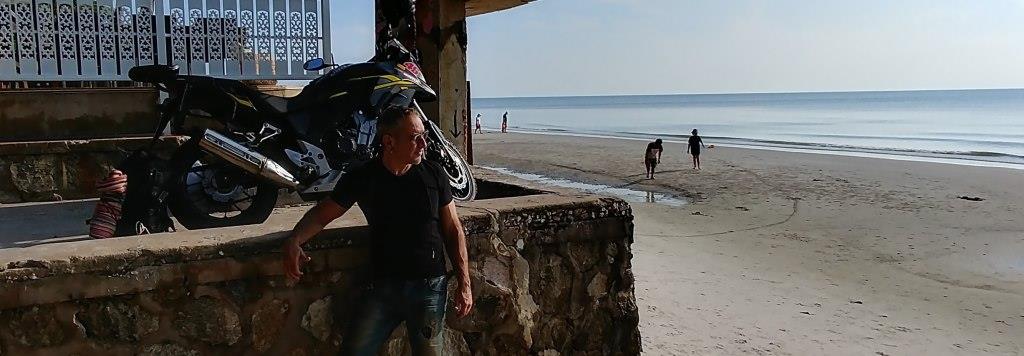

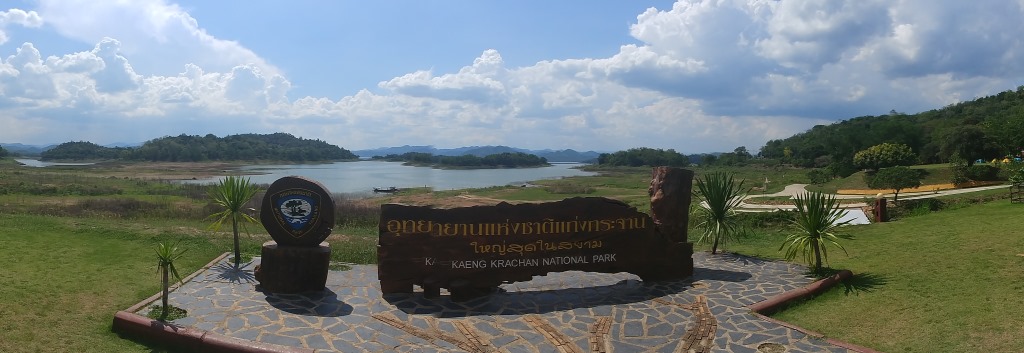

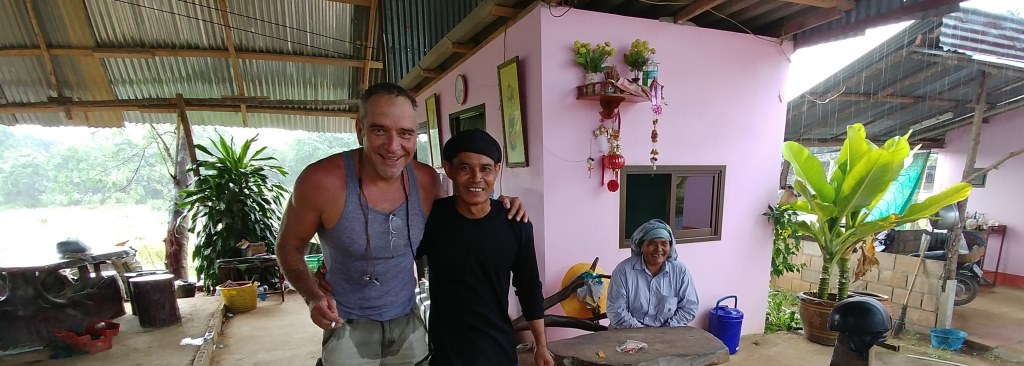


2016 June
North Luzon: Philippines with a Kawasaki KLR 650.
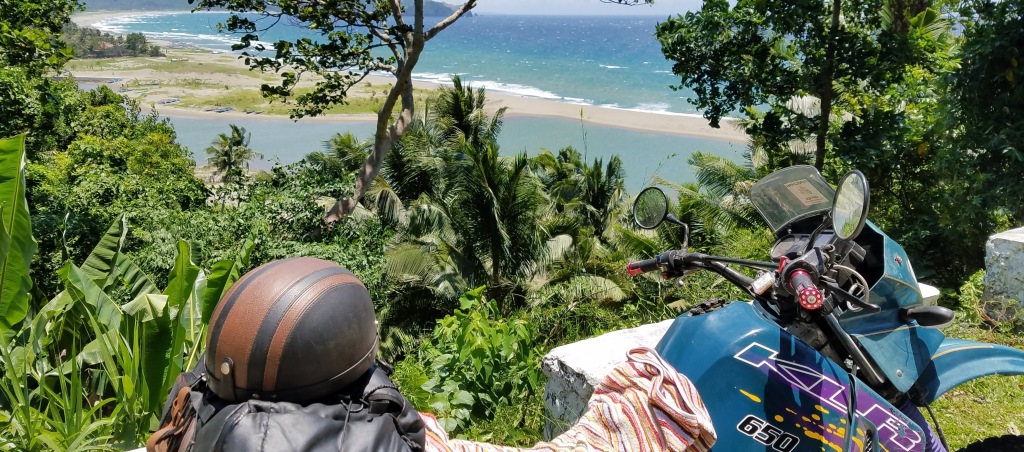
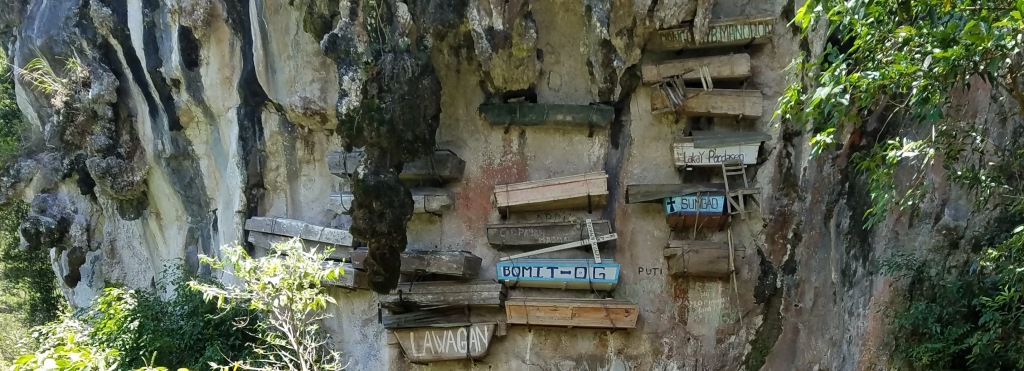
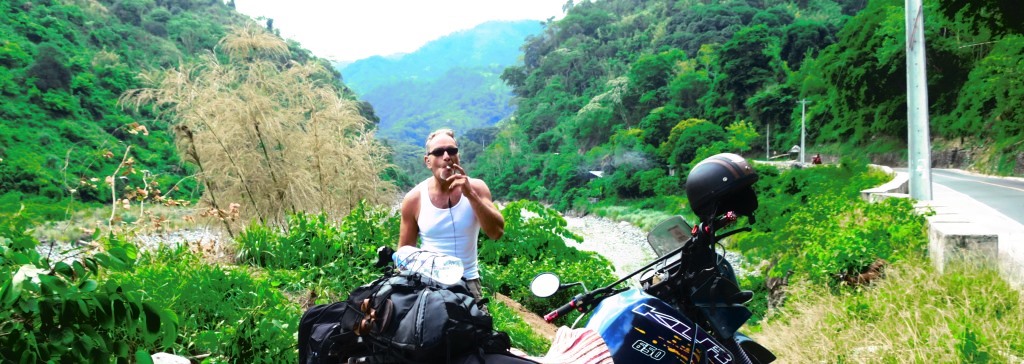
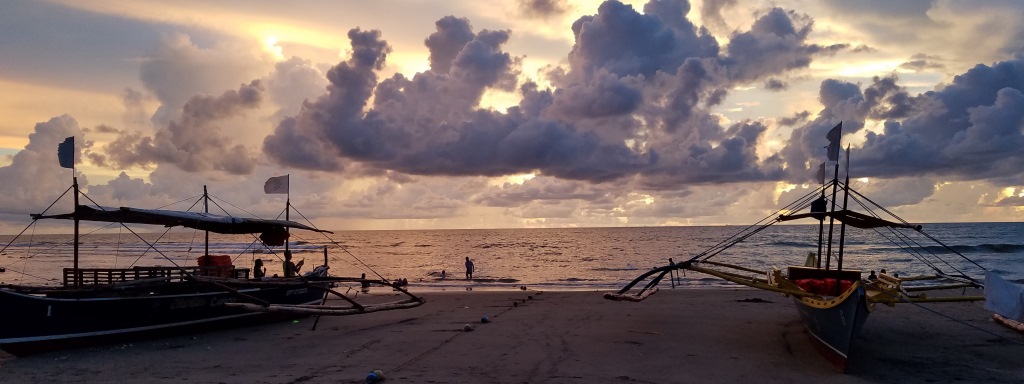
2015 June
Southeast Australia: Victoria, New South Wales with Andreas, Nikos, a BMW 1200 GS and a Ducati Multistrada 1200.

We took a flight to Melbourne, where we had arranged to rent the bikes from Garner Motorcycles. Their service was excellent, and we were ready to ride a couple of hours after landing to Australia. The first picture is before the beginning of the trip outside Garner Moto. Note that since it was June (start of winter in Australia), we brought heavy bike gear. We started with direction east towards the coast. Our first stop for the night was at Lakes Entrance (see second picture below), a picturesque town, which I assume is rather busy in the summer (but not when we visited).
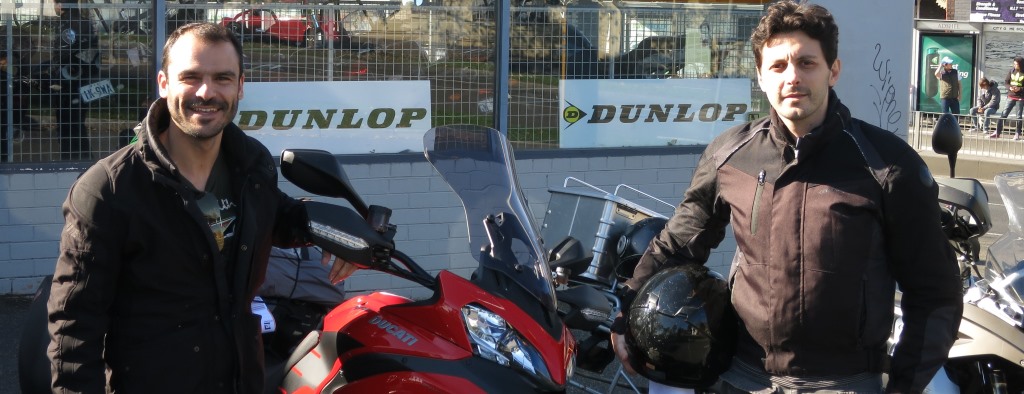




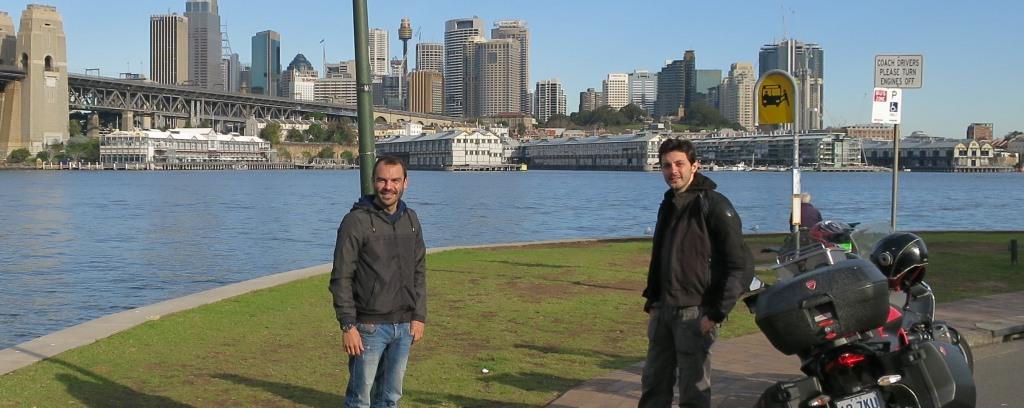
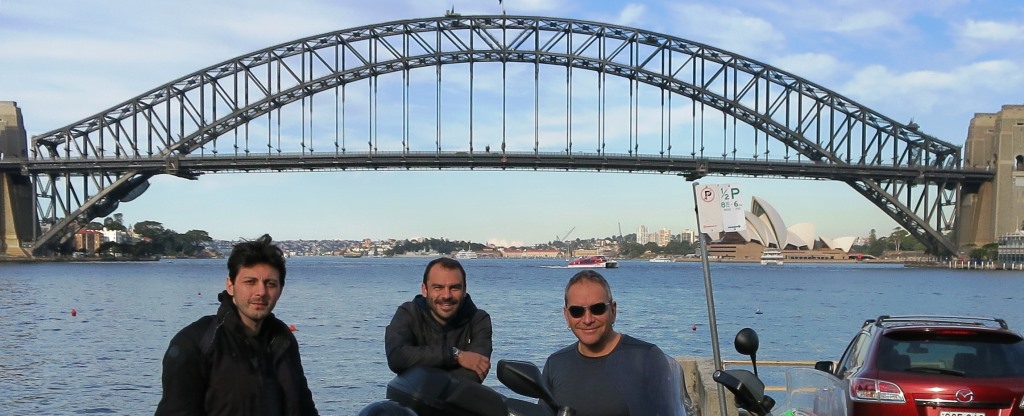
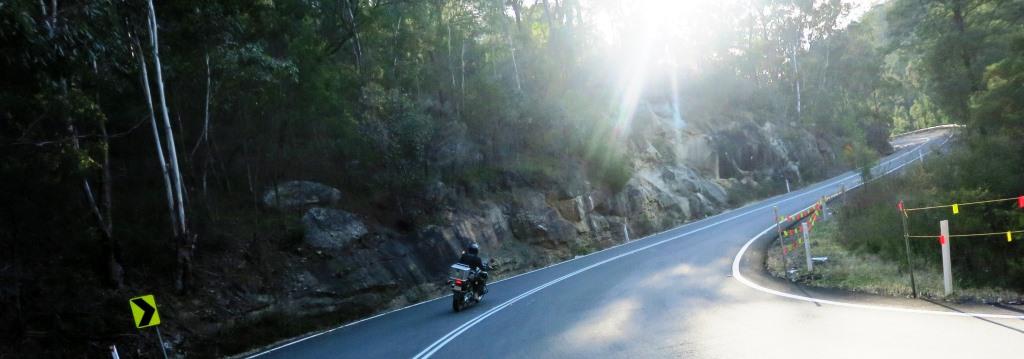

From
Katoomba, it is about 2 days ride to Melbourne. We stopped at Wagga
Wagga (first picture below), midway between Sydney and Melbourne. It is
the largest inland city in NSW (population 46,000). After an uneventful
night that we had to drink our whiskeys with soda water (at least not
lime this time), we continued towards Melbourne (second picture below),
which is similar to Sydney but a bit more multi-cultural due to the
immigrants from Southern Europe, including many Greeks. Although we
stayed in Melbourne for almost a week, we again did not manage to find
proper nightlife, despite repeated attempts. However, near Melbourne
starts the Great Ocean Road that traverses through beaches, cliffs and rainforests (third picture below).
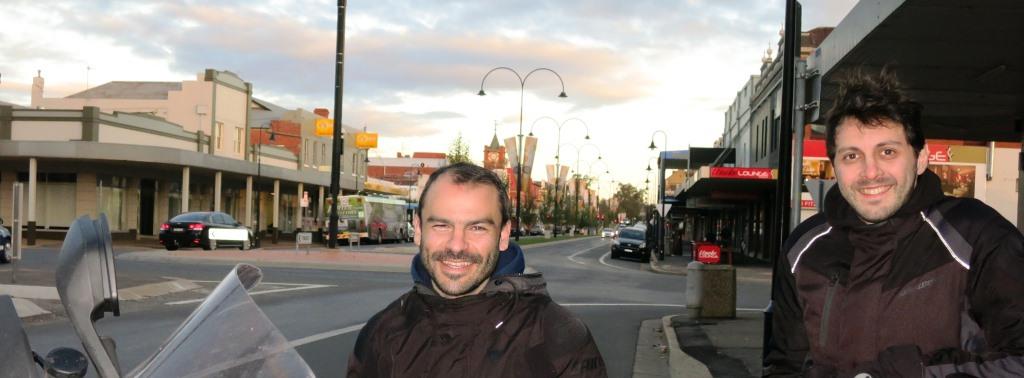


Conclusion: Unfortunately, there is not much to say about the trip because nothing really interesting happened. With few exceptions, the landscape and the ride were boring. Moreover there were speed cameras everywhere (we received a couple of speeding tickets by post a few weeks after the trip). Except for the gas, everything else (e.g., food, water, drinks) is expensive. Given that the nights were also uneventful and regulated (whiskey with lime!), it is a trip I would not recommend. Below, are pictures during some stops; probably among the most memorable moments of the trip.
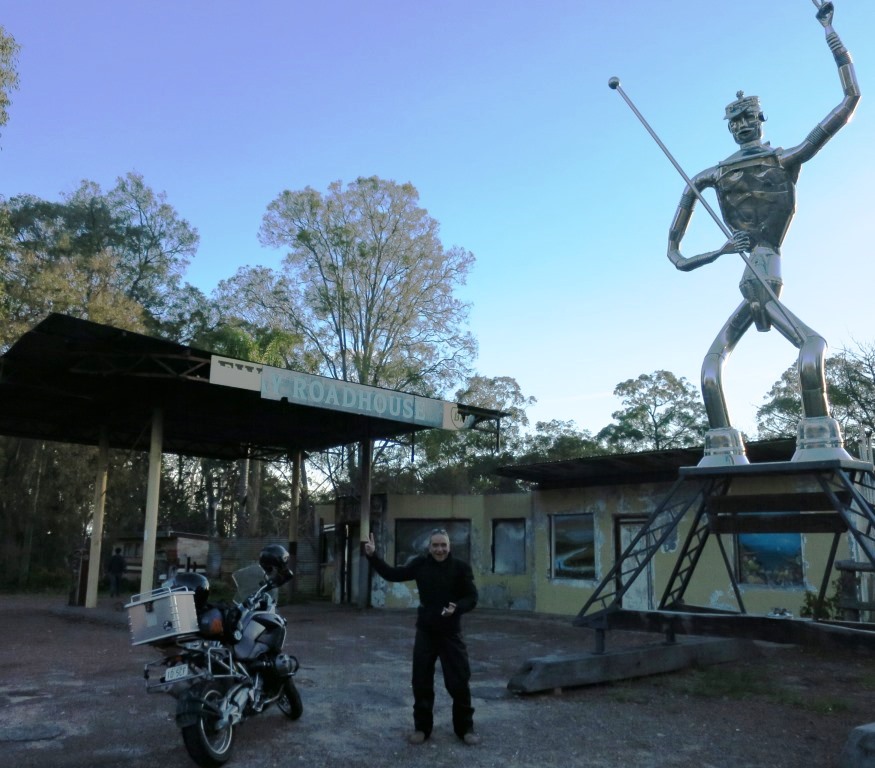

2014 June
Western US: California, Nevada, Utah, Arizona, Idaho, Wyoming, Montana with Panos and a BMW 1150 RT (and a Toyota Corolla!).
Although
I had done tours of the US with cars before, this was the first time on
a motorbike. Since renting a proper bike is in general very expensive,
we decided to buy a used BMW and sell it after the end of the trip. As
discussed later, this proved to be a bad idea. Nevertheless, we started
from San Francisco on a beautiful day with destination Yosemite
National Park about 320 km away. The route is mostly highways except
for the part near Yosemite. The only interesting incident happened
when, during a stop, we entered 20 meters in a farm, in order to take
cover in the shadow of the trees (see first pic below). Immediately a
farmer came out of nowhere and asked us to exit his property; this was
not the kind of hospitality we experienced in previous trips. The
Yosemite valley is very beautiful (see second pic),
but the camp-site was full; so we had to go to another one, at altitude
around 2500 meters, to set our tent. We arrived there at night, totally
freezing as the temperature was below 0 degrees Celsius. We quickly set
up the tent (see third pic), and we tried to eat at the local kiosk.
Not only we were not allowed to do so because we were 10 minutes past
the closing time, but we were told that we could not stay inside to
warm our bones. Supposedly, they wanted to clean up, but they were
still serving food. In general, although we found professionalism
everywhere during the trip, I cannot say that we encountered true
hospitality.
The
second day we continued exploring the mountains in Yosemite Park. The
first picture below is at altitude above 3000m. Then, we continued
towards lake Tahoe, about 200km to the north. The lake is impressive,
with great forests ending next to the water.
After
Tahoe, we continued on highway 80, crossing Nevada with direction
northeast. The highway is mostly a straight line in the desert (see
first pic below) and dull. This actually made me realize why there are
so many Harleys in the US - there is no need to turn much. The
temperature was gradually dropping and when we reached Elko (northeast
Nevada) at night, we were again freezing. Although our original goal
was to go to Yellowstone National Park, we were not properly equipped
to handle the harsh weather (snow, and below zero temperatures at
night). Thus, the next day, we continued south, in search for higher
temperatures. Optimistically, we wore our shorts (see second pic) for
the trip. Indeed we were right and in the evening when we reached the
Red Cliffs Conservation Area (Utah, borders with Nevada, about 750km
south Elko, third picture) the weather was pleasant.
From Zion we continued towards the north rim of Grand Canyon (Arizona). Although the distance is less than 200km, we enjoyed riding the twisty roads inside the forests. As shown in the pictures below, the view from the top of the canyon is breathtaking.
From
Arches we drove to Jackson Hole, Wyoming, about 850 km north. We
arrived at 2am and everything was closed. However, a benefit of the car
is that you can sleep comfortably inside (see first pic below), even
when it is too cold for camping. Jackson Hole is a small but
picturesque ski resort. To be honest, given its reputation, I was
expecting a larger town - it basically has a main road and not much
else. The second picture below is at the town center.
Conclusion: It
could have been a much better trip, if we did not have the problem with
the gearbox. Eventually, it was too expensive to fix and we ended up
selling the bike for spare parts. The landscape was at times impressive
(i.e., the national parks), but most rides were boring because the
roads were straight and the changes of scenery infrequent, especially
in the desert. Moreover, all the national parks that we visited were
congested and most campgrounds fully booked. The only place where we
found some kind of nightlife was San Francisco (in Las Vegas we had too
many problems to think about it). In the rest of the towns and cities,
it was difficult even to find a restaurant after 9pm. We did not have
to pay tolls anywhere (in Europe we would spend several hundreds of
Euros for the same distance). We were stopped for speeding three times;
the first two the policemen let it go when they saw my international
driver license. The third time Panos was exceeding 170km/h in Idaho and
the policeman gave him a ticket for $250, which he kept as a
collectible from the trip - I guess he will not drive in Idaho again.
2013
Sardinia, Italy and Corsica, France with Andreas and 2 BMW 1200 GS.
This
year's trip was "light" since it included two popular touristic
destinations in developed countries. We took the usual boat from Patra
(Greece) to Ancona (Italy).
From there we drove about 400km to
Livorno, but instead of highways, we chose the equally fast route
through Perugia using national roads.
In addition to avoiding the
tolls, this route involves some beautiful landscape in Umbria and
Tuscany, and permits quick visits to Siena and/or Florence.
To add
excitement, we had intentionally not looked at the ferry schedules in
advance; therefore, when we arrived at Livorno in the evening, we only
found one ferry departing to Olbia, Sardinia.

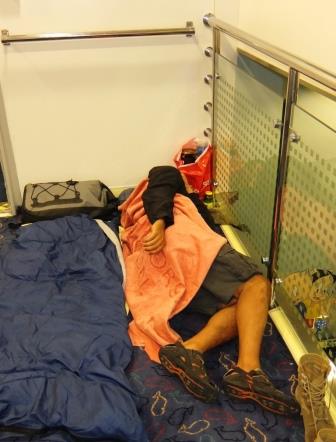
The first day in Sardinia, we rode the eastern part from north to south, passing through some beaches around Orosei and great roads on the mountains of Parco Nazionale del Gennargentu (see pictures below).
However,
the second part (southern) of the trip is not really interesting as it
involves monotonous landscape through uninteresting villages.
Actually,
with a few exceptions (e.g., the old town of Cagliari), we were not
impressed by the architecture of Sardinia. After our stay in Cagliari
(the capital), we were not overwhelmed with the nightlife either.


The
ferry from Lungone (north-east Sardinia) to Bonifacio (south Corsica)
takes about an hour. Bonifacio is striking both when approaching with
the ferry and when walking around inside.
Fortunately, our positive impression of Corsica remained during the rest of our visit.
I will let the pictures below to do the talking.
Approaching Corsica by ferry. Bonifacio in the background.



Typical landscape, west Corsica

Roadside, north Corsica

Old port of Bastia, the capital


The
only problem in Corsica was that my moto-luggage was stolen at night,
outside our hotel in Bastia. Fortunately, I did not have valuables
inside, but it feels strange after visiting so many exotic places,
to
have this experience in France. On the way back, we took a ferry from
Bastia to Savona, Italy (again it was the only ferry departing when we
decided the trip home).
The
ride through the highways of north Italy was uneventful, except that we
stopped at San Marino, a micro-state near Ancona. Unfortunately, unlike
Gibraltar and Andora, San Marino does not have duty free goods.
San Marino (pretty much that's it - population 30,000)

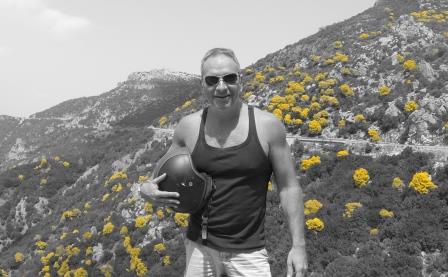
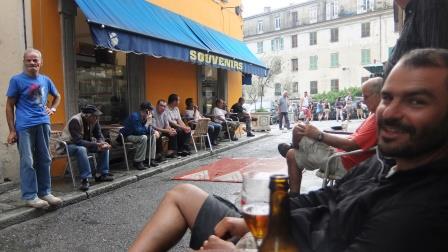
Conclusion: An
easy trip. Despite being about one third the size of Sardinia, we found
Corsica much more interesting and pleasant, but we may have missed
something in Sardinia.
Except
for the stolen luggage, the only issue I can see in such a trip are the
high prices, especially in Corsica. We often paid 3-5 Euros for a
bottle of water, sometimes in the middle of nowhere.
The
common charge for hotels in touristic (i.e., most) areas, was 140
Euros. The ferry tickets were also rather expensive, but then we
visited during the high season.
2012
Albania - Montenegro - Croatia - Bosnia – Serbia - FYROM, July 2012 with Andreas and 2 BMW 1200 GS.
I met with Antreas at Patra, we drove to Northwestern Greece to the border with Albania near Kalpaki (north of Ioannina), and then to Sarande, the largest city in the south of Albania.
The
distance is around 330km and the border crossing easy. The terrain in
the south part of Albania is mountainous and the roads are narrow. I
would avoid this trip with a car –
you may remain stuck behind a truck for a long time since overtaking is difficult. Photo below is at the start of the trip outside Patra.

Although, when we first entered Sarande, we got the impression of third world (with the characteristic smell of sewers), the center of the city near the sea is actually well-developed.
There were nice beaches, coffee shops and numerous people enjoying the sun and the sea.

From Sarande,
we took the coastal route to Vlore, the largest Albanian city by the
sea. The distance is less than 200km, but the road is narrow and twisy.
However, the bike trip was worth it, as it is the most scenic route we found in Albania (see two pictures below). Vlore was full of tourists, mostly from other parts of Albania.


The
northern part of Albania (after Vlore) is flat, and the trip was
boring. Moreover, there was heavy traffic especially when approaching
the capital Tirana.
Thus, we decided to go directly to Budva Montenegro, which is about 350km from Vlore.
We stayed in Budva for a few days and we drove through the entire coastline of Montenegro, which is only about 150km. Tth photos below are from Sveti Stefan and the golf of Kotor.
Despite
the short coastline, the landscape is at times breathtaking. Moreover,
there was a lot of tourism, mostly Serbs and Russians, and lively
nightlife, but the bars closed at 12, even in the weekends!
Those wishing to continue had to go to big nightclubs, usually far from residential areas.


Then, we visited Dubrovnik, Croatia, which is a short drive (120km) from Budva. Dubrovnik is a truly international destination and it does not really resemble the rest of the Balkans.
It
is definitely worth visiting, but it was too civilized for our taste.
Therefore, after staying for the night we continued towards Bosnia.
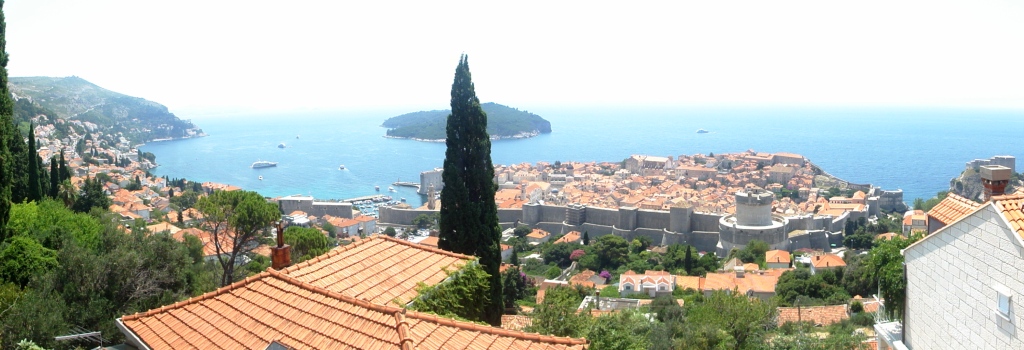
Although
it is mostly re-built today, you can still see the marks of shelling
and bullets on several building. The picture below is taken from Stari Most (bridge), the landmark of Mostar.

The road from Mostar to Sarajevo (70km), is mostly next to Neretva river and rather scenic. Since it was very hot during that day, we swam into the river which, surprisingly, was very pleasant
(I
was expecting colder water). Sarajevo is the capital and largest city
of Bosnia (population about 500K). The ottoman influences, including
kebabs and veiled women, are visible everywhere;
the same is true for the western influences, including nightclubs, mini-skirts etc. The first photo below is after the swim in Neretva, and the second outside the hostel that we stayed, right at the center of Sarajevo.
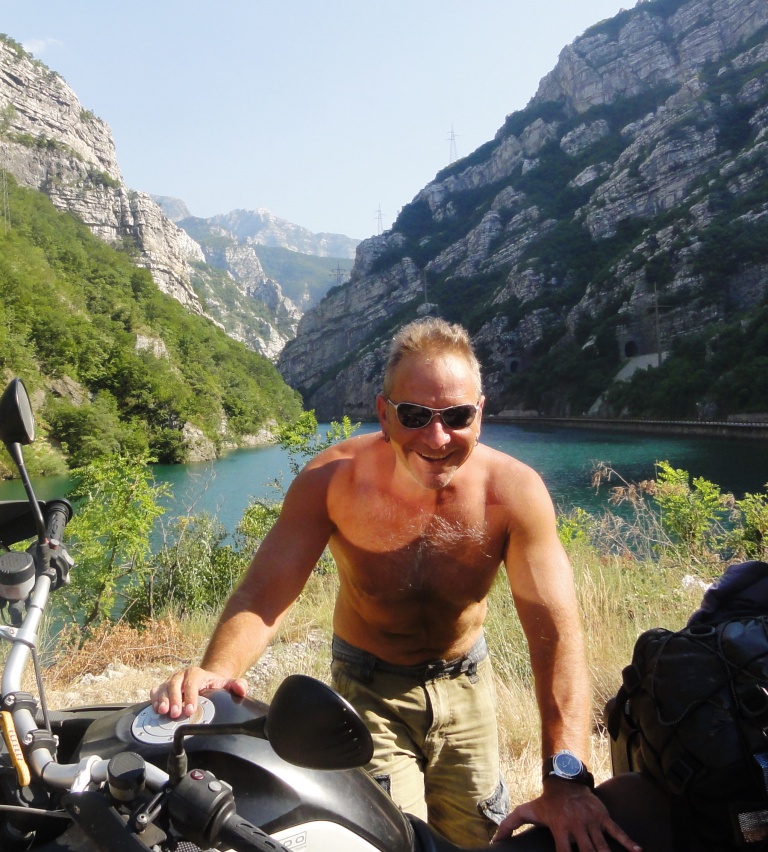
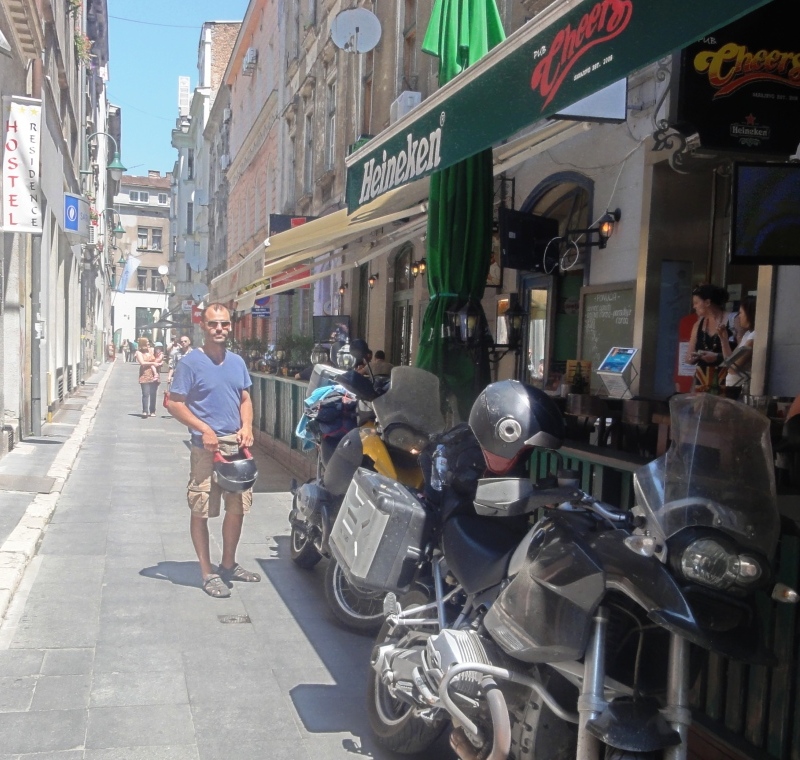
The
part of the road Sarajevo – Belgrade (total distance about 200km) in
Bosnia passes through picturesque mountains and it was a pleasure to
drive (see photo below). However the Serbian part is flat.
It
is worth mentioning that after Sarajevo, and upon entering the Serbian
part of Bosnia we were stopped by policemen for speeding – the incident
cost us 20 Euro in “gifts”.
Around 50 kilometers before Belgrade we entered the first real (toll) highway of the trip.

We
stayed in Belgrade for a couple of days and we enjoyed it. The city is
beautiful and the nightlife lively, especially in the weekends. Start
with a coffee or early drink at Strahinjića Bana,
continue to
one of the bars under the Most bridge, and finally end the night (or
morning) in one of the boat-clubs at the other side of the river.
It may be worth visiting the Sava lake, where
locals go to swim in the summer. Frankly, we were not impressed because
it was too busy (we went on Sunday) and the water was not appealing.
Below, sunset at the castle of Belgrade with a view of the Danube.
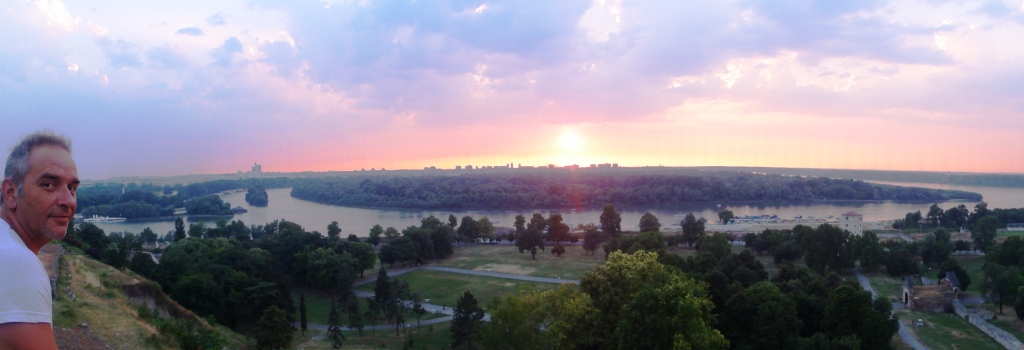
The return to Greece was uneventful. We had a stop-over at Skopjie, the capital of FYROM, where most landmarks (e.g., airport, main highway and square) are called Alexander the Great.
Come on people – get a life. I have to admit, however, although Skopjie is small (less than 500K) and we were there on a Monday night, the city was bristling with life, until very late.
This was in stark contrast with Athens, which was very quiet during the week days. Blame it on the crisis.
Bonus Pictures
On the left, a stop at Sveti Stefan in Montenegro. On
the right, outside Tirana we met a cyclist who was returning home to
Spain after a 3-year tour of the world. This is indeed hard-core
touring.
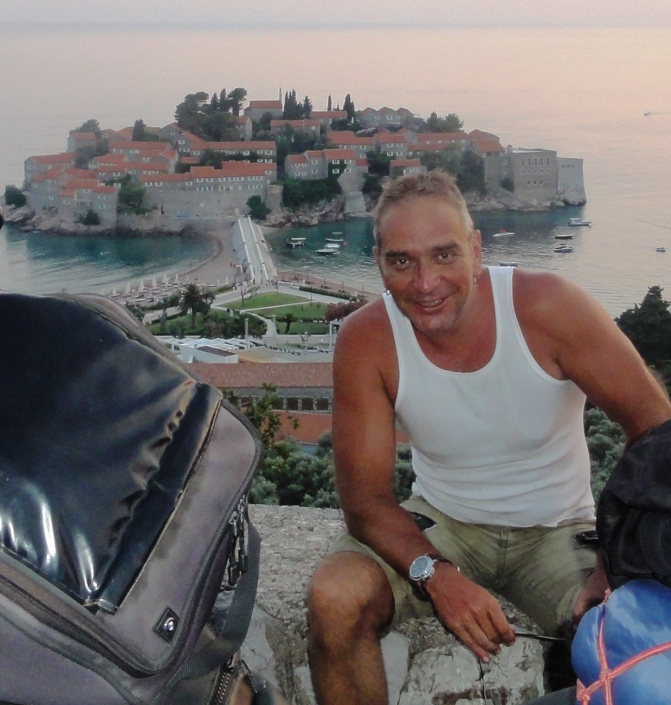
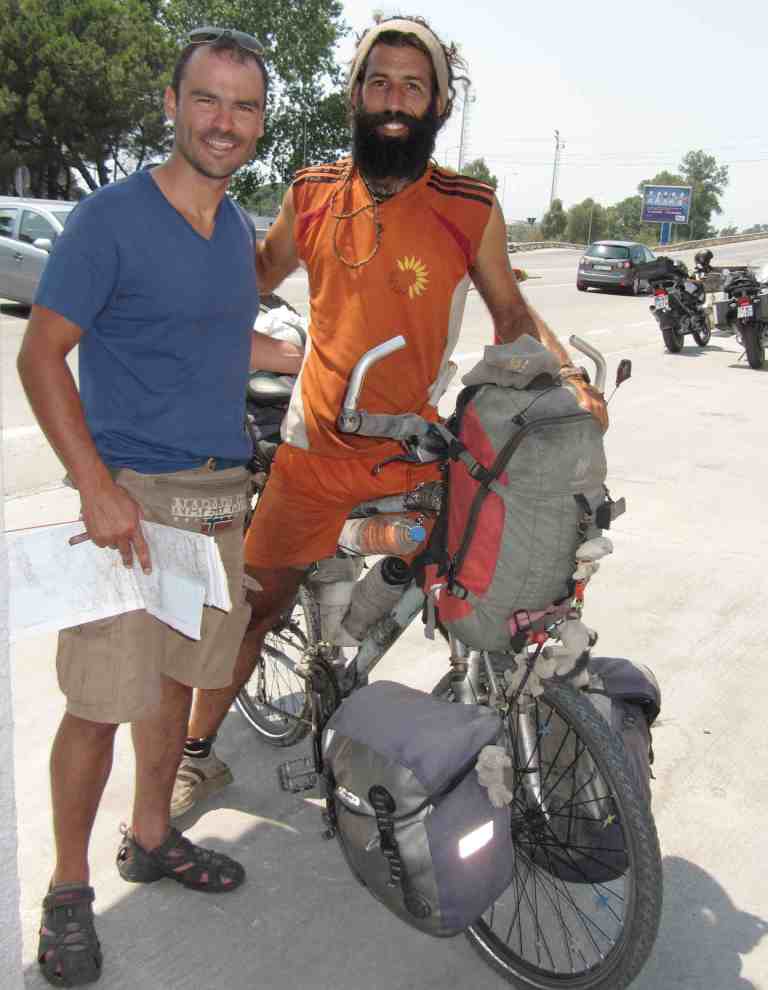
Conclusion:
Compared to some previous trips (e.g., Morocco, Syria), this was a walk
in the park in terms of conditions and kilometers traveled.
All the custom crossings were straightforward and the roads in no worse condition than those in Greece.
Among
the places that we visited, I mostly liked Montenegro and Dubrovnik
(for the landscape) and Belgrade (for the vibe). Keep in mind, however,
that most of these places are not particularly cheap.
2011
France - Spain - Morocco - Portugal - Andorra, July 2011 with Andreas and 2 BMW 1200 GS.
We
started our trip from Peloponnese, Greece. Here, outside Andreas'
house, lighting "one for the road" - in the background the bikes fully
packed.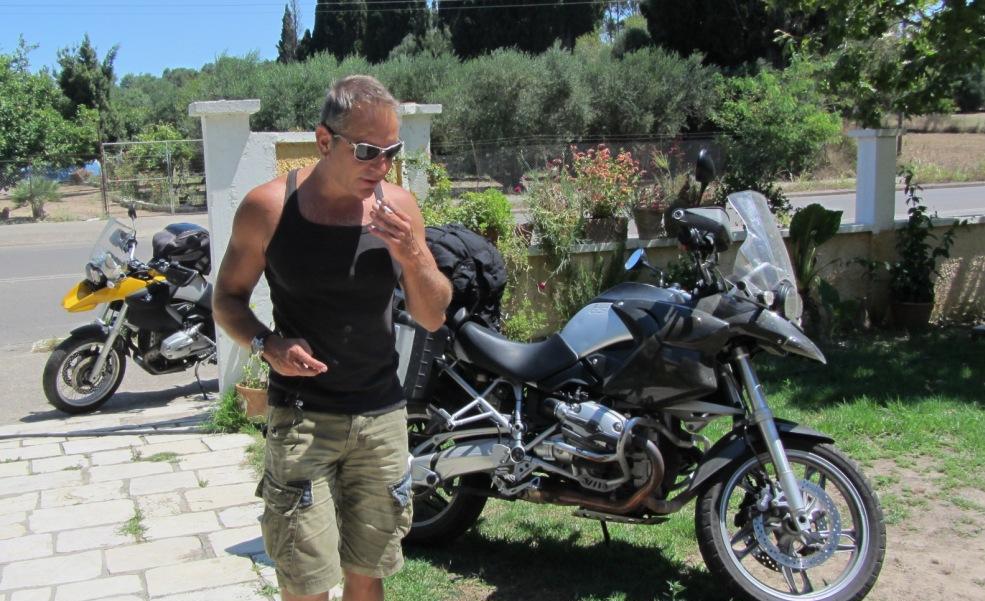
We
took the ferry from Patra, and after 23 hours we reached Ancona, Italy.
There are 1-2 ferries per day Patra - Ancona, and the tickets are
relatively cheap for the distance and the quality.
Below, Andreas at
the port of Ancona. The weather was cloudy (common for northern Italy -
as opposed to Greece in the summer), which is convenient for long
riding.
We
crossed northern Italy and part of southern France (a total of about
900km) in a single day, in order to reach Aix en Provence, where we
stayed at a friend's place.
For those who are not familiar, the
highway tolls are very expensive in Italy and France, and even more so
in Spain. Moreover, there are a lot of speed cameras in France (not
that we cared because of our Greek plates).
Continuing south, we
visited Sete, a tradditional town 20km south of Montpellier, and Cap
d'Adge, a beach town around 30 km further (see pic below).
I prefer
this area to the more touristic (and in my opinion overdeveloped) strip
between Nice and Cannes, i.e., the most famous part of Cote d' Azur.
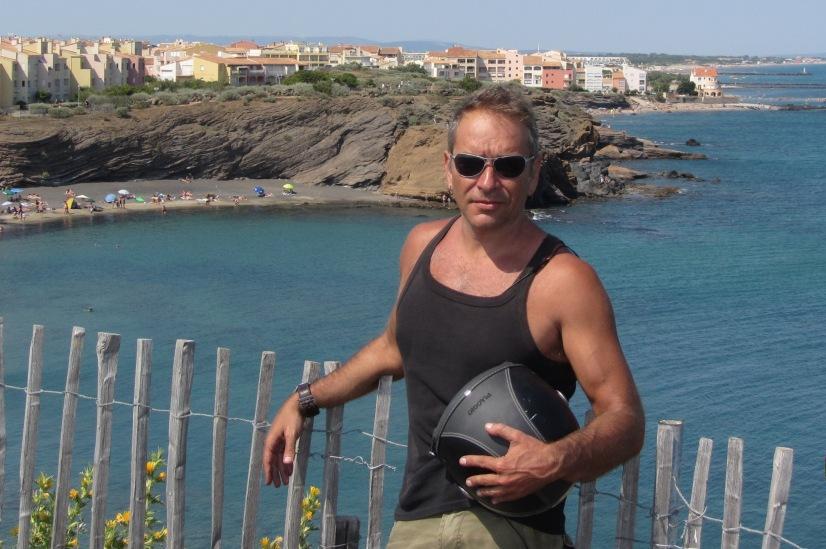
We
continued to Barcelona, where we stayed for a couple of days.
Barcelona has extraordinary architecture, nice beaches nearby and
lively nightlife.
However, it is very busy during the summer, and we spent several hours before we found a hotel downtown. 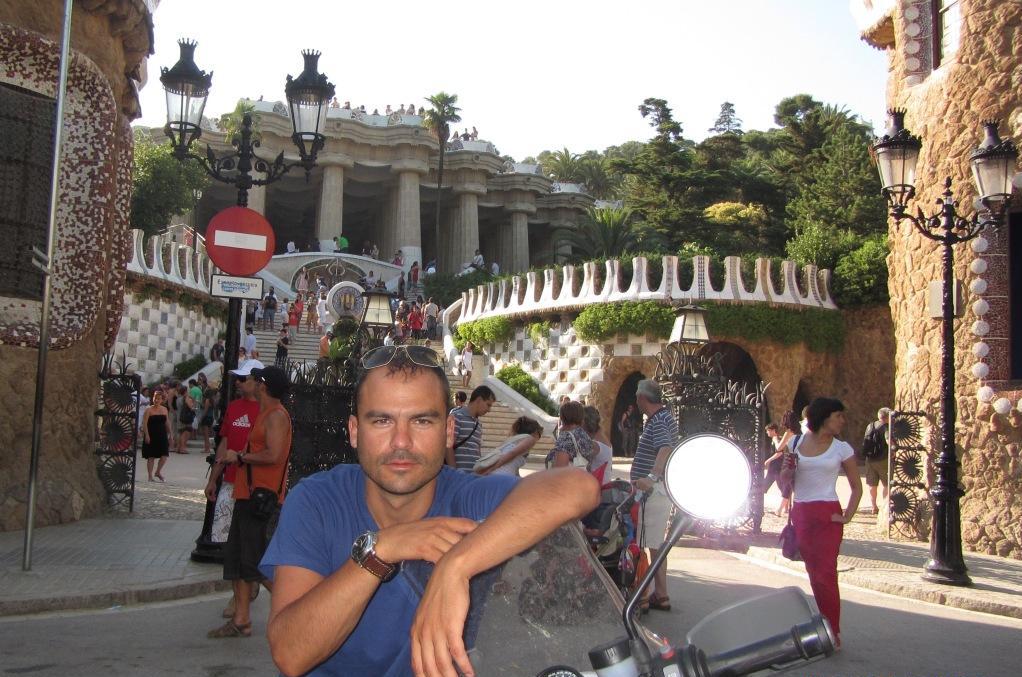
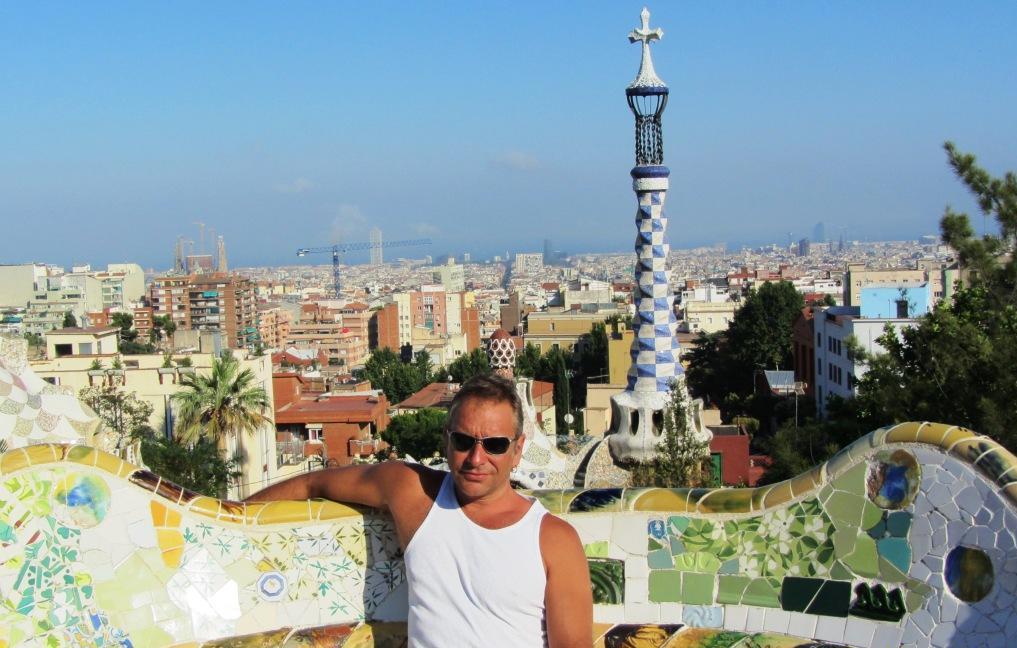
After
Barcelona, we crossed most of mediterranean Spain (650 km) to Almeria.
Although, we arrived late (around 10pm), there were 3 ferries departing
to Morocco within the next 1-2 hours.
However, they seemed fully
booked (due to Moroccan immigrants returning home), and people in that
part of Europe do not, in general, speak English. Eventually, we
managed to get tickets and depart around 11:30pm to Nador, east Morocco.
It
is worth mentioning that, although the trip is only 5-6 hours, the
tickets were more expensive than those for Ancona-Patra (23 hours and
much better ferries).
The good thing is that in the ferry there were
Moroccan officers so that passengers can pass through the
time-consuming immigration procedures during the trip. Indeed, we spent
most of the trip completing forms and queuing up,
so that upon
arrival, we only had to wait for about half an hour at the customs.
From Nador, we continued east, on the mediterranean coastline, until
reaching the borders with Algeria (see pics below).
On the way we
stopped for coffee and swimming at the (touristic) beach town of
Saidia. Although the landscape and the sea was nice, I cannot say that
we were overwhelmed (maybe our Greek standards are too high).
Mediterranean coastline at east Morocco and border with Algeria
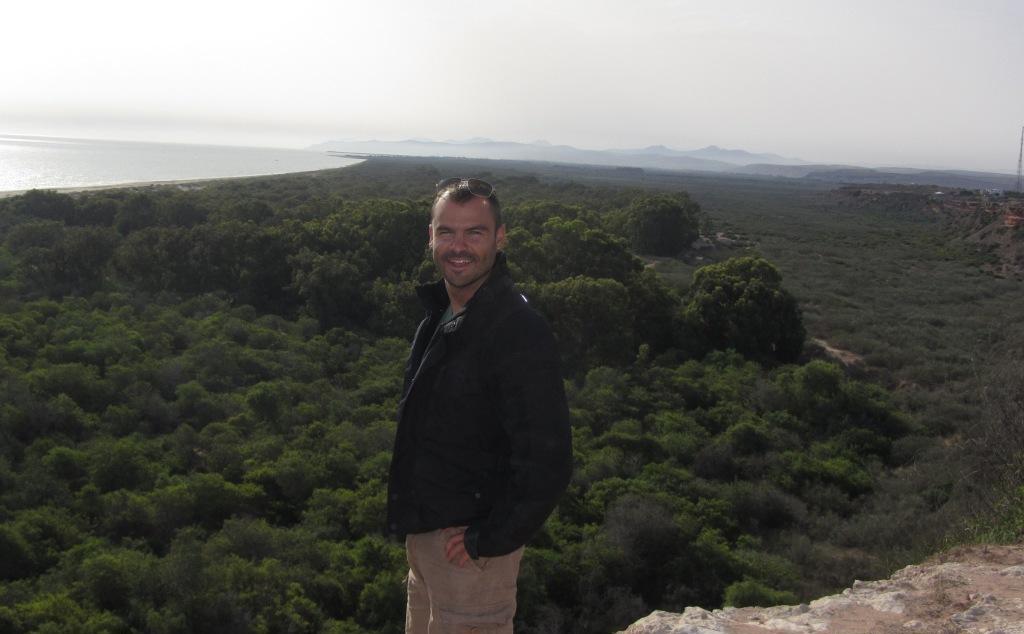
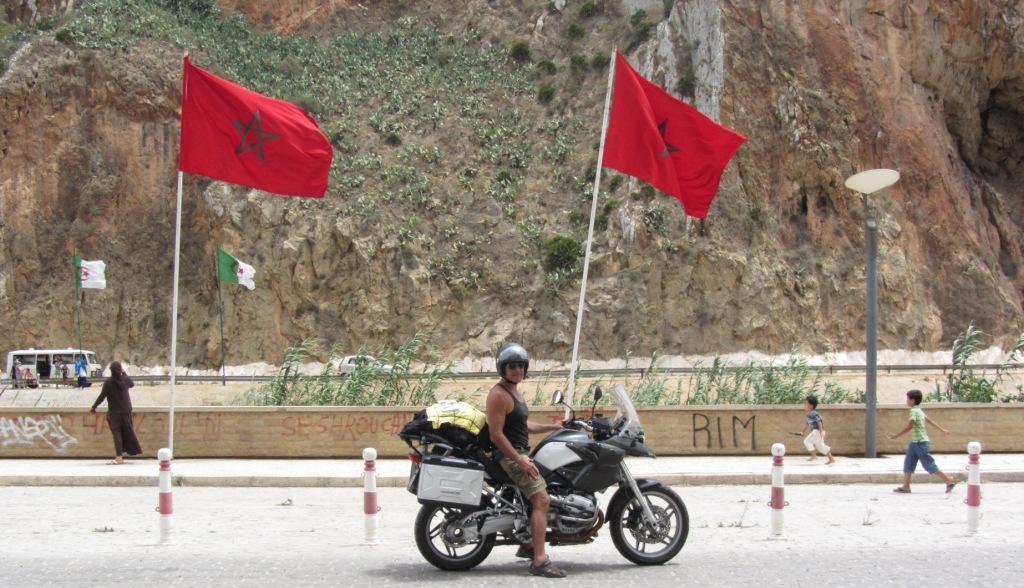
From
there, we turned southwest and we rode through a gorge at the national
park near Berkane, stopping on the way to sample the local cuisine (see
pics below).
After the park, and towards Fes the landscape changes
to desert-like and we encountered the highest temperatures in our
lives. It must have been well above 50 Celsius, despite being cloudy.
We were afraid that either we, or the bikes, would crack under the extreme heat, but eventually we all made it to Fes.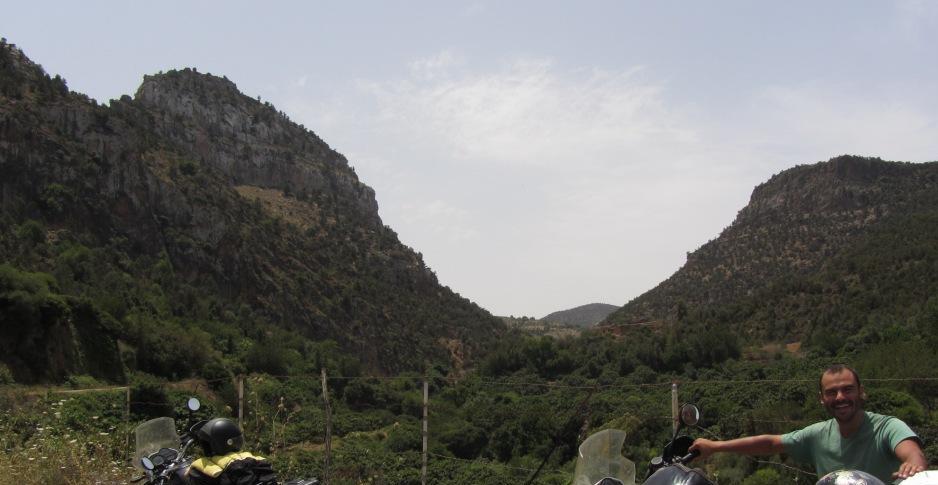
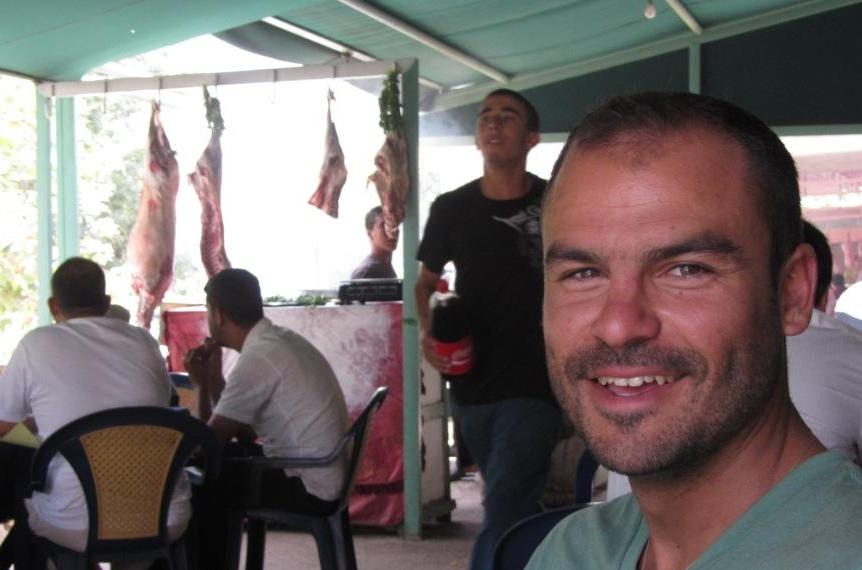
Most
Arab cities have a "medina", i.e., an old town surrounded by walls. The
picture below is outside the medina of Fes, possibly the largest in
Africa..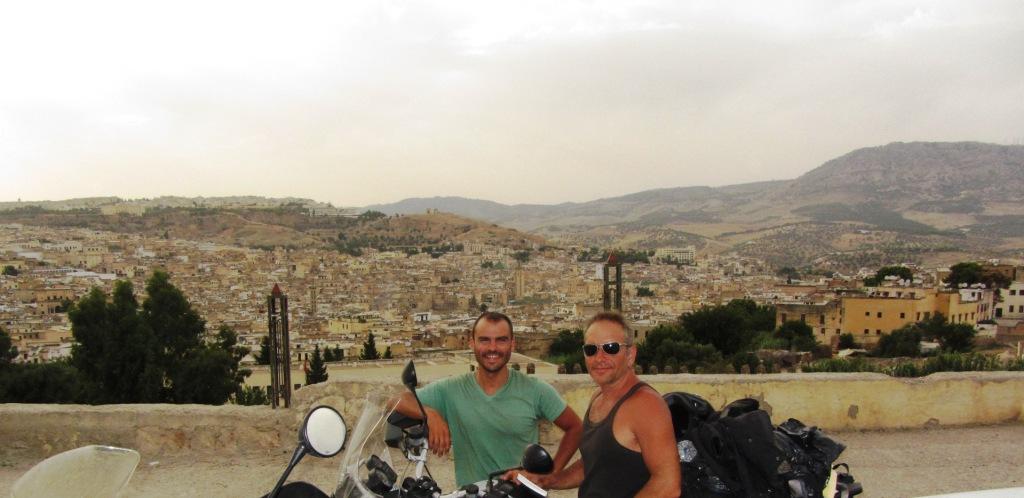
Inside
the medina there are open markets as well as workshops for making local
artifacts. Below Andreas outside a tannery - Fes is famous for its
leather products.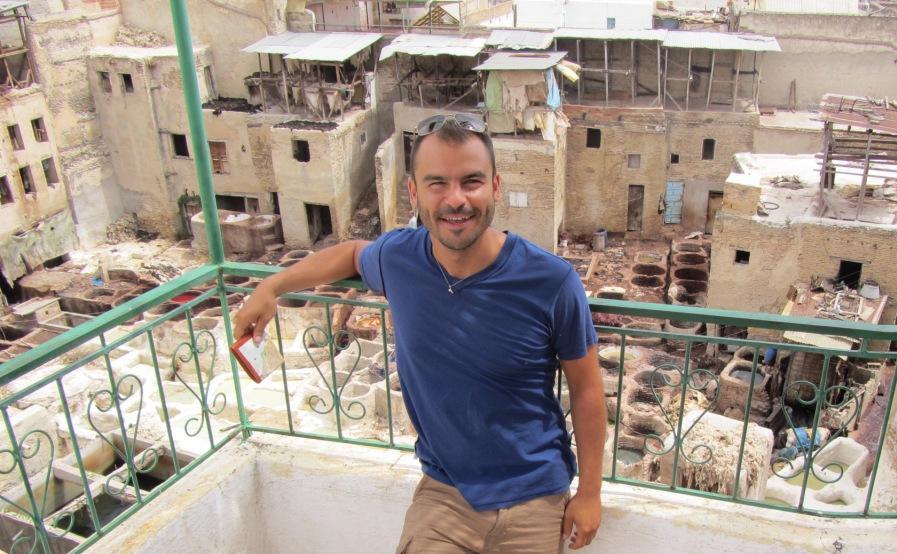
From
Fes we drove to Marrakech in a single day. Although, the distance is
not large (around 400km), it was one of our most difficult days, due to
the extreme temperatures, the bad road and the heavy traffic.
You
can see the discomfort in our faces in the pictures below. We actually
wanted to cool down in the lake of the first pic, but we did not manage
to get the bikes close enough.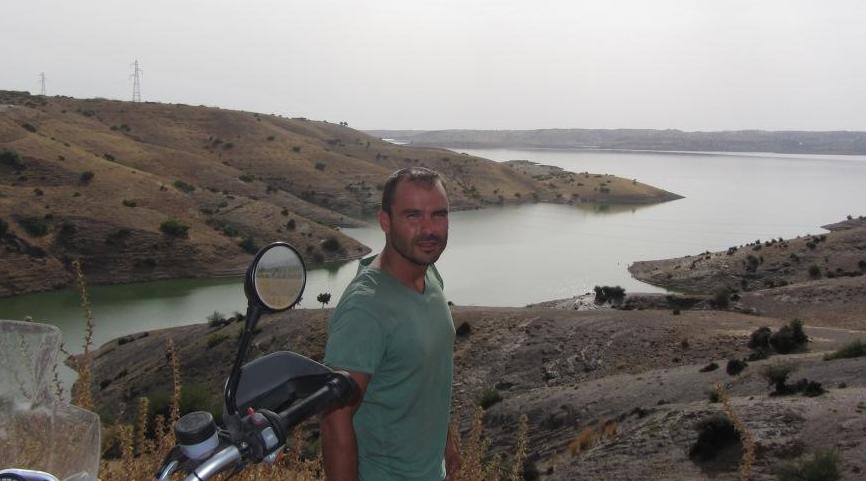
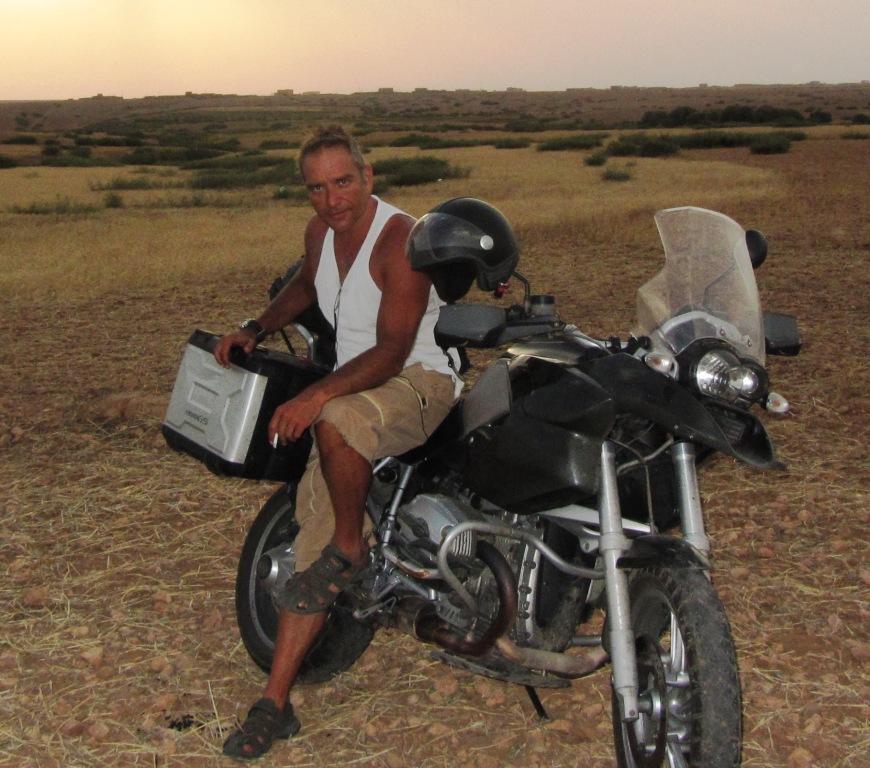
We
liked Marrakech more than any other city in Morocco. It has a huge open
market (see pics below), with many shops, open restaurants, coffee
shops and strange characters that perform all kinds of tricks.
It
also has decent bars. A word of advice though: if you see a beautiful
woman smiling at you in a bar don't get too excited; chances are that
she is working.
This is true for most (if not all) single women in
bars in Morocco. On the positive side, despite being a muslim country,
it is easy (but relatively expensive) to find whiskey and most types of
alcohol.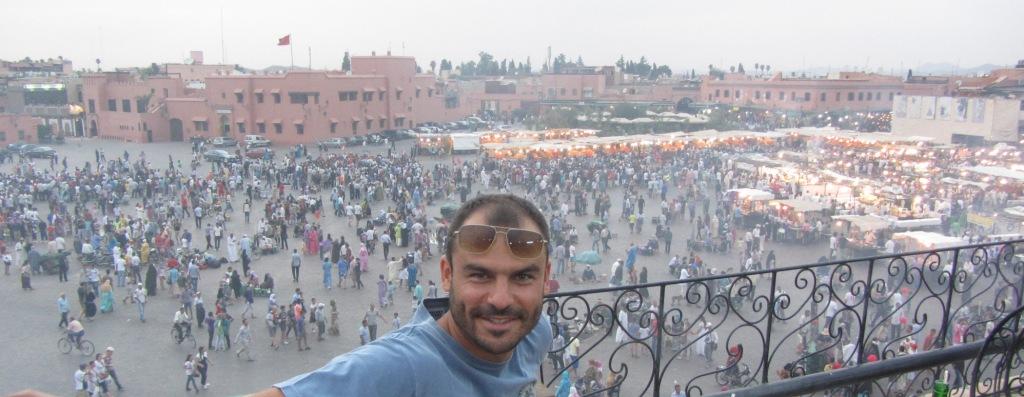
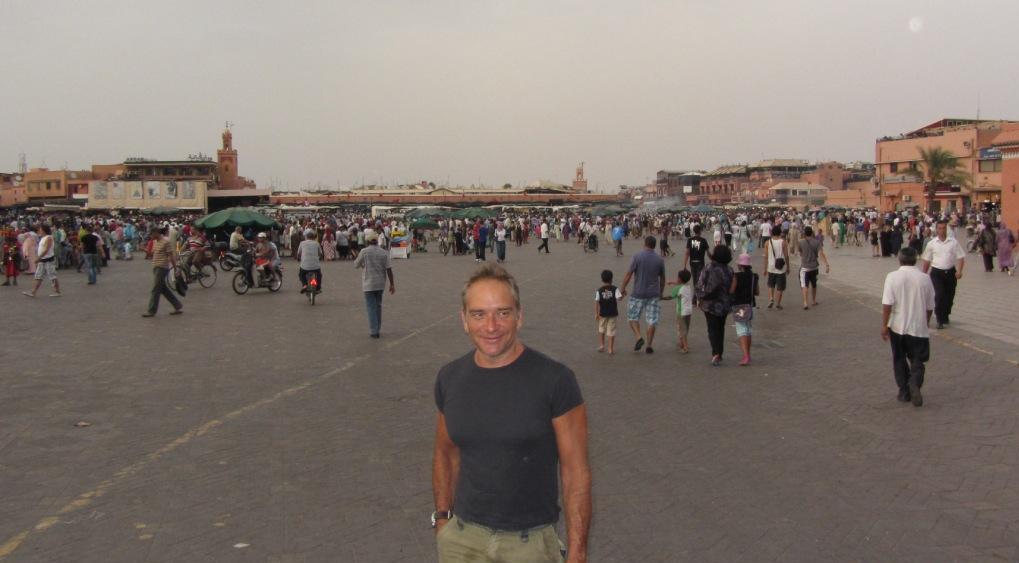
Our
next stop was Essaouira, west of Marrakech, on the Atlantic ocean. We
were mostly impressed by the sudden drop of temperature when reaching
the ocean,
since within a few kilometers of intensive heat, we
had to wear the winter jackets. Because of the low temperature and the
strong winds, there was nobody swimming, but many people were wind and
kite surfing.
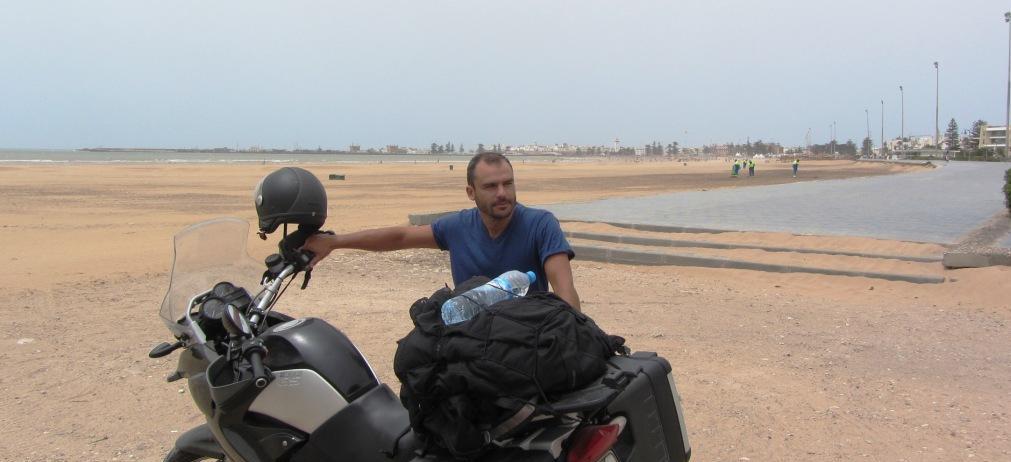

The
road south of Essaouira, towards Agadir, passes through some beautiful
beaches. Possibly, this was the most scenic route we did in Morocco
(but we did not go up the Atlas mountains). 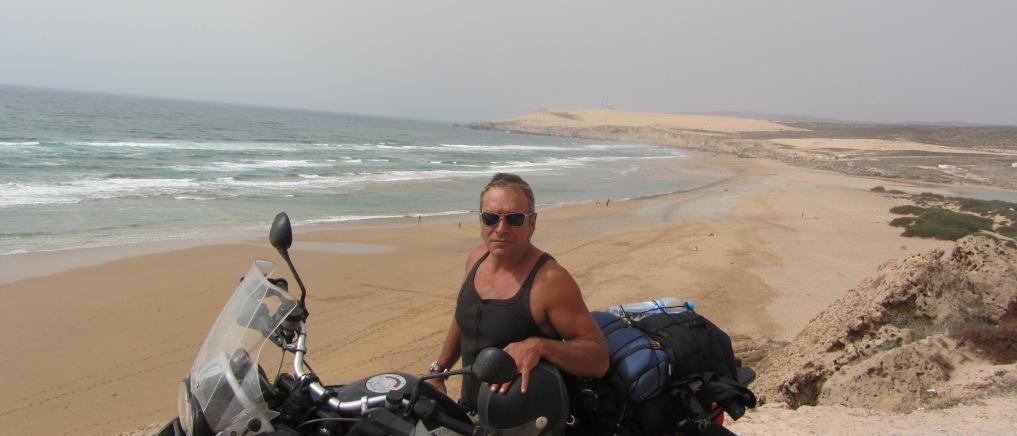
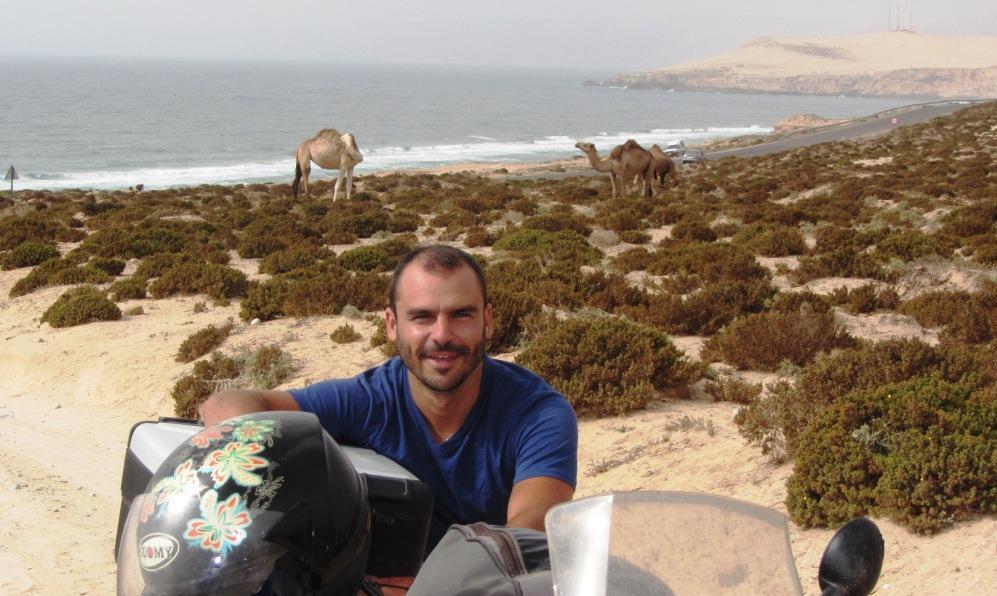
Agadir
is a modern beach town on the Atlantic, near the border with Western
Sahara. It has lots of tourists from Morocco and elsewhere, but
not much character (and no medina).
We stayed for a night and then
headed north, taking the only highway in Morocco. After a stop in
Casablanca, we drove all the way to Ceuta, the Spanish enclave at the
northern tip of Morocco.
Entering Ceuta was impressive. Although
still in Africa, it could be a nice town anywhere in Spain. We stayed
there for a couple of days.
Andreas even participated in a poker
(hold' em) tournament at the local casino and got second prize (and a
useful amount of cash).
The statue in the picture is Plato, another reminder that we are back in European culture.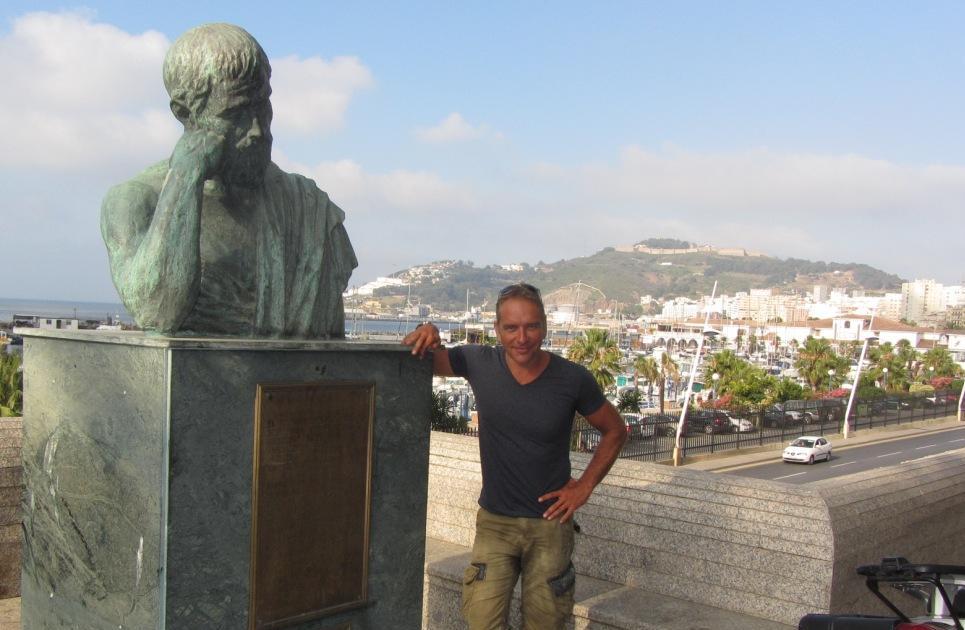
The ferry trip for Ceuta to Algeciras (Spanish city on the European coast) takes about an hour. The picture below is from this trip, with Gibraltar rock in the background.
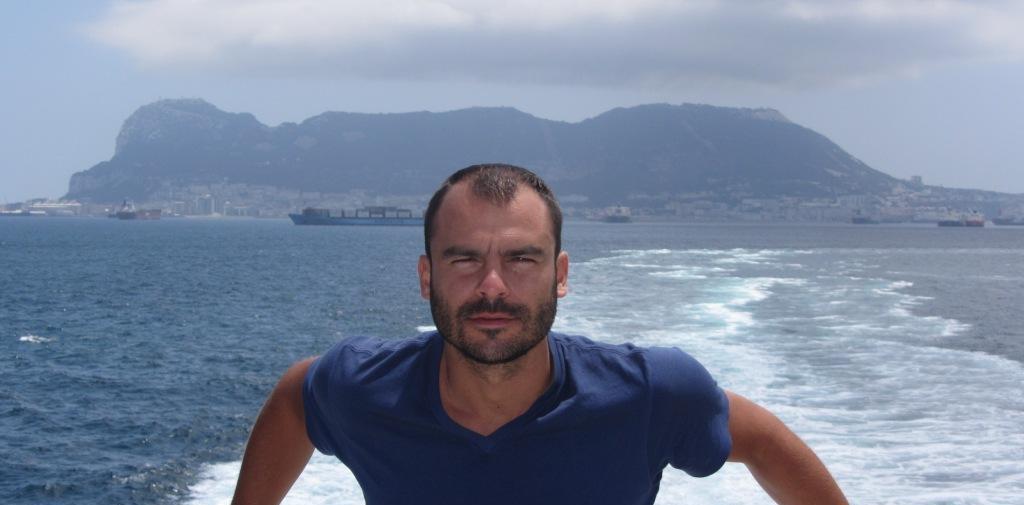
Similar to Ceuta in Morocco, Gibraltar is a small British colony in Spanish territory, and requires passport inspection.
Except
for the duty-free cigarettes and alcohol, we did not find any reason to
stay there - instead we continued west towards the atlantic coast of
Spain.
After
a scenic, but windy, route we reached Cadiz, a beautiful town on the
Atlantic (see pic below), with a well-preserved historic town
center. 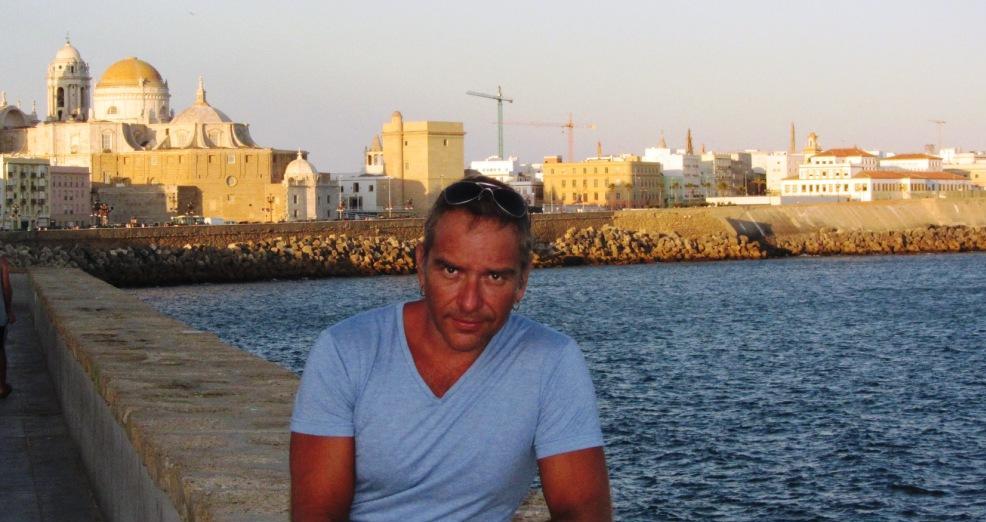
From
Cadiz we rode to Lisbon, Portugal, a distance of about 600km . The road
was mostly highway, and the trip was easy (if not boring). I had never
been to Lisbon before and I was pleasantly surprised.
It is an
imposing city built at a striking location. We also happened to be
there in a weekend, and it was nice to see so many people out partying
(compared to our previous unexciting nights in Morocco).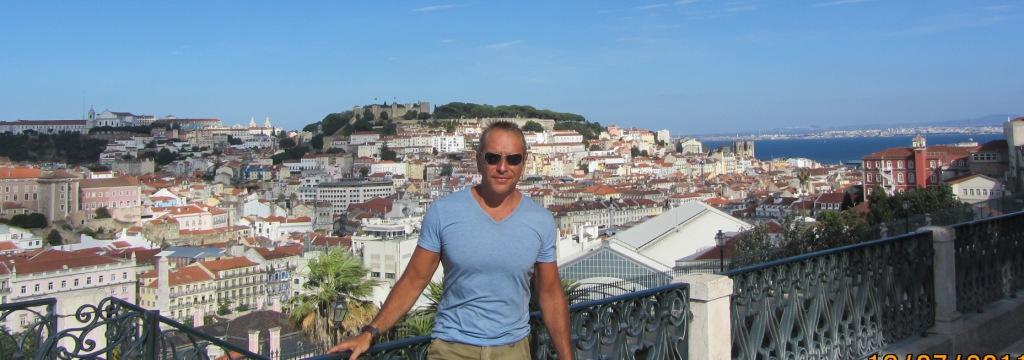
During
the trip from Lisbon to Porto (north Portugal), we encountered some
very strong winds and rather cold weather (we had to wear the winter
jackets again).
After Porto we turned east, towards the mountainous
area near the border, re-entered Spain and continued until Valladolid.
This was probably the day that we covered the longest distance
(we
crossed more than half of Portugal south-north, and almost half of
Spain west-east). Below Andreas at the central plaza of Valladolid.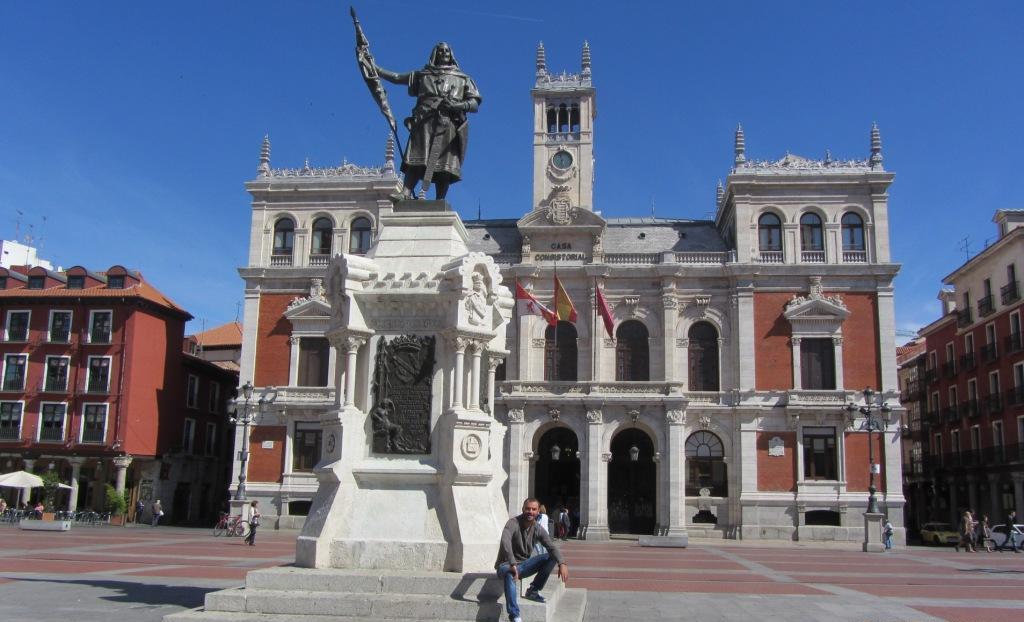
From
Valladolid, we took country roads to Zaragoza, the highway to Lleida,
and then we turned north to Andorra. The last part is on the Pyrenees
and involves some breathtaking landscape,
as shown in the picture
below. Obviously, the temperature dropped as we climbed the mountains,
and the evening in Andorra (altitude more than 1000m) reminded me of
winter in Greece.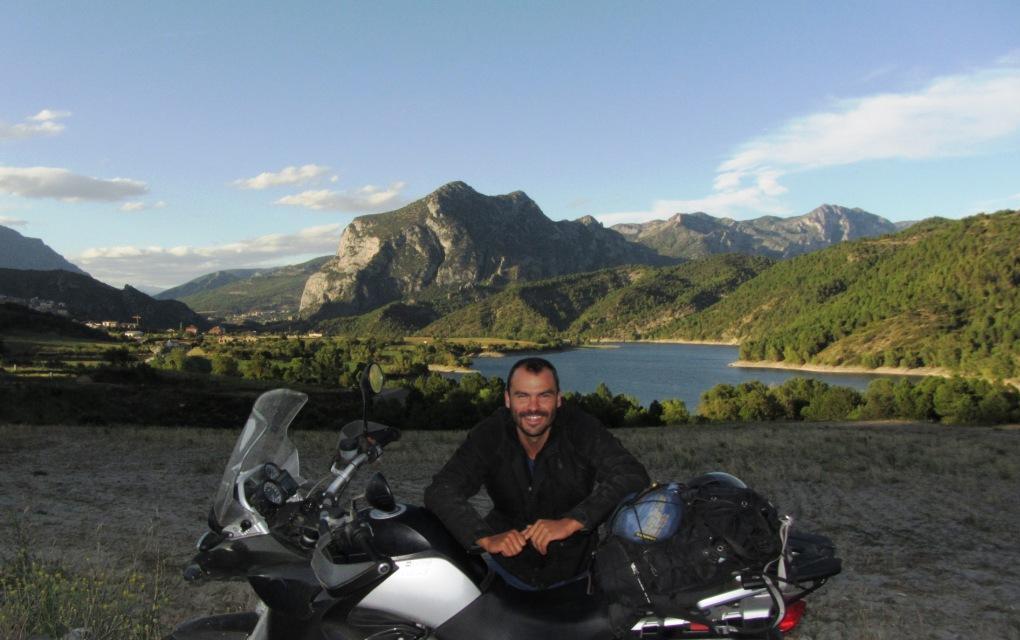
Andorra
is an independent principality, sandwiched between Spain and France,
and entering it requires a fast passport inspection. It contains a
small town and a few villages nearby,
for a total of 80,000 people.
Although there is not much to see, it is a shopper's paradise, at least
according to European standards. In addition to the usual tax-free
suspects (alcohol, cigarettes),
you can find cheap designer clothes,
and most importantly for us, motorbike accessories. We
bought helmets, gore-tex jackets, and other small things.
However,
the smile in the picture below, is because we found (and transported on
the bike all the way to Greece), a gallon (4.5 liter) bottle of Jameson
(Ireland's finest whiskey) for only 50 Euros. Priceless.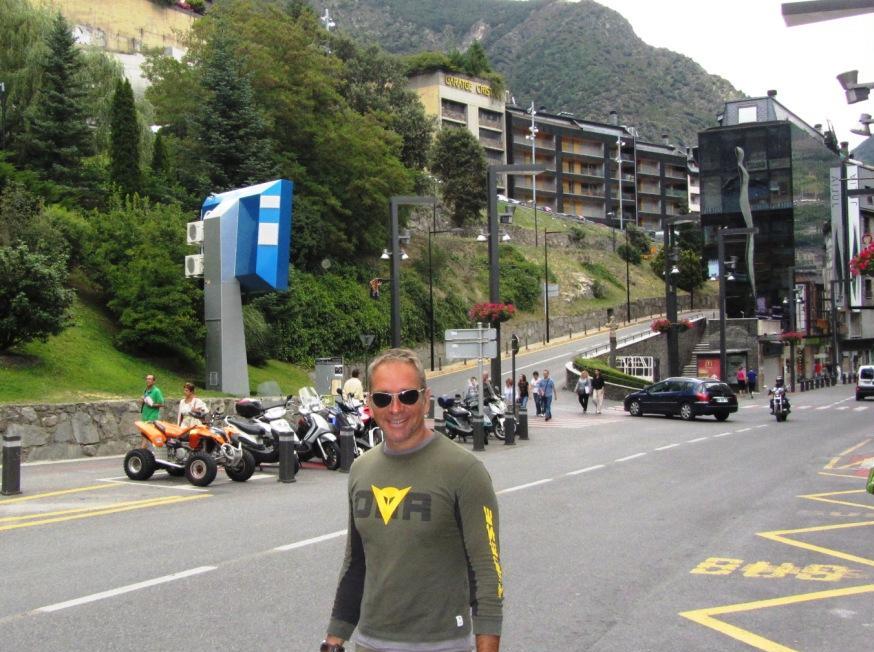
The
route from Andorra to France also involves some curvy roads (see pic
below). It was unusually cold and windy for the season (at some point
we saw
a thermometer indicating 6 degree celsius in relatively low altitude), but I prefer this to the heat of the desert.
After
a few days stay with friends and family in Montpellier, France, we took
the way back to Greece, where we enjoyed the rest of the summer
drinking Jameson.
Conclusion:
Since most people know what to expect in Europe, I will focus on
Morocco. First, I recommend this trip as an experience, but not
for having a good time
(if you look for a good time you'd better fly
to a luxurious resort in Greece, Brazil, or Thailand with much less
money than the cost of the bike trip).
Often, the heat is too much,
the roads too bad, the people too poor, the beaches not that good, and
the nightlife not that exciting.
However, I am happy that I did it,
and I would do it again soon if only it were closer to Greece, at least
to go-up the Atlas mountains and deeper in Sahara.
But I would choose a cooler season.
Regarding
the practical issues, we always felt secure, but we avoided the lawless
hash-growing areas around Ketama. Although we had heard stories about
bribe-taking police officers,
we did not have any problem; we were
never stopped and the policemen were willing to help us whenever we
asked for directions. There was unleaded gas almost everywhere, but
sometimes of dubious quality
(the engines would occasionally
complain). Next time, I would avoid the gas stations with goats and
other folk themes, and go to the more modern looking ones instead.
The
only complaint was about the people who where bothering us all the
time, asking for cash in exchange for services like parking the
motorbikes, completing custom forms,
finding hotels, guiding us
through the cities etc. In most cases, we simply ignored them, unless
we really needed to find a hotel or navigate through a city fast.
Finally, this link contains useful information about custom procedures and riding in Morocco from somebody much more experienced on the topic.
Bonus pictures from Morocco:
Andreas
with his new friends, and a local chef (perhaps surprisingly, we did
not have diarrheas or related problems this year - maybe we got
stronger after last year's experience in Lebanon).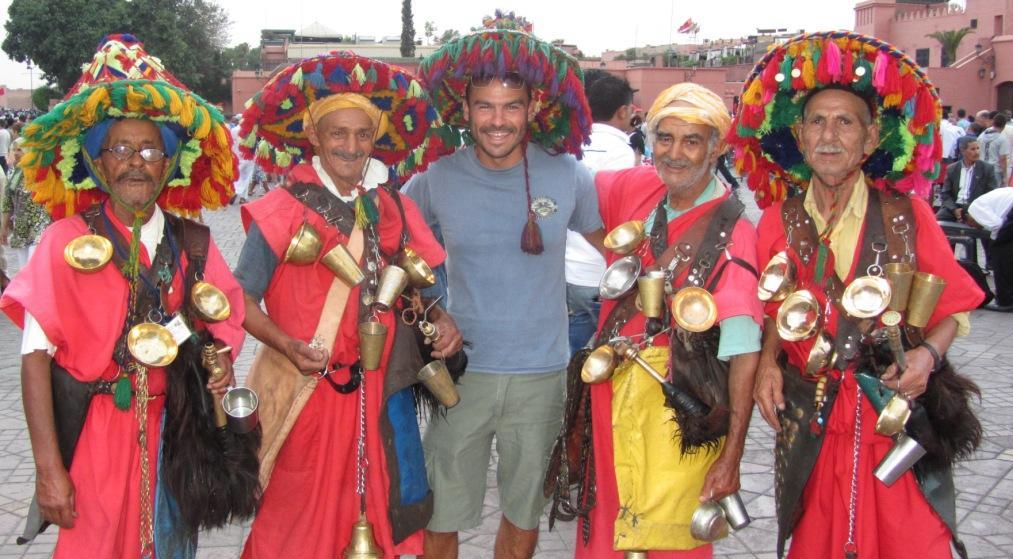
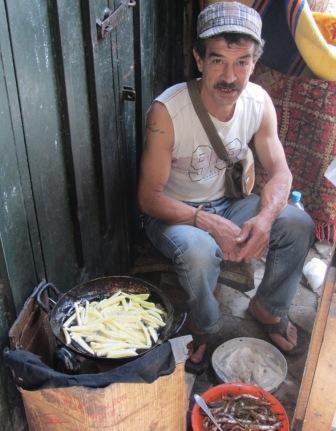
2010
Turkey - Syria - Lebanon, July 2010 with Andreas and 2 BMW 1200 GS.
We
took the boat from Athens to Rhodes, near the southwest coast of
Turkey. Rhodes is one of the largest and most touristic islands in
Greece.
There, we met Steve, an old friend from Hong Kong.
After
a couple of days in Rhodes, we took the boat to Marmaris, on the coast
of Turkey. Although the trip is less than two hours, the ticket is very
expensive because there is
only one operator and only three boats per week. This is, in general, true for all crossings between Greek islands and Turkey.
From Marmaris, we drove southeast to the seaside town of
abandoned
since the population exchange of 1923. The legend is that Muslim
immigrants from the Balkans refused to relocate in the village because
they considered it haunted.
Near
Kaya, is the beautiful lagoon of Oludeniz, where we camped for the
night. The area was very busy (maybe too busy for my taste) with
several options for nightlife,
water sports and paragliding.
From Oludeniz, our plan was to cross the southern coast of
beautiful beaches, picturesque towns (especially Kas), and high mountains. In general, I liked the southwest part of
(Canakkale to Izmir
It is worth mentioning that in
is only political, and not real. In general, throughout our 3000km within
genuinely friendly.
The
100km between Antalya and Alanya (to the east) is flat and full of huge
hotels. However, after Alanya the terrain becomes mountainous and
touristic development stops.
The road is small and curvy (see
photo), almost all the way to Mersin, the next big city, several
hundred kilometers away. From Mersin, there is highway to Iskenderum,
an industrial city next to the border with Syria.
We
had tried to obtain Syrian visas in Athens, but it was not possible
because their computer system was down. At the time, the explanation
sounded strange, but things became clear
when we arrived at the
Syrian side of the border; it was simply a mess. A huge queue of trucks
and cars, people running around and no obvious organization of any kind.
We
had to wait a few hours in several offices (see photo below), pay a
significant amount of money (most of it - about $120- for the carnet du
passage,
required for all vehicles every time they enter
Syria), and give small "gifts" to various "officials". On the positive
side, the visa process was simple
(the visits to the embassy in
Athens were unnecessary, as the complications were due to the bikes -
not the visas), and there were always good people around willing to
help.
The landscape after entering Syria and towards Haleppo is distinctively third world.
Haleppo
is a world heritage site, and it deserves it at least because of its
well-preserved old city. It also has a decent number of tourists, some
good hotels
and
excellent food. I was surprised by two things. First it was the
diversity of the people; among the deeply religious folks (e.g., fully
covered women),
you could see a few that could be easily European
(e.g., women with tight skirts or jeans), but were locals.
Second, it was the hospitality;
wherever we went to Syria (and later
in Lebanon) people would go out of their way to help us navigate, offer
us tea, food or whatever they could provide.
I had heard about Arab hospitality before, but I was pleasantly surprised to experience it first-hand.
After Haleppo, we crossed a large part of
(i)
most of the route was in the desert under 40-50 degrees Celsius with no
trees or anything to take cover from the sun; (ii) to our horror, we
discovered that the (few)
gas stations did not have unleaded gas.
Eventually, we had to fill the tanks with leaded gas, and we completed
the trip fearful that at any point the engines would break down
in the middle of nowhere. The engines held, and eventually we reached
(unless you are an archaeologist).
From Palmyra, we continued to Damascus. Again the landscape is mostly desert with few villages breaking the monotony.
However, as usual, we had some worthwhile moments and met some interesting people during our travel breaks.
Damascus
is a big city with chaotic traffic. With a little help from our friends
(see Arab hospitality), we quickly found a nice hotel in the old city,
and started exploring the
(i) famous bazaars, (ii) the colorful
coffee shops, (iii) the numerous food options and (iv) the local
characters as shown in the pictures below.
We liked
and the border crossing is less complicated (but still non-trivial). First let me finish with the negative aspects of
It
is very densely populated and has so much traffic in the summer that
you cannot enjoy driving or the landscape. The roads are full of
roadblocks (sometimes including tanks),
which may stop you (e.g., we
were not allowed to enter Saida, and were made to U-turn in the middle
of the highway). Finally, there is always the risk of being trapped
inside
because
the borders often close, if there is fighting (which is rather common).
All these disadvantages are outweighed by its people: intelligent,
multi-lingual, helpful and optimistic.
We
stayed only four days in Beirut, but I have too many stories to tell.
It is worth mentioning Elio do Brazil (see picture below with Andreas),
the Lebanese-Brazilian,
who helped us with some bike problems,
showed us around Beirut, and brought us in contact with other locals
(including Greeks). The center of Beirut, recently rebuilt after the
civil war,
is
beautiful; go there during a summer afternoon and you will see some of
the most expensive cars parked around, and beautiful women sipping
their coffee or shopping in exquisite stores.
However, I was mostly
impressed by the liveliness of the night life - these people know how
to party (and I have enough experience on this topic to be an objective
judge).
Because we stayed in
in addition to the long distance, we had to cross two time-consuming borders (
However,
we had not predicted an unforeseen factor that complicated things even
further; apparently the Lebanese food proved to be too heavy for our
stomachs, so we spent much of the day
(and indeed the rest of the
trip, until we reached Greece) with diarrhea. This necessitated several
relief stops in rural (below a mountain in
On the positive side, both the Syrian and Turkish borders near the Mediterranean (i.e., close to the Syrian city of
and we managed to reach
The landscape in Cappadocia is truly impressive, with several villages (within a few kilometers from each other) consisting (partially or entirely) of houses carved in rocks.
It was an interesting site to see, but I am not sure that I would do it, if it were the only destination of the trip. Maybe everything else after Beirut would be boring anyway.
From Cappadocia, we took the way back west, crossing Central Turkey. Interesting places that we visited include:
Konya, a tidy and deeply religious city at the heart of Turkey,
the natural springs of Pamukale,
a nice lake on the mountains near Mugla,
and finally, Bodrum, the expensive, busy resort opposite to the Greek island of Kos.
After two days in Bodrum, we took the boat to Kos, concluding an interesting trip (and an unpleasant diarrhea).
Conclusion:
I strongly recommend this trip provided that you can take the summer
heat, and that your motorbike can take the leaded gas of
We never felt in danger, and the people were always willing to help, although, except for
because,
in most places, you will not find experienced mechanics or spare parts,
and there are many crazy drivers in the cities of
Gas is very expensive in
although
the distance to Haleppo is larger, the border is less busy (no trucks),
more organized, and the route more scenic (forest instead of desert).
Allow for a few days in
(apparently I am not).
2009
In the summer of 2009, instead of a big tour abroad, we did several small ones around Greece.
Ipeiros, Halkidiki, Skiathos island, July 2009 with Tony and 2 BMW 1200 GS.
Egnatia
Highway in Ipeiros is a pleasure to ride. The same is true for the new
part of the Ionian Highway, recently delivered outside Agrinio.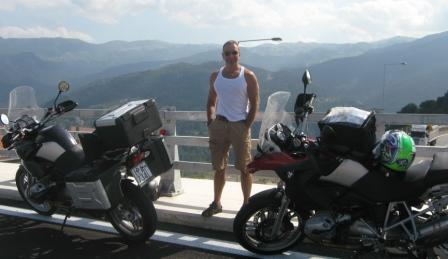
Camping at Armenistis in Halkidiki, and sunset in Skiathos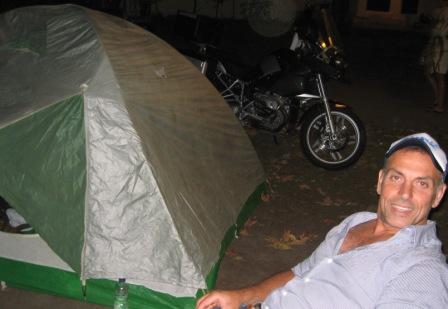

Patmos island, August 2009 with Andreas.
Patmos is beautiful and has the highest quality visitors (VIPs, artists etc) that I have seen in any Greek island.
Compared
to Skiathos that I went before (which is full of "mass production"
entertainment), the difference is large. Compared to Zakynthos that I
visited later, it is a different planet.
However, the island is
small (it takes about 30 minutes to cross it on the motrobike),
crowded and very far from Athens (I spent more than 11 hours on the
boat to reach there).
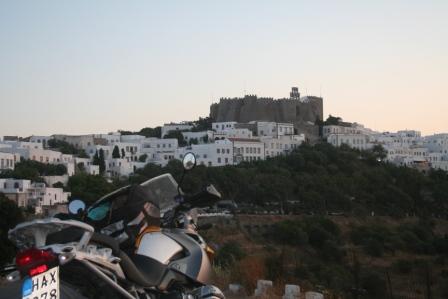
Zakynthos island, Tour of Peloponnese, Elafonisos, August 2009 with Andreas, George and 3 BMW 1200 GS.
In Zakynthos, we stayed in Laganas, a place famous for his drunk young tourists.
However,
most of the island is destroyed by touristic overdevelepment, and in
certain places it reminded me of thirld world destinations (notably,
Phuket in Thailand).
The good thing is that it is cheap and close to the mainland (1 hour by boat from Kylini, on the west coast of Peloponesse).
The
bad thing is that it is dangerous for driving (too many drunk kids on
4-wheel bikes, at any time of the day and night), and you should
stick to beer unless the bar-tender is your brother (all hard
drinks are tampered).
Andreas on the boat to Zakynthos - George and I relaxing after dinner at Porto Roma, at the southernmost tip of the island.
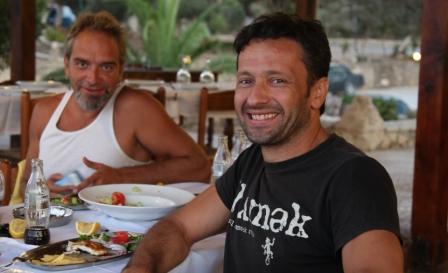
I
did tours of Peloponnese in 2000 and 2005, and I remembered them as the
best tours that somebody could do in a few days. This summer, I reached
the same conclusion again.
Peloponnese has a huge variety of
landscapes and interesting places in a rather small area: the beautiful
long beaches on the west, the green mountains of Arcadia, the towers of
Mani,
the castle of Monemvasia, the ancient monuments around Olympia, the orange groves of Argolida etc. etc. As good as it gets.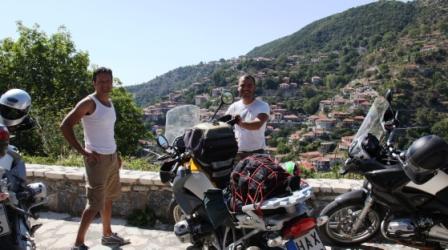
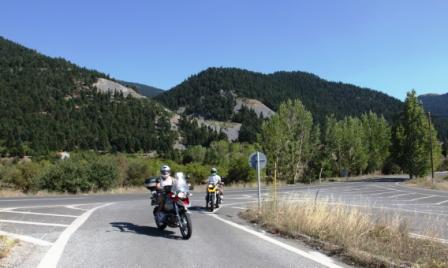
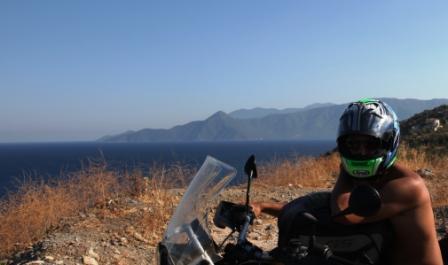
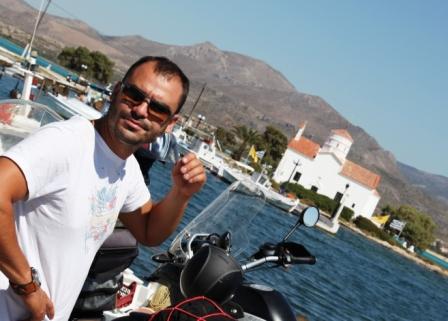

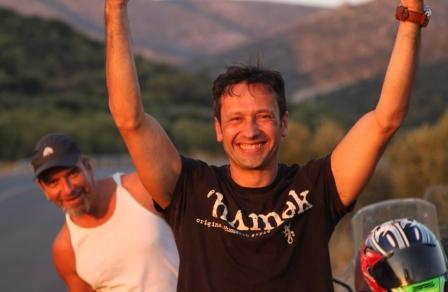
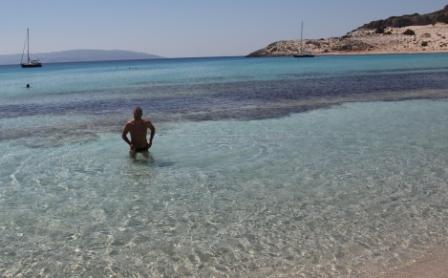
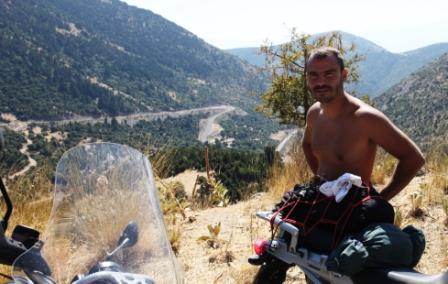
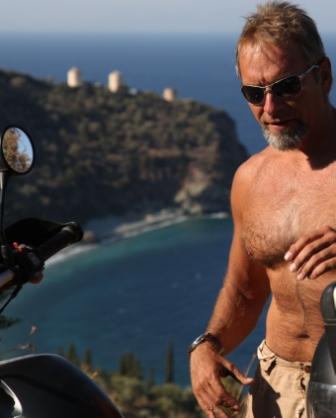
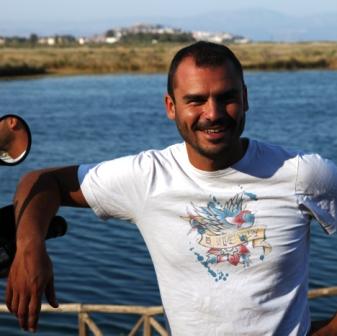
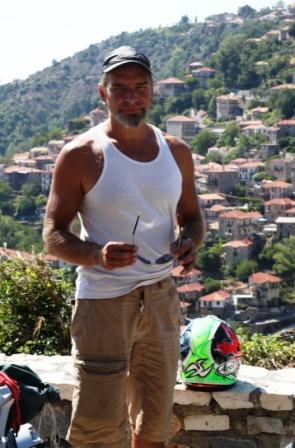



2008
Balkans - Moldova - Ukraine, July 2008 with Andreas, Tony and 3 BMW 1200 GS.
We started from southern Greece and rode for almost 1000 km to reach the north-eastern borders with Turkey.
A quick relief stop on the way - Andreas on a bridge over Evros river, Edirne Turkey.
The
roads in Turkey and Bulgaria were full of animals (we came face-to-face
with a couple of donkeys and cows, among others), and should be driven
carefully (more on this topic later).
Our first night was spent in Burgas, Bulgaria. Here relaxing on the beach.
The
next stop-over was in Costanza, Romania. We followed the coastal route
from Burgas, which is not very interesting, except for the extensive
construction (mostly touristy) in Bulgaria.
My opinion is that they
are ruining whatever landscape was there. From Costanza we continued
north, towards the Danube delta. The land is mostly flat and the road
mostly straight.
Upon reaching Tulcea (Romania - near the border with Ukraine), we turned west towards Galazi.
Here, waiting for the ferry to cross Danube (Galazi in the background).
Galazi
is next to the border with Moldova, where logic stops, and the fun (or
nightmare, depending on how you see it and whom you meet) begins.
At
the customs, there was an artificial queue of cars so that people would
pay to get in front. This queue crossed a railroad line. Fortunately,
the train stopped until people moved their cars.
On the positive side, the small bribes in official Moldova is nothing compared to what came later.
The
south part of Moldova is considered the poorest area in Europe and has
some of the worst roads I have ever driven (in comparison, the
afore-mentioned roads in Bulgaria and Turkey seem like highways).
Due
to the delay at the customs, we had to ride at night and under a severe
thunderstorm. Eventually, we arrived at the capital Chisinau at
midnight.
Chisinau is a rather lively city that combines soviet with western influences.
In order to go from Chisinau to Odessa (Ukraine), we had to drive around 50 kms in Transnistria,
officially a part of Moldova, but in reality a no-man's land governed
by gangsters with soviet era uniforms playing custom-officers/policemen
in a non-existent country.
It took us about 5 hours and 500 Euros to cross these 50 kms, as we were asked to pay 5 times (for non-existent reasons).
Below,
a "highway" in Transnistria, probably the most expensive in the world,
and the necessary cigarette immediately after entering Ukraine.
Odessa
is a beautiful city. Furthermore, its reputation regarding good-looking
women is true. Here Andreas, trying (unsuccessfully) to mingle with the
crowd.
On
the way back, we took a different road south-west towards the Danube
delta (Ukraine side), which is worth visiting (and avoids Transnistria).
After
a short re-entry in Moldova and the usual small bribe (around 5 Euros -
this is not Transnistria), we reached Romania, i.e., the civilized
world (I never thought I would say that).
The most interesting event
in Romania happened during a quick stop at a rather busy road between
Galazi and Bucharest, when we realized that we were surrounded by
hashish trees.
On
the route from Romania to Bulgaria we found some heavy rain.
Nevertheless, when the goings get tough, the tough get going, and we
arrived safe in Sofia.
The last day we crossed South Bulgaria and re-entered Greece (i.e., the really civilized world, although some western Europeans may disagree).
Conclusion: in some sense it was good to visit the last wild part of Europe, but I would avoid the Transnistria experience again at any cost. Take good care of your bikes before the trip - in certain areas, even a flat tyre may cause serious problems.
There is a lot of car/bike theft in Ukraine and Bulgaria - leave your bikes in guarded garages. The customs are always time-consuming (even when you do not have to bribe). A GPS would have been very helpful, especially for navigating inside the cities. Do not expect people to speak English.
Bonus pictures: Tour of Chalkidiki (second leg) in Northern Greece. Impressive landscape and beaches.
2007
In 2007, I had three motorbikes: a BMW 1200 GS in Greece, a Yamaha FZ1-N in Hong Kong and a Yamaha FZ6-S in Singapore, where I stayed most of the year.
Malaysia Tours
September 2007: Tour of South Malaysia.
I started from Singapore with FZ6 for a tour of Southeast Malaysia – on the road from Johor to Mersing
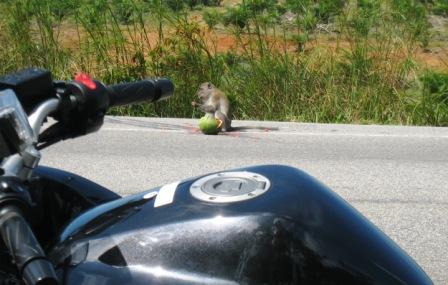
Pulau Tioman


Although there are some excellent roads, the tropical heat and storms do not make riding very pleasant.
April 2007: Tour of central and eastern Malaysia.
The road from Singapore to Kuala-Lumpur is an almost straight highway (and bikes do not have to pay tolls).
Then, I crossed Malaysia west-east and rode along the eastern coastline.
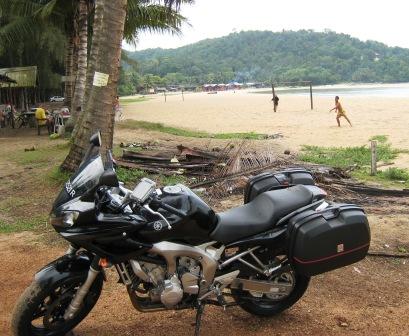
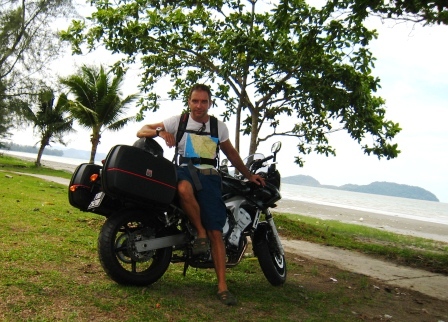
The best part was in the hills/mountains of the Malay interior. Curvy roads and relatively low temperatures.
2006
Greece-Italy-France-Turkey
I first made a stop in Perugia, Italy to see Tony.
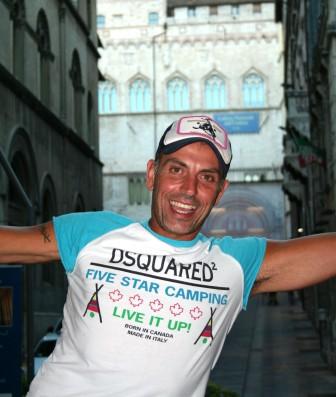
Next, I continued to France, where I spent a week in to Montpellier.
Here mountain-climbing.
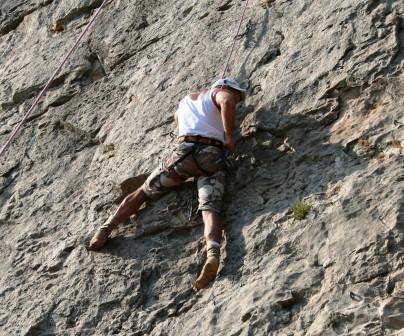
Upon return to Greece, I joined Andreas for a tour of Northern Greece (here in Kavala),
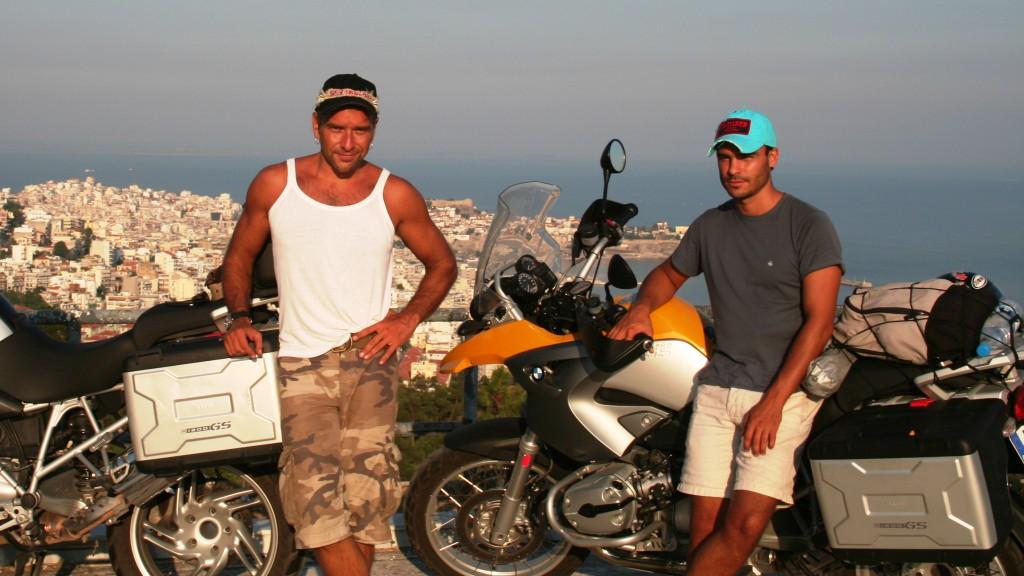
and Turkey.

Our first stop Constantinople (Istanbul), a city with impressive monuments.
Agia Sofia
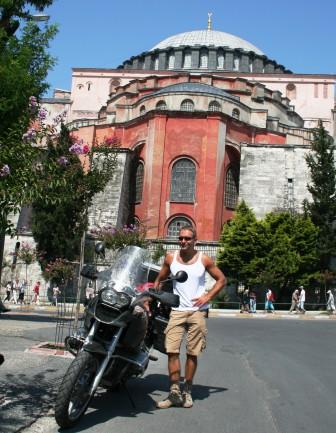
and Golden Horn Bridge.
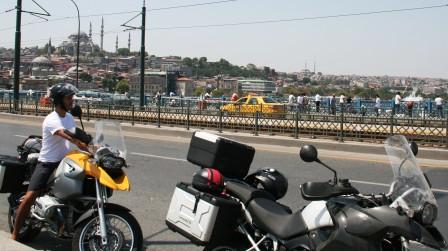
Then, we continued south, towards the Aegean coast. Below, Canakkale, in Asia Minor.
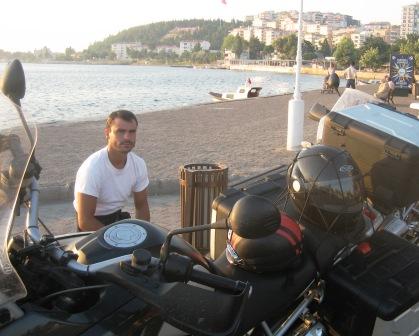
Camping on the way.
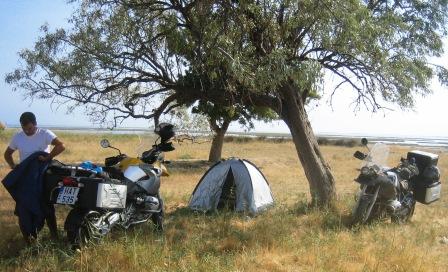
Tired and dirty, we reached Cesme, where we took the little ferry to Chios - the Greek island on the other side.
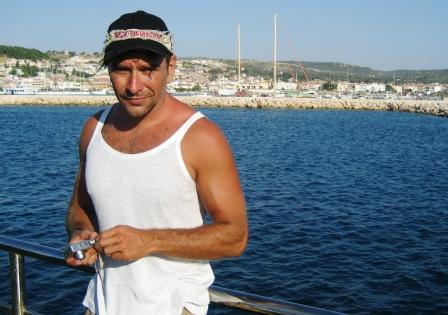
Despite not being a very popular tourist destination, Chios offers some of the best landscape / bike routes
and beaches, that I have ever seen.
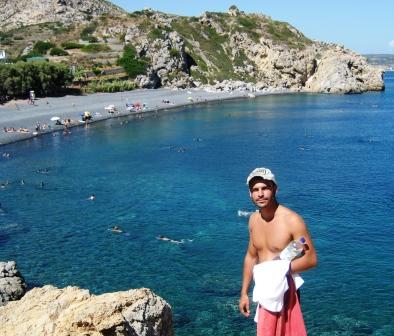
2005
Southern France, Basque Country, Madrid, Pyrenees with Sophie
Southern France: Carcassone and Foix
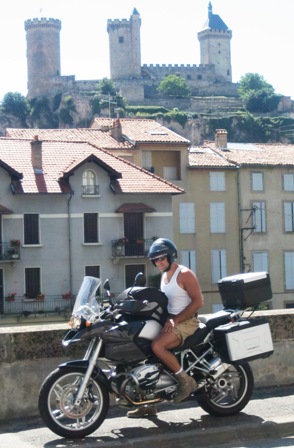
Near the border with Spain: every village and a castle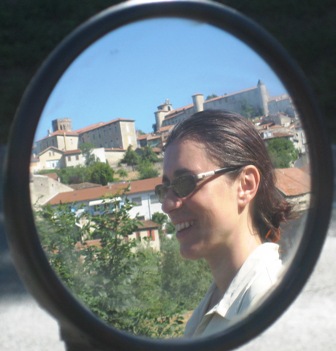
Basque Country: San Sebastian
and Bilbao (Guggenheim museum)
Santander, Cantabria, Spain. Beach on the Atlantic Ocean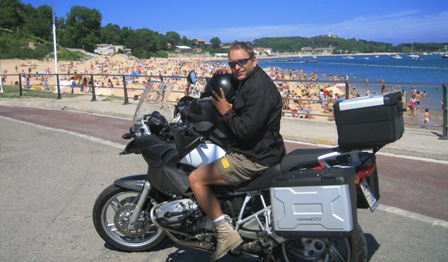
The flat land to Madrid and sightseeing there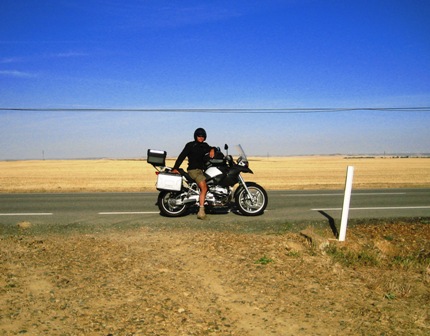

Going up the Pyrenees from the Spanish side
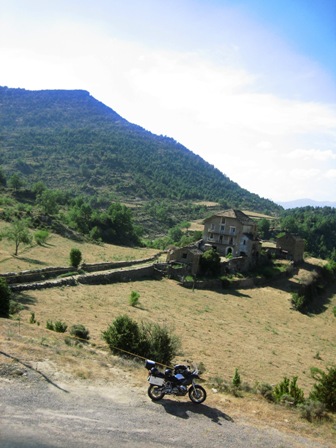
and traveling around the mountains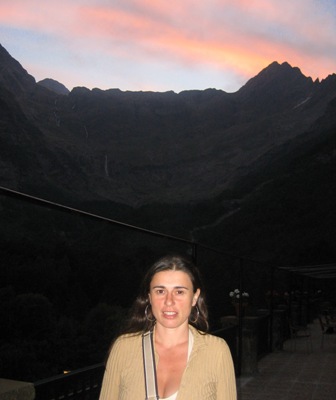
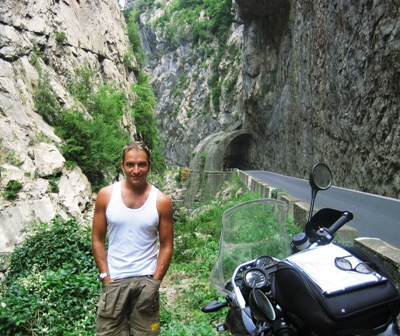
about 7,000 km in 10 days. Very nice and good shopping if you stop in Andorra (especially for bike stuff).